A DIFFERENT PERSPECTIVE
PAPER, CARDBOARD AND WOOD
PHARMACEUTICAL PACKAGING
PACKAGING & MERCHANDISING Nº70 NEWS
PACKAGING DESIGN,
the way to circularity
paper marks
VPC GREEN BEAUTY AWARDS EN PACKAGING SOSTENIBLE A LOS
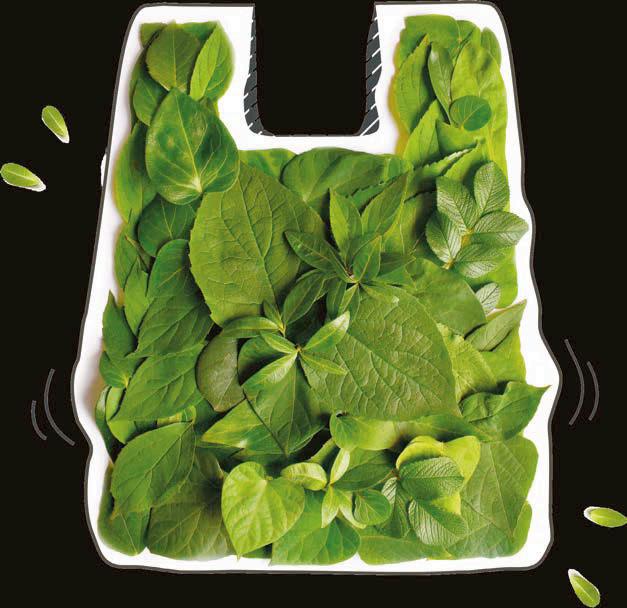
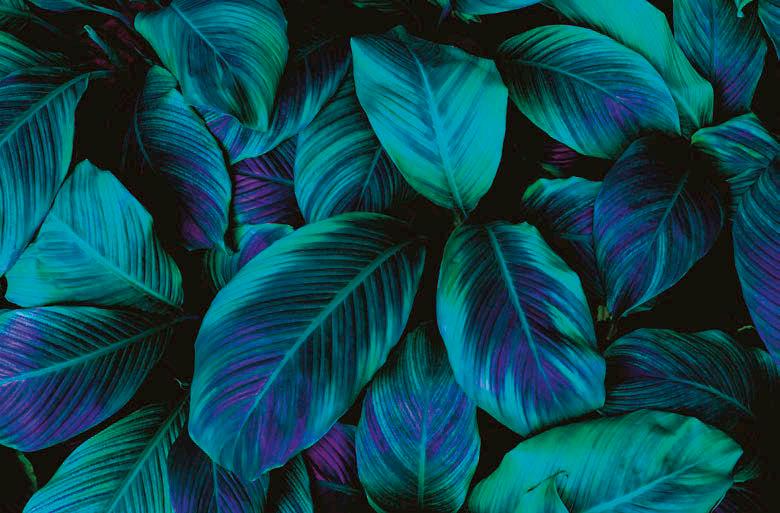

GREEN BEAUTY AWARDS
CONOCE LOS CANDIDATOS
✓MEJOR EMPRESA COMPROMETIDA CON LA SOSTENIBILIDAD ✓MEJOR EMPRESA JOVEN ECO

✓MEJOR MARCA ECO ✓MEJOR NOVEDAD ECO-SELECTIVA ✓MEJOR NOVEDAD ECO-NICHE
✓MEJOR NOVEDAD ECO-LIFESTYLE ✓MEJOR NOVEDAD ECO-PARAFARMACIA
✓PREMIO DEL PÚBLICO AL MEJOR PRODUCTO COSMÉTICO ECO
✓MEJOR MATERIA PRIMA SOSTENIBLE ✓MEJOR NOVEDAD ECO DE E-COMMERCE

✓MEJOR INICIATIVA VERDE SOLIDARIA ✓MEJOR INICIATIVA VERDE DE LA DISTRIBUCIÓN
✓MEJOR PACKAGING SOSTENIBLE ✓MEJOR CAMPAÑA ECO www.vpcgreenbeautyawards.com
NUEVA
CATEGORÍA
2023
Investigar y colaborar
Innovación y sostenibilidad son dos conceptos que inevitablemente surgen como base del futuro del sector. Pero no hay que olvidar que van unidos a la Investigación, a la I+D de las empresas y entidades, de forma transversal a lo largo de toda la cadena de valor. La clave es la colaboración, ya sea público-privada o entre empresas privadas, para crear sinergias que posibiliten el desarrollo y dinamización de proyectos que contribuyan a encontrar la mejor solución en cada caso, que aporten valor y mejoren la competitividad empresarial. En nuestro país, la investigación está dando sus frutos, como demuestran los buenos resultados de los proyectos emprendidos por centros tecnológicos, clústeres, universidades y otras entidades. Un ejemplo son los premios conseguidos por empresas del sector, como es el caso de Rotor Print, que ha sido galardonada con un Premio Pharmapack 2023 en la categoría Eco-Design, por desarrollar un blíster 100 % PET, que ofrece una barrera equivalente a la tradicional tapa de aluminio o PVC. Precisamente el packaging farmacéutico es el tema de uno de los artículos de este número, en el que se constata, entre otras tendencias, la importancia de los productos centrados en el paciente, del diseño basado en el usuario y de los dispositivos médicos creados teniendo en cuenta su reciclaje.
Los criterios sostenibles marcan la hoja de ruta de las empresas fabricantes de papel y cartón, además de los cambios legislativos y el aumento de costes de materia prima, energía y transporte. Papel, cartón y madera protagonizan nuestro dossier central. Y protagonistas de este número son también los profesionales que entrevistamos, los directivos de Mayoly, Juver Alimentación, Sutil, Repot (dentro del espacio del Packaging Cluster) y el responsable de sostenibilidad de Glovo, que nos hablan del packaging de sus productos. ¡Buena lectura!

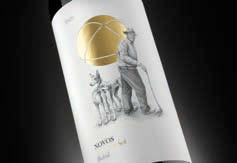
Investigate and collaborate
Innovation and sustainability are two concepts that inevitably emerge as the basis for the future of the sector. But we must not forget that they are linked to Research, to the R&D of companies and entities, transversally throughout the entire value chain. The key is collaboration, whether public-private or between private companies, to create synergies that enable the development and dynamization of projects that contribute to finding the best solution in each case, that add value and improve business competitiveness.
In our country, research is bearing fruit, as demonstrated by the good results of the projects undertaken by technology centers, clusters, universities and other entities. An example is the awards won by companies in the sector such as Rotor Print, which has been awarded a 2023 Pharmapack Award in the Eco-Design category, for developing a 100% PET blister, which offers a barrier equivalent to the traditional aluminum or PVC cover.
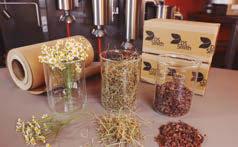
Pharmaceutical packaging is precisely the subject of one of the articles in this issue, which confirms, among other trends, the importance of patient-focused products, user-based design and medical devices created taking into account its recycling. Sustainable criteria mark the roadmap of paper and cardboard manufacturing companies, in addition to legislative changes and the increase in raw material, energy and transport costs. Paper, cardboard and wood are the stars of our central dossier. And the stars of this issue are also the professionals we interviewed, the managers of Mayoly, Juver Alimentación, Sutil, Repot (within the Packaging Cluster space) and the head of sustainability at Glovo, who talk to us about the packaging of their products. Good reading!
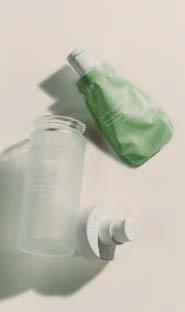
03
2
CHOICE EDITOR’S Sutil . P. 32 3 Mayoly. P. 6 Texen. P. 14 1 DS Smith. P. 37 4

06 ENTREVISTA INTERVIEW
Guadalupe Arnal - Mayoly
12 INNOVACIÓN INNOVATION
Lumson >Avène
Quadpack
Stoelzle Masnières Parfumerie >Parfums de Marly
Sisley
Texen/Bormioli Luigi >Stella McCartney
FaiveleyTech >MCM
Stoelzle Masnières Parfumerie >La Colline
El Ganso
18 NOTICIAS NEWS
El packaging farmacéutico se centra en el paciente y la sostenibilidad Pharmaceutical packaging focuses on the patient and sustainability
26 PUBLI-REPORTAJE ADVERTORIAL Vetroelite
28 CREATIVIDAD CREATIVITY
Little Buddha Series Nemo Delamata
Marco Arroyo-Vázquez
Salvi Design
F3 Brands
32 ENTREVISTA INTERVIEW
Gabriel Morales - Sutil
37 TEMA CENTRAL MAIN TOPIC
Papel, cartón y madera: un futuro marcado por los cambios legislativos y la economía circular Paper, cardboard and wood: future marked by legislative changes and the circular economy
46 ENTREVISTA INTERVIEW
Víctor Enciso - Glovo
51 TENDENCIAS TRENDS
Digitalización, sostenibilidad y diseño: las tendencias del 2023 Digitization, sustainability and design: the trends of 2023 by Serena Rebollo
54 CLÚSTER DEL PACKAGING
Actualidad Latest news
Proyectos Projects
Entrevista Interview
Alejandro Roset - Re-pot market
58 SOSTENIBILIDAD SUSTAINABILITY
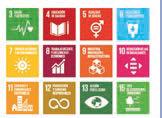
Noticias sobre sostenibilidad y packaging News about sustainability and packaging


63 NOTICIAS NEWS
Actualidad del mundo del packaging News in the world of packaging

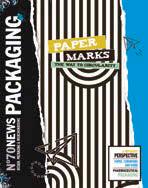
76 NP FOOD ENTREVISTA INTERVIEW
José Francisco Hernández Perona - Juver Alimentación NOTICIAS NEWS
SOSTENIBILIDAD SUSTAINABILITY FOODIES Nuevos productos New products
86 FERIAS Y EVENTOS TRADE FAIRS & EVENTS
Paris Packaging Week 2023 Pick and Pack 2023
90 AGENDA
DIRECTORA / EDITOR-IN-CHIEF
Maica García: newspackaging@podiumgm.com
Tel.: +34 932531628
DIRECTORA DE ARTE / ART DIRECTOR
Lorena Torres: ltorres@podiumgm.com
DIRECTOR TÉCNICO DE EDICIÓN / TECHNICAL DIRECTOR
Daniel Pérez: dperez@podiumgm.com
DISEÑO Y MAQUETACIÓN / DESIGN AND LAYOUT
Òscar Julián: ojulian@podiumgm.com
Daniel Pérez: dperez@podiumgm.com
PUBLICIDAD / ADVERTISING
Carles Solsona: csolsona@podiumgm.com
Tel.: +34 629509895
Ada Bergillos: adabergillos@podiumgm.com
Tel.: +34 657569277
ENVÍOS Y SUSCRIPCIONES / DELIVERIES AND SUBSCRIPTIONS
Elena Moreno: emoreno@podiumgm.com Tel.: +34 667487716
D.L.: B-13438-2012 ISSN: 2014-6493 ISSN DIGITAL: 2014-8690
www.newspackaging.es
RESPONSABLE DIGITAL / CHIEF DIGITAL OFFICER

Marc Florensa: mflorensa@podiumgm.com
EMPRESA EDITORA: PODIUM GLOBAL MEDIA, S.L. Pau Claris, 138, 1º 3ª Tel.: 93 434 21 21 08009 Barcelona (España) podium@podiumgm.com

05
Diseño Portada Cover design Podium Global Media
www.newspackaging.es pinterest.com/newspackaging News Packaging Magazine
Podium Global Media inicia en 2020 su planificación y adaptación de los Objetivos de Desarrollo Sostenible. Por ello, queremos compartir los avances y logros obtenidos y fomentar la implantación de estos ODS a nuestros clientes y proveedores para alcanzar los objetivos de la Agenda 2030.
Laboratoires Mayoly es una empresa francesa referente internacional en gastroenterología y dermocosmética, presente en más de 70 países. En España, inician su actividad en 2015 y comercializan las marcas dermocosméticas Topicrem, BeauTerra y Kaidax.
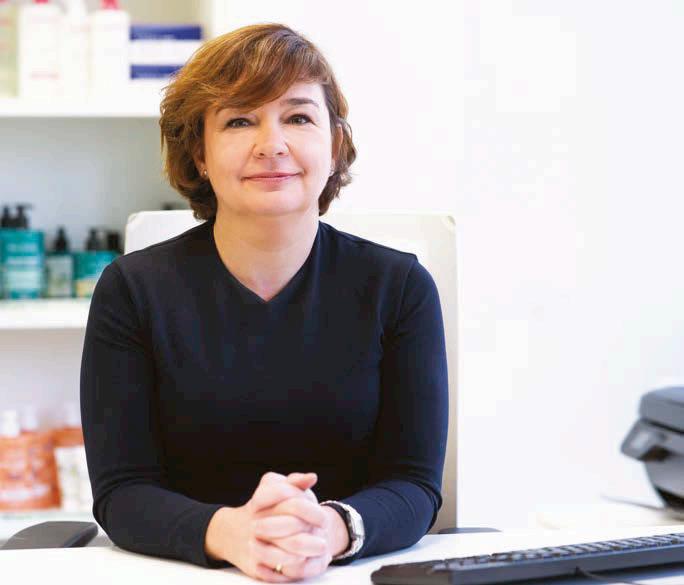
Laboratoires Mayoly is a French company that is an international benchmark in gastroenterology and dermocosmetics, present in more than 70 countries. In Spain, they started their activity in 2015 and market the dermocosmetic brands Topicrem, BeauTerra and Kaidax.
Guadalupe Arnal
Directora general General Manager
Laboratoires Mayoly España
06 ENTREVISTA I INTERVIEW
«La misión de Mayoly es el compromiso con la salud de sus pacientes cada día»
"Mayoly's mission is the commitment to the health of its patients every day"
Laboratorios Mayoly cuenta con una larga historia. ¿Cuándo se fundó? ¿Cuál es su misión?
Mayoly es un laboratorio farmacéutico internacional francés, familiar e independiente, fundado en 1909. Presente en más de 100 países y con más de 2.200 colaboradores en todo el mundo. Los ejes estratégicos de desarrollo para Mayoly son la gastroenterología y la dermocosmética, aunque trabajamos áreas terapéuticas como la reumatología, ORL, diagnóstico o productos de Health Care como probióticos y complementos nutricionales. La misión de Mayoly es, sin duda, el compromiso con la salud de sus pacientes cada día.
¿Cuál es la función de las asociaciones científicas asociadas con Laboratorios Mayoly?
Trabajamos codo con codo con diversos especialistas de la salud, médicos, pediatras, farmacéuticos, dermatólogos en todo el mundo, asociaciones científicas, así como con hospitales en la investigación y el tratamiento en distintas áreas terapéuticas. Destacaría el trabajo que se realiza junto con el Hospital Universitario Infantil Necker en París, que es un referente mundial en la investigación de las
afecciones dermatológicas de la piel, de origen genético, donde tenemos varios programas centrados en enfermedades menos frecuentes como la Ictiosis, el albinismo, el vitíligo, que ha ayudado a numerosos niños a mejorar la calidad de vida de su día a día y sentirse bien en su piel.
Están presentes en más de 70 países. En España, inician su actividad en 2015. ¿Qué representa nuestro país para Mayoly?
Mayoly llega efectivamente a España en 2015 con la adquisición de algunos productos dermocosméticos de Laboratorios Thea. Inicialmente se centra en la actividad de visita médica para un par de años después arrancar la visita a farmacia.

España representa para Mayoly un mercado potencial estratégico y muy importante en los próximos años. En la actualidad solo se comercializan las marcas dermocosméticas de Mayoly en nuestro país (Topicrem, BeauTerra y Kaidax) y ningún fármaco u otros productos de Health Care como probióticos, pero la idea es desarrollar el mercado español, poder ampliar las líneas de negocio y convertir a la filial en una de las más potentes de Europa.
Producen medicamentos, productos dermocosméticos, complementos alimenticios y medical devices. ¿Qué porcentaje de su facturación corresponde a cada segmento?
El porcentaje mayoritario es el de Consumer Healthcare, probióticos, complementos alimenticios y medicamentos OTC suponen el 50 % de nuestra cifra de negocio. Los fármacos de gastroenterología, origen de la empresa, suponen hoy el 30 % de la cifra global. La dermocosmética, el 10 % de la cifra de negocio. Toda nuestra línea de negocio de diagnóstico supone el 5 % y por último el 5 % restante proviene de la fabricación a terceros, ya que tenemos cinco centros de producción en Francia.
Cuentan con la dermocosmética Topicrem, la línea capilar Kaidax, y BeauTerra. ¿Puede definirnos brevemente las tres marcas?
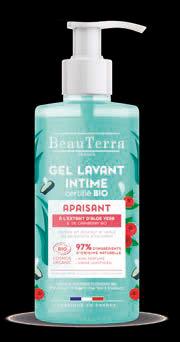

Topicrem, marca dermatológica, destinada a las pieles sensibles de toda la familia. Representa la dermatología del bienestar. Topicrem se caracteriza por su rigurosidad científica, la pureza de sus activos y eficacia de sus fórmulas, unida a galénicas sensoriales que permiten el bienestar del paciente o consumidor. Topicrem aporta respuestas innovadoras a diferentes alteraciones de la piel, desde las más dermatológicas como la dermatitis atópica, la queratosis actínica o el acné, a las más cosméticas como las hiperpigmentaciones y el envejecimiento.
Kaidax es la marca especialista en la caída capilar. Formulaciones nacidas del trabajo de 10 dermatólogos, para garantizar la máxima
07 ENTREVISTA I INTERVIEW
‘
España representa para Mayoly un mercado potencial estratégico y muy importante en los próximos años Spain represents a strategic and very important potential market for Mayoly in the coming years
eficacia para los casos de caída androgenética, reaccional o post parto.
BeauTerra es la marca más reciente del laboratorio. Una marca sostenible desde su fórmula hasta el packaging, que cumple todos los requisitos de una marca natural, vegana, con certificaciones Bio a través de los organismos más exigentes como Ecocert. Una marca familiar que aúna por primera vez en una marca Eco los formatos grandes a precio asequible, sin renunciar a la máxima eficacia y sensorialidad en productos de higiene capilar, corporal e íntima.

Marcas dinámicas que aportan soluciones innovadoras a las diferentes necesidades del consumidor, así como de la piel y el cabello.


¿Se distribuyen únicamente en farmacias? Sí, solamente en farmacias y parafarmacias autorizadas.
¿Cómo están posicionadas en nuestro país? Actualmente la marca más consolidada es Kaidax, ya que proviene de Laboratorios Thea y es prescrita por dermatólogos desde hace años por su alta eficacia y fórmula muy completa en la solución de la caída del cabello. Después viene Topicrem, donde poco a poco nos vamos consolidando en el Top 15 de las marcas de hidratación corporal en nuestro país, puesto que este es el pilar principal de la marca y su expertise. BeauTerra es una marca que cumple ahora un año en España y que poco a poco está posicionándose como referente en las farmacias españolas, como una marca sostenible natural, familiar y con una relación calidad-precio excepcional.
¿Qué importancia conceden a su packaging? El packaging es sumamente importante en estos momentos para Mayoly, innovar en el
mismo, aportar formatos adaptados a las necesidades del consumidor (formatos grandes, con pompa dosificadora o formatos rellenables). Cada vez más, el consumidor exige envases innovadores, cómodos y sobre todo concienciados con el medio ambiente.
¿Qué materiales utilizan? ¿Tienen en cuenta su posterior reciclaje?
En la marca BeauTerra contamos ya con una marca donde todos sus envases son reciclados (97 % del plástico) y reciclables. En Topicrem todos los envases son reciclables y estamos trabajando para que provengan igualmente de plástico reciclado. Es fundamental el poder aportar, al consumidor y al medio ambiente, las soluciones que se requieren en estos momentos de forma comprometida y alineada a los valores de nuestras marcas.
¿Están teniendo en cuenta medidas de ecodiseño?
¿Tienen un departamento propio?
Este eje es para nosotros estratégico. Tenemos nuestro propio departamento que trabaja con distintos proveedores de confianza, para exigir un diseño y soluciones a nivel de packaging que incluso se anticipen a las nuevas regulaciones.
08 ENTREVISTA I INTERVIEW
Topicrem se caracteriza por su rigurosidad científica, la pureza de sus activos y eficacia de sus fórmulas, unida a galénicas sensoriales
‘
Topicrem is characterized by its scientific rigor, the purity of its active ingredients and the effectiveness of its formulas, together with sensory galenics
¿Cuentan con un plan de sostenibilidad? ¿Qué medidas llevan a cabo para mejorar el impacto ambiental de su producción y de sus productos? Efectivamente, Mayoly está muy concienciado y cuenta con un plan bien trazado de sostenibilidad y eco concepción de los productos. Muestra de esto es que ya tenemos algunas gamas con certificación Bio. Para obtener dicha certificación, uno de los requisitos es reducir al máximo las emisiones de CO2 y, por tanto, cultivar y fabricar a poca distancia. Nuestro eje de desarrollo nos lleva hacia poder ir reformulando nuestros productos para garantizar un porcentaje de naturalidad superior al promedio actual (por encima del 90 %) y además mejorar procesos de fabricación y logística para reducir al máximo nuestra huella sobre el medio ambiente.
¿Tienen previsto realizar lanzamientos de sus marcas en este año?
Sí, tenemos un plan de innovación bastante dinámico en 2023, con 24 nuevos productos entre nuestras tres marcas, lo cual muestra nuestro dinamismo y exigencia.
¿Qué objetivos se plantean a corto y a largo plazo? En el corto plazo los laboratorios Mayoly están centrados en poder convertirse en uno de los laboratorios referentes en Health Care europeo, así como poder ampliar el catálogo de productos con la adquisición de nuevas marcas que aporten distintas líneas de negocio e innovación. En el largo plazo: objetivo 2027, alcanzar los 600 millones de facturación a nivel mundial y convertirse en un referente de la salud.
Laboratories Mayoly has a long history. When it was founded? What is its mission?
Mayoly is a French, family-owned and independent international pharmaceutical laboratory, founded in 1929. Present in more than 100 countries and with more than 2,200 employees worldwide. The strategic axes of development for Mayoly are gastroenterology and dermocosmetics, although we work in therapeutic areas such as rheumatology, ENT, diagnosis or Health Care products such as probiotics and nutritional supplements. Mayoly's mission is, without a doubt, the commitment to the health of its patients every day.
What is the role of the scientific associations associated with Mayoly Laboratories?
We work closely with various healthcare specialists, physicians, paediatricians, pharmacists, dermatologists around the world, scientific associations, as well as hospitals on research and treatment in various therapeutic areas. I would highlight the work carried out together with the Necker Children's University Hospital in Paris, which is a world benchmark in the investigation of dermatological skin conditions of genetic origin, where we have several programs focused on less frequent diseases such as Ichthyosis, albinism, vitiligo, which has helped numerous children improve the quality of their day-to-day life and feel good in their skin.
The company is present in more than 70 countries. In Spain, Mayoly started their activity in 2015. What does our country represent for Mayoly?
Mayoly actually arrived in Spain in 2015 with the acquisition of some dermocosmetic products from Laboratorios Thea. Initially it focuses on the activity of medical visits for a couple of years after starting the visit to the pharmacy.
Spain represents a strategic and very important potential market for Mayoly in the coming years.
Currently, only the Mayoly dermocosmetic brands are marketed in our country (Topicrem, BeauTerra and Kaidax) and no drugs or other Health Care products such as probiotics, but the idea is to develop the Spanish market, to be able to expand the business lines and convert to the subsidiary in one of the most powerful in Europe.
The company produce medicines, dermo-cosmetic products, food supplements and medical devices. What percentage of your billing corresponds to each segment?
The majority percentage is that of Consumer Healthcare, probiotics, food supplements and OTC drugs account for 50% of our turnover. Gastroenterology drugs, origin of the company, today account for 30% of the global figure. Dermocosmetics, 10% of the turnover. Our entire diagnostic business line accounts for 5% and finally the remaining 5% comes from manufacturing to third parties, since we have five production centers in France.
Mayoly has the Topicrem dermocosmetics, the Kaidax hair line, and BeauTerra. Can you briefly define the three brands?
Topicrem, dermatological brand, intended for sensitive skin of the whole family. It represents the dermatology of well-being. Topicrem is characterized by its scientific rigor, the purity of its active ingredients and the effectiveness of its formulas, together with sensory galenics that allow the well-being of the patient or consumer. Topicrem provides innovative responses to different skin disorders, from the most dermatological ones such as atopic dermatitis, actinic keratosis or acne, to the most cosmetic ones such as hyperpigmentation and aging. Kaidax is the specialist brand in hair loss. Formulations born from the work of 10 dermatologists, to guarantee maximum effectiveness in cases of androgenetic, reactional or postpartum hair loss.
BeauTerra is the newest brand from the lab. A sustainable brand from its formula to the packaging, which meets all the requirements of a natural, vegan brand, with Bio certifications through the most demanding organizations such as Ecocert. A family brand that combines large formats at an affordable price for the first time in an Eco brand, without sacrificing maximum efficacy and sensoriality in hair, body
09 ENTREVISTA I INTERVIEW
BeauTerra es una marca sostenible desde su fórmula hasta el packaging. Todos sus envases son reciclados (97 % del plástico) y reciclables
‘
BeauTerra is a sustainable brand from its formula to its packaging. All its packaging is recycled (97% of the plastic) and recyclable
and intimate hygiene products. Dynamic brands that provide innovative solutions to the different needs of the consumer, as well as skin and hair.
Are the brands only distributed in pharmacies?
Yes, only in authorized pharmacies and parapharmacies.
How are they positioned in our country?
Currently the most established brand is Kaidax, since it comes from Thea Laboratories and has been prescribed by dermatologists for years due to its high efficacy and very complete formula in solving hair loss. Then comes Topicrem, where little by little we are consolidating in the Top 15 body hydration brands in our country, since this is the main pillar of the brand and its expertise. BeauTerra is a brand that is now one year old in Spain and that little by little oco is positioning itself as a benchmark in Spanish pharmacies, as a natural, family-friendly sustainable brand with exceptional value for money.
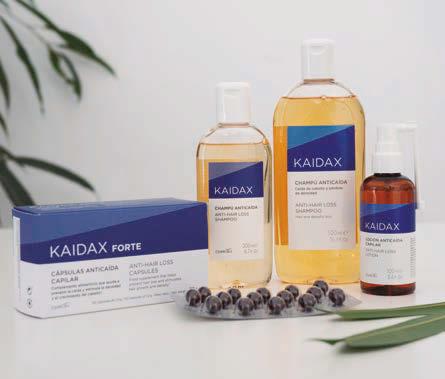
How important is its packaging?
Packaging is extremely important right now for Mayoly. Innovate in it, provide formats adapted to the needs of the consumer (large formats, with a dosing pump or refillable formats). Consumers are increasingly demanding innovative, comfortable and, above all, environmentally conscious packaging.
What materials do you use? Do you take into account its recycling?
In the BeauTerra brand we already have a brand where all its packaging is recycled (97% of plastic) and recyclable. At Topicrem all packaging is recyclable and we are working so that it also comes from recycled plastic. It is essential to be able to provide, to the consumer and the environment, the solutions that are required at this time in a committed manner and aligned with the values of our brands.
Are you taking ecodesign measures into account?
Do you have your own department?
This axis is strategic for us. We have our own department that works with different trusted suppliers, to demand a design and solutions at the packaging level that even anticipate the new regulations.
Do you have a sustainability plan? What measures do you carry out to improve the environmental impact of your production and your products?
Indeed, Mayoly is very aware and has a welldrawn plan for sustainability and eco-design of products. Proof of this is that we already have some ranges with Bio certification. To obtain
this certification, one of the requirements is to reduce CO2 emissions as much as possible and, therefore, cultivate and manufacture within a short distance. Our development axis leads us to be able to reformulate our products to guarantee a percentage of naturalness higher than the current average (above 90%) and also improve manufacturing and logistics processes to minimize our footprint on the environment.
Do you plan to launch new products this year?
Yes, we have a very dynamic innovation plan in 2023, with 24 new products among our three brands, which shows our dynamism and demand.
What goals are set in the short and long term?
In the short term, Mayoly laboratories are focused on being able to become one of the benchmark laboratories in European Health Care, as well as being able to expand the product catalog with the acquisition of new brands that contribute different lines of business and innovation. In the long term: 2027 goal, reach 600 million worldwide turnover and become a benchmark in health.
10 ENTREVISTA I INTERVIEW
Para Mayoly, es importante innovar en packaging y aportar formatos adaptados a las necesidades del consumidor
‘
For Mayoly, it is important to innovate in packaging and provide formats adapted to consumer needs
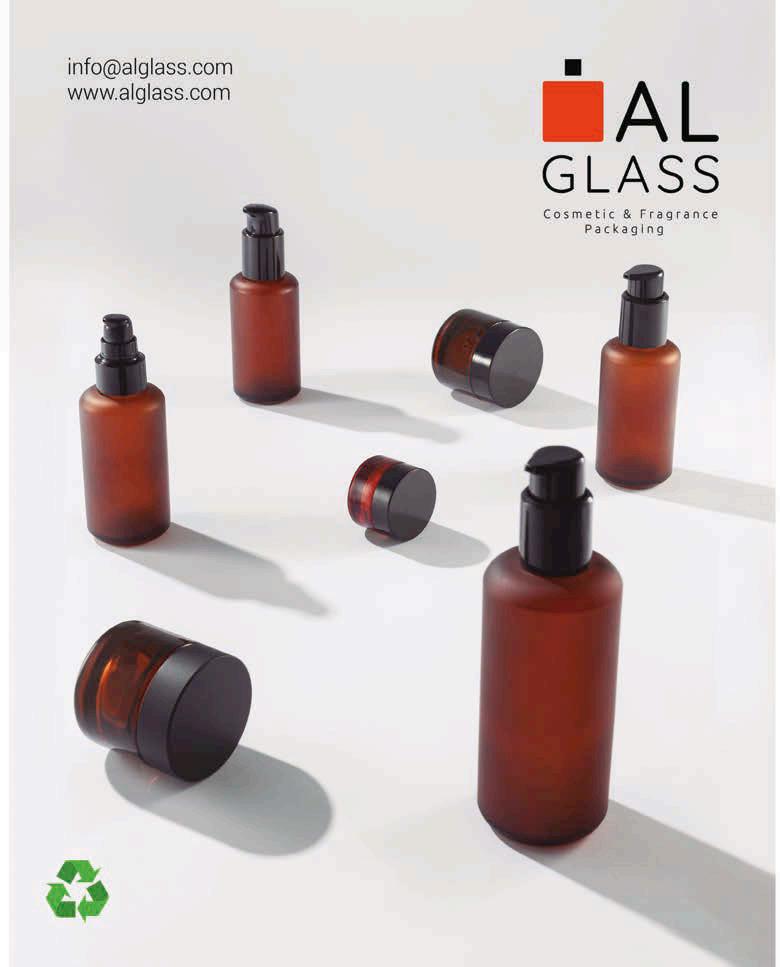
Para Cellular Renewal Cream, se eligió Re Place, el frasco de recarga de 50ml con una taza interna recargable. Una solución innovadora y respetuosa con el medio ambiente, en línea con la política de sostenibilidad del Grupo Pierre Fabre. Equipada con una recarga ecológica que es fácilmente extraíble y reemplazable, la solución de recarga tiene un impacto ambiental positivo.
Se eligió un Envers Glas totalmente personalizado para la Crema de Noche Multi-Intensiva. Envers Glas, con su nuevo modo de dispensación de cosméticos, es un sistema airless con bolsa que combina las cualidades del Envers "clásico" (seguridad y preservación de la integridad de la fórmula) con el prestigioso aspecto del vidrio.
For Cellular Renewal Cream, Re Place was chosen, the 50ml refill jar with a refillable inner-cup. An innovative and eco-friendly solution that is in line with the Pierre Fabre Group’s sustainability policy. Equipped with an eco-refill that is easily removable and replaceable, the refill solution has a positive environmental impact.
A totally custom Envers Glas was chosen for the Multi-Intensive Night Cream. Envers Glas with its new cosmetic dispensing mode, is an airless with pouch system that combines the qualities of the “classic” Envers - safety, and preservation of a formula’s integrity - with the prestigious look of glass.
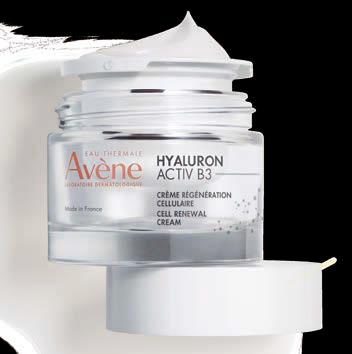
El sistema de cierre Solo Twist de este packaging rellenable permite a zurdos y diestros desenroscar el tapón con un giro de 90 grados. El envase está fabricado íntegramente en madera de bosques europeos gestionados de manera sostenible y cuenta con un espejo en la tapa. Se ha diseñado para albergar un godet plano, metálico y rellenable de 59 mm, fijado en la base con un pequeño imán extraíble que facilita la separación de componentes para su posterior reciclaje. El godet puede extraerse fácilmente para sustituirlo por un recambio.
The Solo Twist closure system of this refillable packaging allows left- and righthanded users to unscrew the cap with a 90 degree turn. The container is made entirely of wood from sustainably managed European forests and has a mirror on the lid. It has been designed to house a 59 mm flat, metallic and refillable godet, fixed at the base with a small removable magnet that facilitates the separation of components for subsequent recycling. The godet can be easily removed to replace it with a
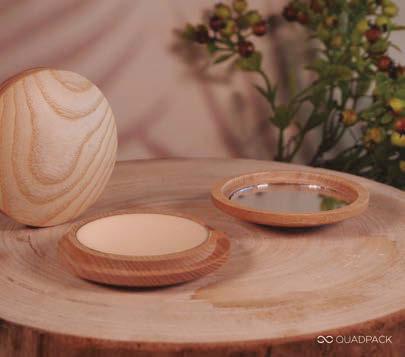
12 INNOVACIÓN I INNOVATION
spare.
LUMSON QUADPACK
Eau Thermale Avène, una marca del Grupo Pierre Fabre, confía en la experiencia y el saber hacer tecnológico de Lumson para su nueva línea Hyaluron Active B3. Eau Thermale Avène, a Pierre Fabre Group brand, relies on Lumson's experience and technological know-how for its new Hyaluron Active B3 line.
Idol Woodacity® Solo Twist Compact es el nuevo miembro de la familia Woodacity® de Quadpack. Idol Woodacity® Solo Twist Compact is the newest member of the Quadpack Woodacity® family.
Parfums de Marly utiliza vidrio de Hauts-de-France tanto para sus perfumes masculinos como femeninos. El frasco de su última fragancia femenina, Oriana, está fabricado por Stoelzle Masnières Parfumerie. Su desafío fue dar vida a un diseño único con un grabado muy refinado. El estilo tenía que mantener la misma delicadeza con cada tamaño de frasco, asegurándose de que el más pequeño no perdiera ninguno de los detalles intrincados.
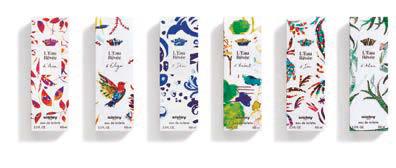
Parfums de Marly utiliza la misma forma de frasco para todos sus perfumes de mujer y hombre, que se diferencian por el color.
Parfums de Marly uses glass from the Hauts-deFrance for both its men's and women's perfumes. The bottle of his latest women's fragrance, Oriana, is made by Stoelzle Masnières Parfumerie. Her challenge was to bring to life a unique design with a highly refined engraving. The style had to maintain the same finesse with each bottle size, making sure that the smallest did not miss any of the intricate detail.
Parfums de Marly uses the same bottle shape for all its women's and men's perfumes, which differ in colour.

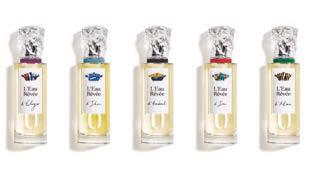
STOELZLE MASNIÈRES PARFUMERIE
El frasco está producido en Francia con el 20 % de cristal reciclado, con cristal reforzado en la parte inferior para crear un mayor efecto de gota. La etiqueta con relieve lleva el nombre escrito por Christine d’Ornano. Un elegante lazo rodea el tapón escultural, en diferentes colores según la fragancia. El tapón es obra del escultor polaco Bronislaw Krzystof. La artista polaca Elzbieta Radziwill es la artífice del packaging exterior.
The bottle is made in France with 20% recycled glass, with reinforced glass at the bottom to create a greater drop effect. The embossed label bears the name written by Christine d'Ornano. An elegant bow surrounds the sculptural stopper, in different colors depending on the fragrance. The stopper is the work of the Polish sculptor Bronislaw Krzystof. The Polish artist Elzbieta Radziwill is the creator of the exterior packaging.
Oriana de Parfums de Marly se presenta a los clientes en un frasco creado por Stoelzle Masnières Parfumerie. Oriana from Parfums de Marly is presented to customers in a bottle created by Stoelzle Masnières Parfumerie.
La colección Les Eaux Rêvées de Sisley está formada por seis fragancias unisex: The Les Eaux Rêvées de Sisley collection is made up of six unisex fragrances: L’Eau Rêvée d’Hubert, L’Eau Rêvée d’Isa, L’Eau Rêvée d’Alma, L’Eau Rêvée d’Aria, L’Eau Rêvée d’Eliya, L’Eau Rêvée d’Ikar.
13 INNOVACIÓN I INNOVATION
SISLEY
Alter-Care de Stella McCartney es una nueva gama de cuidado de la piel, natural, vegana, eficaz y sostenible, con un envase ecodiseñado, reciclable y rellenable. Tanto el sérum como la crema hidratante Restore son recargables. Cada uno contiene una recarga de 50ml alojada dentro de una botella de vidrio rematada con una bomba sin aire que permite usar hasta la última gota del producto. Los recambios también están diseñados para uso onthe-go. Se pueden sacar de su botella y transportar fácilmente gracias a sus tapones dispensadores, lo que garantiza facilidad de uso y un sellado confiable. El embalaje es tanto reciclable como recargable. El pack completo está compuesto por un recipiente de cristal, una bomba airless y una recarga.
Alter-Care by Stella McCartney is a new range of natural, vegan, effective and sustainable skin care, with eco-designed, recyclable and refillable packaging. Both the Restore serum and moisturizer are refillable. Each contains a 50ml refill housed within a glass bottle topped with an airless pump that allows every last drop of product to be used. The refills are also designed for use on-the-go. They can be easily removed from their bottle and transported thanks to their dispensing caps, ensuring ease of use and a reliable seal. The packaging is both recyclable and refillable. The complete pack consists of a glass container, an airless pump and a refill.

Para completar su colección, MCM (bajo licencia con InterParfums USA), vuelve a confiar en FaiveleyTech, quien ya fabricó los dos primeros tapones de sus fragancias.En 2023, MCM Eau de Parfum celebra el Año Nuevo chino con una deliciosa versión en rojo bermellón. FaiveleyTech ha realizado el tapón del spray de diseño único, con las partes exteriores y la placa frontal bañadas en oro, y realzado por una hermosa correa con apariencia de cuero. El tapón del spray se puede adaptar a 3 tamaños: 30ml, 50ml y 75ml. To complete its collection, MCM (under license with InterParfums USA), once again relies on FaiveleyTech, which has already manufactured the first two caps of its fragrances. In 2023, MCM Eau de Parfum celebrates the Chinese New Year with a delicious vermilion red version. FaiveleyTech have made the uniquely designed spray cap, with gold-plated outer parts and faceplate, enhanced by a beautiful leather-look strap. The spray

14 INNOVACIÓN I INNOVATION
LUIGI
cap can be adapted to 3 sizes: 30ml, 50ml and 75ml. Photo: Fred Durantet.
TEXEN/BORMIOLI
FAIVELEYTECH
Para el packaging de la gama Alter-Care, Stella McCartney ha colaborado con Texen y Bormioli Luigi. Está formada por: Limpiador Reset, Serum Alter-Care y Crema Hidratante Restore. For the packaging of the Alter-Care range, Stella McCartney has collaborated with Texen and Bormioli Luigi. It is made up of: Reset Cleaner, AlterCare Serum and Restore Moisturizing Cream.
Lunar New Year MCM Eau de Parfum se viste con un nuevo color y un tapón de FaiveleyTech.
Lunar New Year MCM Eau de Parfum is dressed in a new color and a FaiveleyTech stopper.
PREMIUM PACKAGING FOR FRAGRANCES
M&A Packaging Group, a real full service in supply of all kind of primary packaging materials for perfume and cosmetics. From standard to customized, we provide the best fully integrated packaging solutions for our customers.

M&A Packaging Group, un verdadero servicio integral en el suministro de todo tipo de elementos y envases para la perfumería y la cosmética. Desde envases standard a desarrollos totalmente personalizados, proporcionamos las mejores soluciones de packaging para nuestros clientes.
www.myapackaging.com
sales@myapackaging.com
EL GANSO
NativAge Oil de La Colline se presenta en un envase estándar de Stoelzle Masnières Parfumerie de 30ml, la Classic Slim, una botella cilíndrica, decorada también por el grupo de vidrio en el norte de Francia.
Crear el look perfecto para esta botella comprende tres procesos de acabado: una pulverización de oro cristal sobre la que se aplica una estampación en caliente rosada/dorada con el nombre de la marca La Colline, la serigrafía en tonos marrones en el reverso de la botella y una capa final de barniz que crea una apariencia brillante general, además de ayudar a proteger toda la decoración.
NativAge Oil de La Colline comes in a standard 30ml Stoelzle Masnières Parfumerie container, the Classic Slim, a cylindrical bottle, also decorated by the glass group in northern France.
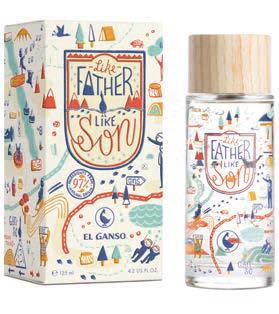


Creating the perfect look for this bottle involves three finishing processes: a crystal gold spray on which is applied a pink/gold hot stamping with the brand name La Colline, the silk-screen printing in brown tones on the back of the bottle and a final coat of varnish that creates an overall glossy appearance, as well as helping to protect all decor.
STOELZLE MASNIÈRES PARFUMERIE
Este Eau de Toilette amaderado especiado, con un 97 % de ingredientes de origen natural, se presenta en un packaging sostenible. El frasco es de vidrio 100 % reciclable y el tapón, de madera certificada PEFC, lleva grabada una rosa de los vientos. Las ilustraciones son obra de Ana Sanfelippo. El estuche está realizado con cartonaje FSC, con el nombre de la fragancia y la marca escrito en braile. Las personas con discapacidad física, psíquica y sensorial de la Fundación Arco Iris han acondicionado esta fragancia. This woody-spicy Eau de Toilette, with 97% ingredients of natural origin, is presented in sustainable packaging. The bottle is made of 100% recyclable glass and the cap, made of PEFC certified wood, is engraved with a wind rose. The illustrations are the work of Ana Sanfelippo. The case is made with FSC cardboard, with the name of the fragrance and the brand written in Braille. People with physical, mental and sensory disabilities from the Arco Iris Foundation have conditioned this fragrance.

16 INNOVACIÓN I INNOVATION
La Colline elige Classic Slim de Stoelzle Masnières Parfumerie para NativAge Oil. La Colline chooses Classic Slim by Stoelzle Masnières Parfumerie for NativAge Oil.
Un packaging inclusivo para «Like Father, Like Son», la nueva fragancia de El Ganso para compartir entre padres e hijos An inclusive packaging for "Like Father, Like Son", the new fragrance from El Ganso to share between parents and children.
BIENVENIDOS AL MUNDO #PHYGITAL!
La magia de las imágenes generadas por ordenador (CGI) era, hasta hace poco, principalmente conocida como un proceso utilizado principalmente en las películas. Sin embargo, la tecnología está ganando importancia rápidamente tanto en el diseño de productos como en el packaging, ofreciendo a especialistas del embalaje posibilidades casi infinitas para crear un diseño fotorrealista y maquetas de una forma rentable y rápida. Somos únicos en nuestra industria en digitalización y ponemos a su disposición nuestros 1.300 materiales de recubrimiento escaneados en 3D. Diseñadores profesionales y marcas especializadas de todo el mundo utilizan nuestro servicio a diario de forma gratuita. ¿Está preparado para el futuro #phygital?
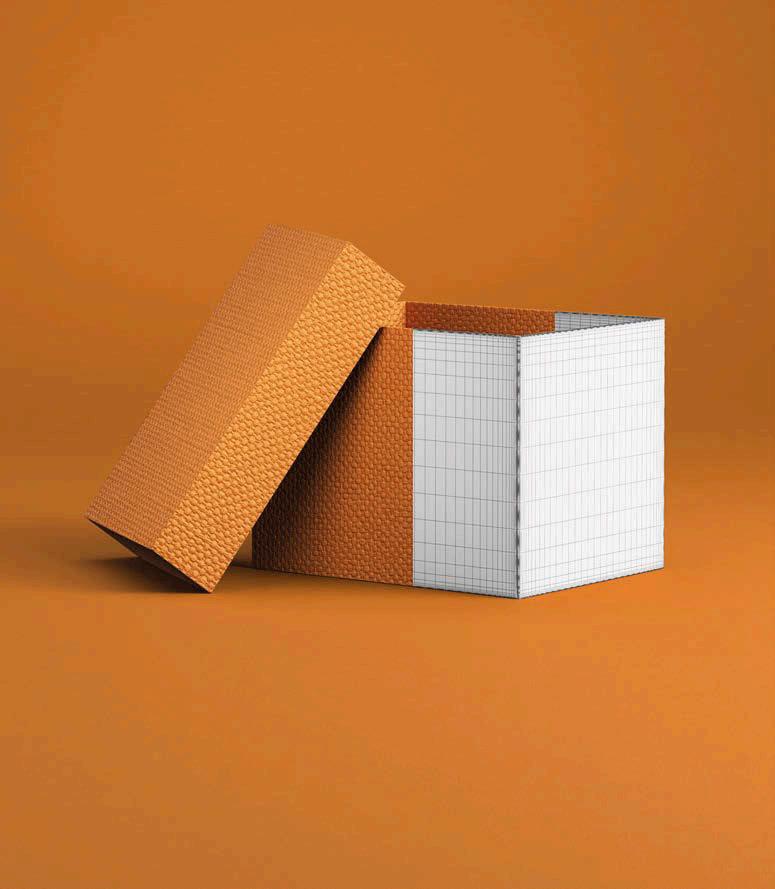
Napura®
NSI3022
Sisal
El packaging farmacéutico se centra en el paciente
y la sostenibilidad
Pharmaceutical packaging focuses on the patient and sustainability

Hay cinco tendencias que marcan claramente el packaging de productos farmacéuticos, según Team Consulting, recopiladas en la Encuesta e Informe Anual 2023 de Pharmapack: las oportunidades que crean los productos biológicos centrados en el paciente, el paso a la atención médica híbrida en poblaciones pospandémicas, la sostenibilidad de los dispositivos médicos, un diseño basado en el usuario y los cambios que la industria ha propuesto al Reglamento Europeo de Dispositivos Médicos (MDR).
Hay muchas áreas de terapia nuevas y en desarrollo muy interesantes a seguir a lo largo de 2023. Uno de los campos que evoluciona más rápidamente es el de los productos biológicos. Estos medicamentos innovadores se utilizan para tratar el origen de muchas enfermedades complejas en áreas como la reumatología y la oncología, pero también se emplean en cardiología, dermatología, gastroenterología y neurología, entre otras. Además, el crecimiento del sector de los biosimilares tiene un papel importante que desempeñar en la democratización de la atención médica.
Sin embargo, los principales desafíos en productos biológicos son los altos costes del tratamiento y las complicaciones relacionadas con el transporte y almacenamiento, así como la administración de medicamentos. Tal como explica, Brennan Miles, Head of Drug Delivery, Team Consulting, deben superarse desafíos como la necesidad de bajas temperaturas durante el almacenamiento de vida útil y el requisito de administrar grandes volúmenes, a menudo mediante infusión intravenosa. Así, existe la necesidad de simplificar los procesos de fabricación y producir medicamentos que puedan ser estables a temperaturas más altas, al mismo tiempo que se simplifica el proceso de administración de la terapia para mejorar
el acceso a los pacientes.
De hecho, también aumentan los enfoques centrados en el paciente. Se presentan nuevos sistemas de administración, como inyectores de alto volumen y sistemas portátiles de administración en el cuerpo.
A este respecto, según Brennan Miles, «en 2023 podemos esperar ver un enfoque continuo en tecnologías novedosas para la entrega de cargas útiles y viscosidades más altas para la autoinyección, así como una demanda continua de otros dispositivos de bajo costo para adaptarse a aplicaciones terapéuticas genéricas, tanto para el respiratorio como para inyectables».
En cuanto a la atención médica híbrida, destaca que, aunque los profesionales de la salud (HCP, por sus siglas en inglés) han notado un crecimiento masivo en las herramientas digitales, estas no están reemplazando la atención presencial, sino que la están aumentando. Muchos de los enfoques digitales que se utilizaron a gran escala durante la pandemia, como la telesalud en las consultas de los médicos de cabecera, han continuado después. Además, con la mayor sofisticación de los teléfonos móviles, los pacientes tiene más fácil acceso digital. La pandemia demostró ser un
18 NOTICIAS I NEWS
La sostenibilidad de los dispositivos médicos, un diseño basado en el usuario y los productos centrados en el paciente son algunas de las tendencias del packaging para productos farmacéuticos.
The sustainability of medical devices, a user-centered design and patient-focused products are some of the packaging trends for pharmaceutical products.
Airnov
gran aprendizaje tecnológico para muchas poblaciones, debido al uso masivo de aplicaciones. «A medida que continúa proliferando el uso de teléfonos inteligentes, la clave para los desarrolladores de dispositivos médicos será garantizar que cualquier experiencia digital que presenten sea fácil de usar, agregue valor y sea accesible para todos los grupos de usuarios», afirma Ben Cox, Head of Digital Design, Team Consulting.
Dispositivos médicos más sostenibles
A nivel de sostenibilidad, históricamente, muchas discusiones sobre el desarrollo de dispositivos se han centrado en la selección de materiales y las mejoras incrementales en las arquitecturas y modelos comerciales existentes. A medida que se acercan los objetivos de cero emisiones netas para las empresas farmacéuticas, se necesitan enfoques más radicales. Esta situación se refleja en los productos farmacéuticos en una tendencia no solo hacia la sostenibilidad del producto, sino también hacia el impacto total, a través de las emisiones de alcance 2 y 316, de manera que las partes implicadas deben analizar todos los pasos para comprender su impacto. Los dispositivos, además de ser reutilizables y reprocesables, se consideran de forma más amplia, teniendo en cuenta que todo el ciclo de vida debe planificarse desde el inicio para garantizar que se puedan obtener los máximos beneficios, por ejemplo, diseñando para minimizar el em-
balaje de transporte intermedio. «Dado que los nuevos dispositivos médicos y tecnologías a menudo pueden tardar más de 5 a 7 años en llegar al mercado, nuestra expectativa es que no veremos ningún cambio fundamental en este tema en 2023», afirma Alastair Willoughby, Head of Mechanical Engineering, Team Consulting. Se prevé que las estrategias de desarrollo sostenible se incluyan y documenten como parte del proceso de planificación, poniendo así las base para dispositivos más sostenibles en el futuro.
Experiencia del usuario mejorada
Tener un dispositivo que no solo funcione de manera efectiva sino que aporte una experiencia de usuario positiva puede desempeñar un papel importante en la mejora de la adherencia del paciente y los resultados clínicos. Adoptar un proceso de diseño verdaderamente centrado en el usuario es esencial para desarrollar productos. En línea con esto, las empresas farmacéuticas están dando cada vez más importancia a la experiencia del usuario y a comprender los comportamientos, creencias y necesidades de sus pacientes.
«Si bien los resultados más importantes para el paciente están, por supuesto, relacionados con la salud, la calidad de vida del paciente también es otro factor clave», enfatiza Pablo Greenhalgh, Director of Design, Team Consulting.
Finalmente, también influyen los cambios legislativos. El 6 de enero de 2023, la Comisión Europea publicó una propuesta para modificar el Reglamento Europeo de Dispositivos Médicos (MDR) con respecto a las disposiciones transitorias para determinados dispositivos médicos, que actualmente finalizarán el 26 de mayo de
2024. La modificación propuesta busca eliminar el plazo de 'venta' contenido en el MDR, permitiendo así que los dispositivos colocados en el mercado después del final del período de transición continúen vendiéndose hasta su fecha de vencimiento real.
Esta propuesta está impulsada, en parte, porque muchos fabricantes no están lo suficientemente preparados para cumplir con los requisitos más estrictos. «Ante este importante déficit de capacidad, parece inevitable que la Comisión Europea haya tenido que actuar para mantener el suministro de dispositivos médicos en el mercado de la UE», concluye Ian Wilde, Director de QA & RA, Team Consulting.
Innovaciones
Entre los últimos lanzamientos en packaging farmacéutico, destaca la nueva solución de Airnov Healthcare Packaging. IDC® (Integrated Desecant Closure) permite a los fabricantes reducir la cantidad de componentes que normalmente formarían un sistema desecante completo en una botella al integrar el desecante en el cierre.

Se espera que el diseño único, que está protegido por dos patentes, sea adaptable a las botellas SP 400 y también incluye un sistema a prueba de niños y un nuevo disco de seguridad en la parte superior, con el objetivo clave de que el IDC® pueda unificar los estándares de packaging a nivel mundial.
El IDC® se puede aprovechar para la protección de todos los productos sensibles que requieren protección contra la humedad, incluidos varios medicamentos farmacéuticos que corren el riesgo de estropearse por la exposición a la humedad.
Berry Global presenta un nuevo cierre a prueba de niños: Digi-Cap. Utiliza datos de comportamiento del paciente para mejorar la adherencia a la medicación. El cierre registra las aperturas del paciente a través de un pequeño chip de microprocesador y almacena el historial de uso/apertura en la memoria.
El cierre también monitorea los niveles de almacenamiento de temperatura y los retiene en la memoria. Cuando se empuja el cierre hacia abajo para sacarlo de la botella, se activa un interruptor que es registrado por el chip del microprocesador. Se registra la hora, la fecha y la temperatura en el momento de la apertura, lo que debería significar que se
19 NOTICIAS I NEWS
Berry
‘
Un dispositivo que aporte una experiencia de usuario positiva puede ser importante en la mejora de la adherencia del paciente y los resultados clínicos A device that provides a positive user experience can be important in improving patient adherence and clinical outcomes
extrajo una píldora del envase.
La placa de circuito incorpora un pequeño chip NFC (Near Field Communication) para transmitir información a los dispositivos (teléfono inteligente o PC), donde se puede ver y analizar la información de uso y temperatura.
El cierre está diseñado con una pared lateral con nervaduras finas para un mejor agarre y una rosca de contrafuerte modificada (estilo ‘M’) proporciona un contacto más preciso entre el cierre y la rosca de la botella. Además, hay instrucciones pictóricas de apertura en la superficie superior para una experiencia de usuario óptima.
Por su parte, Silgan Dispensing lanza la bomba nasal Gemini™ BE, una solución de aerosol nasal para marcas farmacéuticas.
Desarrollada con el programa de bioequivalencia (BE) de Silgan Dispensing, la bomba nasal Gemini™ BE es adaptable para combinar de manera efectiva formulaciones específicas para un ajuste de rendimiento perfecto y un rápido tiempo de comercialización.
Los beneficios adicionales de la bomba nasal Gemini™ BE son: producción en sala limpia, de calidad farmacéutica y con certificación ISO, alta precisión de dosificación, capacidad para hacer coincidir los dispositivos de medicamentos listados de referencia (RLD) existentes en una variedad de formulaciones y para modificar características de rociado como DSD, geometría de penacho y patrón de rociado. Cabe señalar también el desarrollo de una solución completa para especialidades farmacéuticas, presentada por Mespack y Famartec. El proyecto conjunto consiste en una nueva
máquina vertical de formado-llenado-sellado para la producción de sobres stick-pack, que se integran en un módulo de estuchado que agrupa los sobres antes de introducirlos en el cartón.
La línea ha sido especialmente diseñada para la industria farmacéutica y cumple con regulaciones específicas, como GMP, GMP5 y FDA 21 CFR Parte 11. En cuanto a la documentación enfocada a la industria farmacéutica, esta solución no solo ofrece la ejecución de DQ, IQ, OQ, RA, sino también la preparación de certificados de materiales PQ y EN1020 estándar 2.1 y 3.1. También se pueden preparar otros tipos de documentación, a pedido del cliente.
Pharmapack Europe
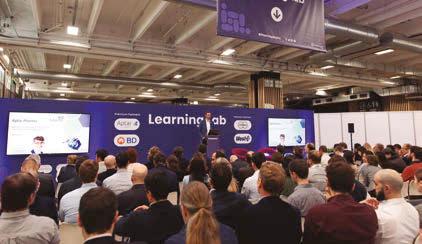
Pharmapack Europe 2023 (1 y 2 de febrero de 2023, París) finalizó con la sostenibilidad dominando la agenda y las innovaciones de la feria. El evento, un referente clave para las tendencias de envasado y entrega de productos farmacéuticos, marca un posible punto de inflexión para la sostenibilidad de la industria.
Pharmapack Europe 2023 acogió a 4850 ejecutivos, con unas 7513 visitas y 4210 asistentes online. Cabe destacar que estuvieron representados 78 países y se realizaron 42 sesiones de contenido, con una zona completa dedicada a la sostenibilidad y dos más que cubrieron la innovación de dispositivos y envases y la entrega de medicamentos y productos combinados de gran volumen. El contenido permanecerá disponible online. En total, hubo 355 empresas expositoras, desde
Aptar y BD hasta Nemera, Körber, West y Owen Mumford, por nombrar solo algunos. Laura Indriksone, directora de marca de Pharmapack Europe, comentó: «hemos visto un cambio realmente grande en 2023 y nuestro propio Informe Pharmapack predijo que la sostenibilidad será el problema más importante para la industria este año. Lo que vimos en el área de exhibición fue la profundidad y diversidad de la respuesta para afrontar los desafíos de la innovación sostenible en la entrega de medicamentos y las cadenas de suministro de envase más ecológicas. La otra tendencia importante es que las empresas están tratando de combinar dispositivos conectados y objetivos de sostenibilidad y también vemos muchas empresas más pequeñas en el evento. Creo que esta podría ser una gran tendencia del próximo año, que la industria está buscando nuevos socios y está siendo mucho más abierta en sus criterios de consideración. Las empresas, tanto grandes como pequeñas, buscan ampliar las redes y hacer que las cadenas de suministro sean más diversas y seguras».
Índice de innovación
La métrica clave del informe Pharmapack 2023, el Índice de Innovación en la Entrega de Medicamentos de Pharmapack (puntuado sobre diez), ha visto un rápido repunte en la confianza de la industria.
En 2023, el índice Pharmapack alcanzó una nueva puntuación récord de 7,4, superando incluso las puntuaciones previas a la pandemia. Es un dato muy positivo para los fabricantes de dispositivos y packaging, ya que sugiere una fuerte recuperación global en las perspectivas y la confianza de la industria. También indica que los ejecutivos de la industria ahora sienten que muchas de las presiones del último año se están aliviando: los precios de la gasolina en Europa se estabilizan y la inflación retrocede hacia las normas históricas. Se dan nuevos máximos históricos en el Índice de Innovación, con la confianza en los Estados Unidos, Alemania y el Reino Unido superando notablemente a todos los demás países. Alemania (9,1) en particular parece haber resistido particularmente bien las tormentas recientes y una vez más se ha movido junto a EE. UU. (9,3), con ambos países logrando puntajes superiores a 9. Reino Unido (8,5) también ha
20 NOTICIAS I NEWS
Pharmapack Europe 2023
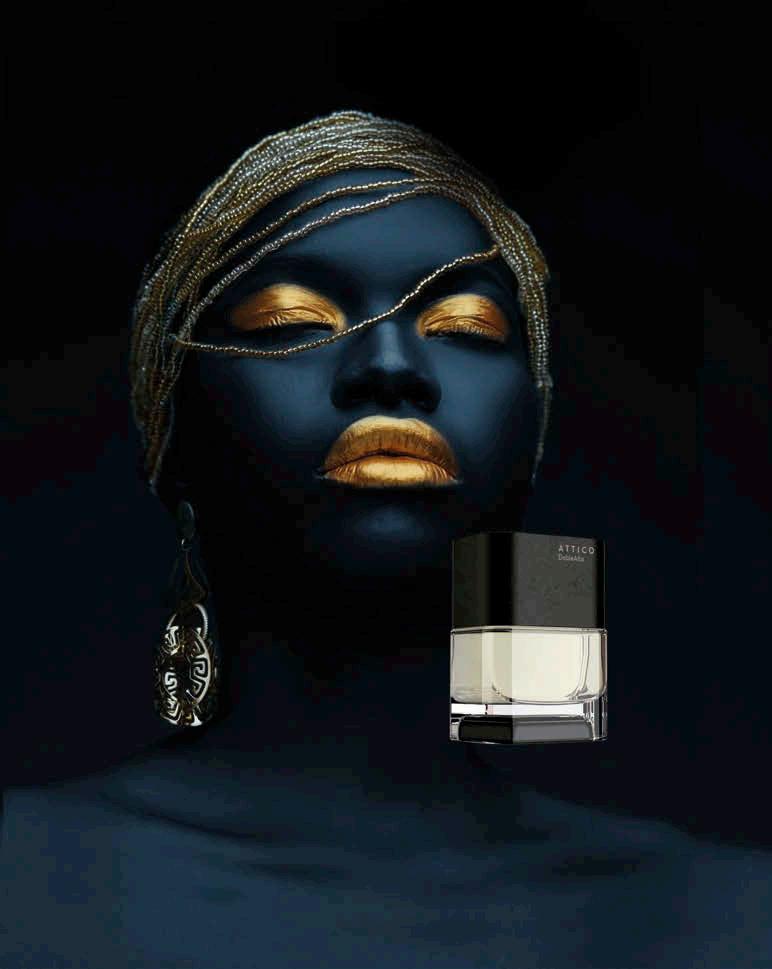

you imagine it, we make it real ATTICO DobleAlto packaging for fragrances …sustainably Plaça del Xarol 23 - Pol. Ind. Les Guixeres 08915 -Badalona - (Barcelona) (+34) 93 460 88 00 - info@rafesa.com www.rafesa.com
continuado las tendencias de los últimos años con otra mejora significativa en su puntuación de innovación.
Sin embargo, un país que ha continuado descendiendo en la clasificación en los últimos años es Japón que, a pesar de un aumento a 7,2 (frente al 6,8 de hace ocho meses), ha caído aún más hasta el sexto lugar. India y China han continuado con sus mejoras para 2022 con aumentos de más del 30 % y 35 % respectivamente.
El informe espera que 2023 sea el primer año en que el desarrollo y el crecimiento normales regresen a la mayoría de los principales mercados, a medida que se liberan de los factores de arrastre de la pandemia.
En términos de innovación, en los próximos 18 meses la tecnología de ARNm y los productos biológicos madurarán aún más, con nuevos dispositivos e incluso nuevos modos de administración en desarrollo para ARNm.
Pharmapack Europe Awards
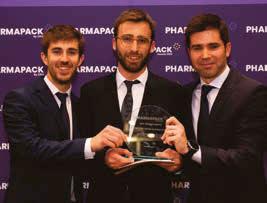
Los ganadores de los prestigiosos Premios Pharmapack 2023 abarcan cinco categorías en dos premios dedicados. Los Health Product Awards están abiertos a toda la industria farmacéutica, e incluyen dos categorías para 'ecodiseño' y 'diseño centrado en el paciente', mientras que los Exhibitor Awards celebran la excelencia en tres categorías para 'innovación en la administración de medicamentos', 'innovación en packaging' e 'iniciativa de sostenibilidad'.
En la categoría Eco-Design, Rotor Print fue premiada por dar un paso importante para la industria del embalaje al desarrollar un blíster 100 % PET de alta calidad, que ofrece una barrera equivalente a la tradicional tapa de aluminio o PVC. Esta película de PET ofrece una protección óptima para la estabilidad del producto y la vida útil y, al reemplazar el PVC y el aluminio, reduce los riesgos para la salud pública y es totalmente reciclable en cualquier planta de reciclaje de PET.
El premio al diseño centrado en el paciente fue para ATB-West por Latentogram. Combina una etiqueta holográfica que incorpora una imagen latente, invisible a simple vista, con un simple visor portátil del tamaño de una tarjeta de crédito. Mirar el holograma a través del visor revela la imagen latente oculta, esta-
bleciendo así la autenticidad del producto. La capa de polímero se puede agregar sin alterar el diseño y la disposición del envase y, en consecuencia, no representa un obstáculo para la implementación.
En Innovación de expositores, el trabajo pionero de Owen Mumford Pharmaceutical Services fue nuevamente reconocido, en la categoría de Innovación de administración de medicamentos, por su autoinyector reutilizable conectado UniSafe®. Utilizando un diseño único, UniSafe® es un dispositivo complementario para las jeringas de seguridad UniSafe de 1ml, diseñado para la administración de medicamentos por vía subcutánea. Proporciona a los pacientes un indicador de progresión de la dosis continua y una notificación real del final de la dosis, y viene con la opción de conectividad incorporada a través de Bluetooth® automático.
En la categoría de innovación de envases, Packsys Gmbh fue elegido por su sistema dispensador de ampollas, que es una combinación de rompe-ampollas, cuerpo y rosca. Al permitir romper y aplicar ampollas en un solo sistema, unido con la amplia selección de aplicadores, el dispensador de ampollas es un envase extremadamente versátil para productos farmacéuticos o de belleza líquidos. Además, cuenta con un componente inferior extraíble donde se pueden quitar las ampollas vacías, creando un sistema recargable.

Finalmente, Körber Pharma Packaging Materials recibió el sello de aprobación de los jueces en la categoría de Iniciativa de Sostenibilidad por su Rapid Covid Test sin plástico, que está hecho únicamente de material mono de cartón
reciclable y es biodegradable.
Dosing systems are important in different industries, from pharmaceuticals and personal There are five trends clearly marking pharmaceutical packaging, according to Team Consulting, compiled in the Pharmapack 2023 Survey and Annual Report: the opportunities created by patient-centric biologics, the shift to hybrid healthcare in post-pandemic populations, the sustainability of medical devices, a user-based design and the changes that the industry has proposed to the European Medical Device Regulation (MDR). There are many exciting new and developing areas of therapy to follow throughout 2023. One of the most rapidly evolving fields is biologics. These innovative medicines are used to treat the root causes of many complex diseases in areas such as rheumatology and oncology, but are also used in cardiology, dermatology, gastroenterology and neurology, among others. Furthermore, the growth of the biosimilars sector has an important role to play in the democratization of healthcare.
However, the main challenges in biologics are the high costs of treatment and complications related to transportation and storage, as well as drug administration. As Brennan Miles, Head of Drug Delivery, Team Consulting, explains, challenges such as the need for low temperatures during shelf-life storage and the requirement to administer large volumes, often via intravenous infusion, must be overcome. Thus, there is a need to simplify manufacturing processes and produce drugs that can be stable at higher temperatures, while simplifying the therapy delivery process to improve patient access.
In fact, patient-centered approaches are also
22 NOTICIAS I NEWS
Rotor Print
increasing. New delivery systems are introduced, such as high-volume injectors and body-worn delivery systems.

In this regard, according to Brennan Miles, "in 2023 we can expect to see a continued focus on novel technologies for the delivery of higher payloads and viscosities for autoinjection, as well as continued demand for other low-cost devices to suit therapeutic applications." generic, both for the respiratory and for injectables”. As for hybrid healthcare, he notes that while HCPs have seen massive growth in digital tools, they are not replacing face-to-face care, but augmenting it. Many of the digital approaches that were used on a large scale during the pandemic, such as telehealth in GP offices, have continued afterward. In addition, with the greater sophistication of mobile phones, patients have easier digital access. The pandemic proved to be a great technological learning for many populations, due to the massive use of applications.
“As the use of smartphones continues to proliferate, the key for medical device developers will be to ensure that any digital experience they present is easy to use, adds value and is accessible to all user groups,” says Ben Cox, Head of Digital Design, Team Consulting.
More sustainable medical devices
On a sustainability level, historically, many discussions of device development have focused on material selection and incremental improvements to existing architectures and business models. As net zero emissions targets for pharmaceutical companies approach, more radical approaches are needed. This situation is reflected in pharmaceuticals in a trend not only towards product sustainability, but also towards total impact, through scope 2 and 316 emissions, so stakeholders need to look at all steps to understand its impact. Devices, in addition to being reusable and reprocessable, are considered more broadly, keeping in mind that the entire life cycle needs to be planned from the start to ensure that maximum benefits can be realized, for example by designing to minimize product packaging. intermediate transport. “Since new medical devices and technologies can often take longer than 5-7 years to reach the market, our expectation is that we will not see any fundamental change in this area in 2023,” says Alastair Willoughby, Head of Mechanical Engi-
neering, Team consulting. Sustainable development strategies are expected to be included and documented as part of the planning process, thus laying the foundation for more sustainable arrangements in the future.
Improved user experience
Having a device that not only works effectively but provides a positive user experience can play an important role in improving patient adherence and clinical outcomes. Embracing a truly user-centered design process is essential to developing products. In line with this, pharmaceutical companies are giving more and more importance to the user experience and to understanding the behaviors, beliefs and needs of their patients.
"While the most important patient outcomes are of course related to health, the patient's quality of life is also another key factor," emphasizes Pablo Greenhalgh, Director of Design, Team Consulting.
Finally, legislative changes also have an influence. On January 6, 2023, the European Commission published a proposal to amend the European Medical Device Regulation (MDR) regarding the transitional provisions for certain medical devices, which currently expire on May 26, 2024. The proposed amendment seeks to remove the 'sell' term contained in the MDR, thus allowing devices placed on the market after the end of the transition period to continue to be sold until their actual expiration date. This proposal is driven, in part, because many manufacturers are not prepared enough to meet the more stringent requirements. “Given
this significant capacity shortfall, it seems inevitable that the European Commission has had to act to maintain the supply of medical devices on the EU market,” concludes Ian Wilde, Director of QA & RA, Team Consulting.
Innovations
Among the latest launches in pharmaceutical packaging, the new Airnov Healthcare Packaging solution stands out. IDC® (Integrated Desiccant Closure) allows manufacturers to reduce the number of components that would normally make up a complete desiccant system in a bottle by integrating the desiccant into the closure.

The unique design, which is protected by two patents, is expected to be adaptable to SP 400 bottles and also includes a child-resistant system and a new security disk on top, with the key objective being that the IDC® can unify packaging standards worldwide.
The IDC® can be leveraged for the protection of all sensitive products that require protection against moisture, including various pharmaceutical drugs that are at risk of spoilage from exposure to moisture.
Berry Global introduces a new child resistant closure: Digi-Cap. Uses patient behavior data to improve medication adherence. The closure records patient openings via a small microprocessor chip and stores the use/opening history in memory.
The closure also monitors temperature storage levels and retains them in memory. When the closure is pushed down to remove it from the
23 NOTICIAS I NEWS
Mespack & Farmatec Silgan Dispensing
bottle, a switch is activated which is registered by the microprocessor chip. The time, date and temperature at the moment of opening are recorded, which should mean that a pill was removed from the package.
The circuit board incorporates a small NFC (Near Field Communication) chip to transmit information to devices (smartphone or PC), where usage and temperature information can be viewed and analyzed.
The closure is designed with a finely ribbed sidewall for better grip and a modified buttress thread ('M' style) provides more precise contact between the closure and the bottle thread. Additionally, there are pictorial opening instructions on the top surface for an optimal user experience.
For its part, Silgan Dispensing launches the Gemini™ BE nasal pump, a nasal spray solution for pharmaceutical brands.
Developed with Silgan Dispensing's Bioequivalence (BE) program, the Gemini™ BE Nasal Pump is customizable to effectively match specific formulations for a perfect performance fit and rapid time to market.
Additional benefits of the Gemini™ BE Nasal Pump are: ISO certified, pharmaceutical grade, clean room production, high dosing accuracy, ability to match existing Reference Listed Drug (RLD) devices in a variety of formulations and to modify spray characteristics such as DSD, plume geometry, and spray pattern.
It should also be noted the development of a complete solution for pharmaceutical specialties, presented by Mespack and Famartec.
The joint project consists of a new vertical form-fill-seal machine for the production of stick-pack envelopes, which are integrated into a cartoning module that groups the envelopes before inserting them into the carton. The line has been specially designed for the pharmaceutical industry and complies with specific regulations, such as GMP, GMP5 and FDA 21 CFR Part 11. Regarding the documentation focused on the pharmaceutical industry, this solution not only offers the execution of DQ, IQ, OQ, RA, but also the preparation of PQ and EN1020 standard 2.1 and 3.1 material certificates. Other types of documentation can also be prepared, at the client's request.
Pharmapack Europe
Pharmapack Europe 2023 (February 1 and 2, 2023, Paris) ended with sustainability dominating the agenda and innovations of the fair. The event, a key reference for packaging and delivery trends, marks a possible turning point for industry's sustainability.
Pharmapack Europe 2023 welcomed 4850 executives, with about 7513 visits and 4210 online assistants. It should be noted that 78 countries were represented and 42 content sessions were held, with a complete area dedicated to sustainability and two more that covered the innovation
of devices and containers and the delivery of medications and combined products of large volume. The content will remain available online. In total, there were 355 exhibiting companies, from ApTar and BD to Nemera, Körber, West and Owen Mumford, to name just a few.
Laura Indriksone, brand director of Pharmapack Europe, commented: «We have seen a really great change in 2023 and our own Pharmapack report predicted that sustainability will be the most important problem for the industry this year. What we saw in the exhibition area was the depth and diversity of the response to face the challenges of sustainable innovation in the delivery of medications and the most ecological packaging supply chains. The other important trend is that companies are trying to combine connected devices and sustainability objectives and we also see many smaller companies in the event. I think this could be a great trend next year, that the industry is looking for new partners and is being much more open in its consideration criteria. Companies, both large and small, seek to expand the networks and make supply chains more diverse and safe. ”
Innovation index
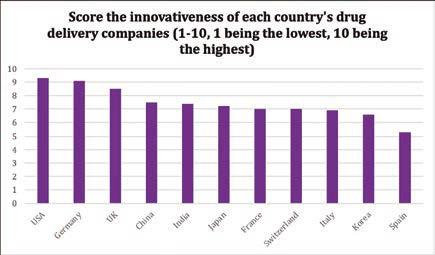
The key metric of the Pharmapack 2023 report, the innovation index in the delivery of Pharmapack drugs (scored over ten), has seen a rapid rebound in industry's confidence. In 2023, the Pharmapack index reached a new record score of 7.4, even exceeding the scores prior to the pandemic. It is a very positive fact for device and packaging manufacturers, since it suggests a strong global recovery in the perspectives and confidence of the industry. It also indicates that industry executives now feel that many of the pressures of the last year are relieved: gasoline prices in Europe are stabilized and inflation goes back to historical norms.
New historical maximums are given in the innovation index, with confidence in the United States, Germany and the United Kingdom significantly surpassing all other countries. Germany (9,1) in particular seems to have resisted particularly well recent storms and once again it has moved next to the US. (9.3), with both countries achieving scores greater than 9. History of the survey. The United Kingdom (8.5) has also continued the trends of recent years with another significant
24 NOTICIAS I NEWS
Pharmapack Drug Delivery Index
improvement in its innovation score. However, a country that has continued descending in the classification in recent years is Japan that, despite an increase to 7.2 (compared to 6.8 eight months ago), it has fallen even more to sixth place. India and China have continued with their dramatic improvements by 2022 with increases of more than 30 % and 35 % respectively. The report expects 2023 to be the first year in which normal development and growth return to most main markets as they are released from the pandemic drag factors.
In terms of innovation, in the next 18 months, RNM technology and biological products will mature further, with new devices and even new modes of development administration for MRNA.
Pharmapack Europe Awards
The winners of the prestigious Pharmapack 2023 awards cover five categories in two dedicated awards.
The Health Product Awards are open to the entire pharmaceutical industry, and include two categories for 'Eco-Design' and 'Patient-Centric Design', while the Exhibitor Innovation celebrate excellence in three categories for 'Drug Delivery Innovation', 'Packaging Innovation' e 'Sustainability Initiative'. In the Eco-Design category, Rotor Print was awarded for taking a more important step for the packaging industry when developing a 100 % high quality PET blister, which offers a barrier equivalent to the traditional aluminum or PVC cover. This PET film offers optimal protection for product stability and useful life and, replacing PVC and aluminum, reduces risks to public health and is totally recyclable in any PET recycling plant.
The Patient-Centric Design award was for ATBWe by Latientogram. It combines a holographic label that incorporates a latent image, invisible to the naked eye, with a simple portable viewfinder of the size of a credit card. Looking at the hologram through the visor reveals the hidden latent image, thus establishing the authenticity of the product. The polymer layer can be added without altering the design and disposal of the container and, consequently, does not represent an obstacle to implementation.
In Exhibitor Innovation, Owen Mumford Pharmaceutical Services was again recognized, in the category of Drug Delivery Innovation by its connected reusable autoinjector, Unisafe® connected. Using a unique design, Unisafe® is a complementary device for 1 ml unaisafe security syringes, designed for subcutaneous medicines administration. It provides patients with an indicator of continuous dose progression and a real notification of the end of the dose, and comes with the connectivity option incorporated through automatic bluetooth®.
In the category of Packaging Innovation, Packsys GmbH was chosen by its ampoules dispenser system, which is a combination of break-foam, body and thread. By allowing to break and apply blisters in a single system, together with the wide selection of applicators, the ampoules dispenser is an extremely versatile container for liquid pharmaceutical products or beauty. In addition, it has a removable lower component where empty blisters can be removed, creating a rechargeable system.
Finally, Körber Pharma Packaging Materials received the seal of approval of the judges in the category of Sustainability Initiative for their rapid
covid test without plastic, which is only made of mono mono of recyclable cardboard and is biodegradable.
Pharmapack Europe Awards
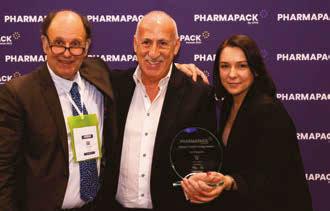
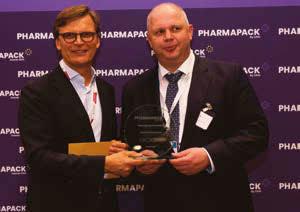
Winners 2023
HEALTH PRODUCT AWARDS
ECO-DESIGN
Winner Rotor Print for 100% PET blister by Rotor Print
PATIENT-CENTRIC DESIGN
Winner ATB-WEST Ltd for Latentogram
Highly Commended
Idevax & Voxdale for VAX-ID
EXHIBITOR INNOVATION AWARDS
DRUG DELIVERY INNOVATION
Winner Owen Mumford Pharmaceutical Services for UniSafe® reusable connected auto-injector
PACKAGING INNOVATION
Winner Packsys GmbH for Ampoule Dispenser
SUSTAINABILITY INITIATIVE
Winner Körber Pharma Packaging Materials AG for Sustainable Covid Rapid Tester
25 NOTICIAS I NEWS
Packsys GmbH
ATB-WEST Ltd
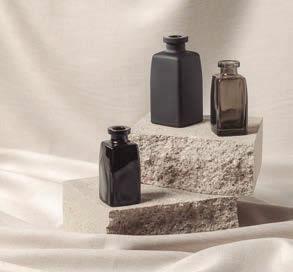
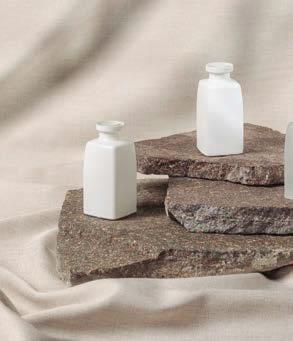
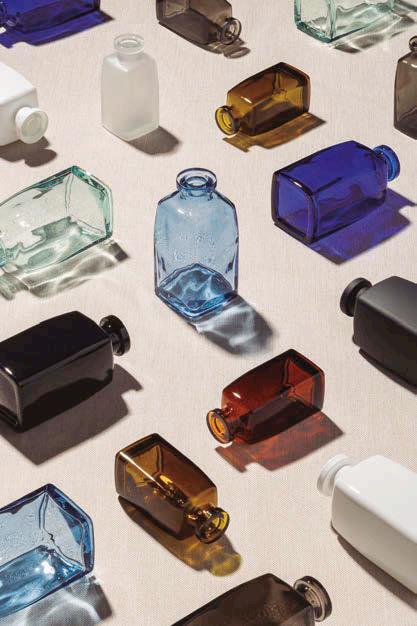
CHROMIE es un mundo de colores, para ser explorado capítulo tras capítulo.
Intuiciones, desarrollos, recetas, marca VETROelite, para ofrecer a los clientes una experiencia de compra cada vez más completa.
El color como elemento de diferenciación, el servicio como valor de empresa.
Una venta combinada de envases que destaca y evoluciona en un mercado en constante cambio.

Botellas y colores: una combinación perfecta
Chromie es un viaje de inspiración, a través de la naturaleza y sus elementos, para descubrir un nuevo mundo.
El color es comunicación: cada tono esconde un sentimiento: un mensaje poderoso entregado con absoluta simplicidad.
El proyecto se estructura por capítulos, dejando espacio a la creatividad y creando un perímetro claro y seguro que facilita el proceso de venta y, sobre todo, la elección del cliente.
RADICI: EL PRIMER CAPITULO
Para escribir este primer capítulo, los orígenes fueron el punto de partida: los de la empresa y los de la producción de vidrio.
Radici es una historia de tradición, es la colección de lo esencial; los grandes clásicos que siguen asombrando y contando nuevas historias.
Del vidrio al color, para obtener el máximo rendimiento.
CHROMIE is a world of colors, to be explored chapter after chapter.
Intuitions, developments, recipes, branded VETROelite, to offer customers an increasingly complete shopping experience.

Color as an element of differentiation, service as a company value.
A combined sale for packaging that stands out and evolves in an ever-changing market.
Bottles and colors: a perfect match

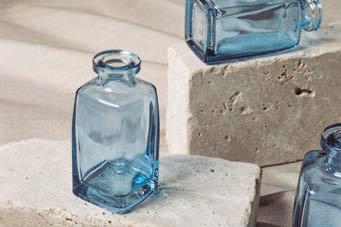
Chromie is a journey of inspiration, through nature and its elements, to discover a new world.
Color is communication: every shade hides a feeling: a powerful message delivered with absolute simplicity.
The project is structured in chapters, leaving room for creativity and creating a clear and secure perimeter that facilitates the sales process and, above all, customer choice.
RADICI: THE FIRST CHAPTER
To write this first chapter, the origins were the starting point: those of the company and those of the glass production.

Radici is a story of tradition, it is the collection of the essentials; the great classics that continue to amaze and tell new stories.
From glass to color, for maximum output.
GARCIMAR. Garcimarket es una nueva marca para los productos de Garcimar no procedentes del mar. Se construyó su baseline: Very food Service. Un juego lateral y notorio para hablarnos de excelencia y situar a la marca en su categoría, acompañado de un «desde 1931» para anclar origen y expertise. Se estableció un color genérico por marca, franjas horizontales para Garcimar (imaginario marítimo) y verticales para Garcimarket (evocando los toldos de los puestos en mercado). A nivel de packaging, en Little Buddha se trabajaron elementos sencillos a dos tintas para facilitar la decodificación que el producto necesitaba. Cromatismos que ayudasen a segmentar por familia y un diseño intuitivo para ayudar en distribución.

GARCIMAR. Garcimarket is a new brand for Garcimar products not from the sea. Its baseline was built: Very food Service. A lateral and notorious game to speak of excellence and place the brand in its category, accompanied by a "since 1931" to anchor origin and expertise. A generic color was established by brand, horizontal stripes for Garcimar (maritime imaginary) and vertical stripes for Garcimarket (evoking the awnings of the market stalls). At the packaging level, in Little Buddha simple two-color elements were worked on to facilitate the decoding that the product needed. Chromatics that help to segment by family and an intuitive design to help in distribution.
LITTLE BUDDHA


MISTINGUETT. El cava Mistinguett es un homenaje a todas las mujeres que trabajan cada día para hacer realidad sus sueños, tal y como hizo la famosa vedette Mistinguett. Al igual que ella, el cava Mistinguett -Método Tradicional- se viste de plumas para dejar ver sus sugerentes formas y sus insinuantes ondulaciones. Tanto el envase, firmado por SeriesNemo, como el producto crean una combinación equilibrada entre su fuerza seductora y su carácter coqueto. La botella exclusiva recuerda el ambiente sofisticado y festivo de la alta sociedad parisina de principios del siglo XX. La etiqueta, como un lazo de seda o una joya, se convierte en el punto culminante imprescindible que todo desfile necesita.
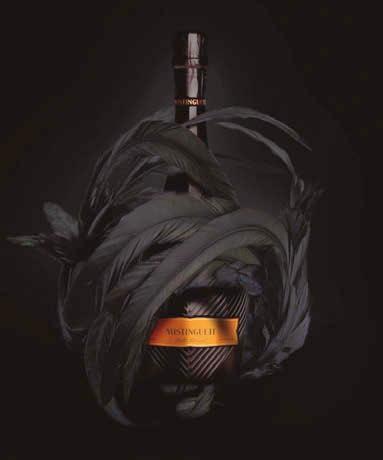
MISTINGUETT. Mistinguett cava is a tribute to all the women who work every day to make their dreams come true, just like the famous vedette Mistinguett did. Like her, the Mistinguett cava -Traditional Method- dresses in feathers to reveal its suggestive shapes and insinuating undulations. Both the packaging, signed by SeriesNemo, and the product create a balanced combination between its seductive strength and its flirtatious character.
The exclusive bottle recalls the sophisticated and festive atmosphere of Parisian high society at the beginning of the 20th century. The label, like a silk bow or a jewel, becomes the essential highlight that every show needs.
28 CREATIVIDAD I CREATIVITY
>PROCESO HOLÍSTICO HOLISTIC PROCESS >EL CAVA MISTINGUETT SE VISTE DE PLUMAS MISTINGUETT CAVA DRESSES IN FEATHERS GARCIMAR Garcimar/Garcimarket https://littlebuddhaagency.com SERIESNEMO MISTINGUETT Packaging https://seriesnemo.com
VEGETANEA. Delamata ha diseñado el packaging y branding de Vegetanea, una nueva gama de bebidas, untables y yogures 100 % vegetales de Central Lechera Asturiana. El protagonismo en el pack se centra en el ingrediente principal de cada variedad, con una foto sencilla pero de calidad. Han planteado una arquitectura de gama sólida y ligera, en la que predomina el blanco, destacando el color correspondiente a cada versión. Poner los ingredientes en la parte frontal y resaltar el sello sin E’s realza el hecho de que se trata de un producto plant-based y saludable.

VEGETANEA. Delamata has designed the packaging and branding for Vegetanea, a new range of 100% vegetable drinks, spreads and yogurts from Central Lechera Asturiana. The prominence in the pack focuses on the main ingredient of each variety, with a simple but quality photo. They have proposed a solid and light range architecture, in which white predominates, highlighting the color corresponding to each version. Putting the ingredients on the front and highlighting the seal without E's enhances the fact that it is a plantbased and healthy product.
DELAMATA
MARCO ARROYO-VÁZQUEZ


CUGU. Marco Arroyo-Vázquez ha diseñado el envase conceptual para Cugu, una marca turca de aceite de oliva. La botella de cerámica destaca por tener la imagen de un ojo, un símbolo esencial en la tradición cultural turca, sin tipografía. Se completa con un tapón de madera. Cugu revalora la conexión del AOVE con sus raíces, representadas por los olivos milenarios de Urla, donde se inició la producción de aceite en el mundo. El logotipo está influenciado por la caligrafía árabe presente en los medallones de Santa Sofía. El aceite se envasa en botellas de cerámica artesanales de 500ml, con una forma ergonómica que evoca de nuevo al ojo. Se aumentó la altura del cuello, estilizándolo para ganar presencia en la estantería. El resultado es casi una escultura que invita a la reutilización y fomenta la economía circular. CUGU. Marco Arroyo-Vázquez has designed the conceptual packaging for Cugu, a Turkish olive oil brand. The ceramic bottle stands out for having the image of an eye, an essential symbol in the Turkish cultural tradition, without typography. It is completed with a wooden stopper. Cugu revalues the connection of EVOO with it roots, represented by the ancient olive trees of Urla, where oil production began in the world. The logo is influenced by the Arabic calligraphy present in the Hagia Sophia medallions. The oil is packaged in 500 ml handmade ceramic bottles, with an ergonomic shape that evokes the eye again. The height of the neck was increased, stylizing it to gain presence on the shelf. The result is almost a sculpture that invites reuse and promotes the circular economy.

>BEBIDAS VEGETALES VEGETABLE DRINKS >DESIGN INSPIRED BY THE ORIGINS OF THE BRAND DISEÑO INSPIRADO EN LOS ORÍGENES DE LA MARCA VEGETANEA Packaging www.delamatadesign.com/ CUGU - Packaging www.behance.net/mrcoarroyevazquez95
29 CREATIVIDAD I CREATIVITY
AGUA DE SALAMANCA. Es la primera Eau de Parfum de Margara, una nueva marca empresarial ligada al Patrimonio Cultural. Para el diseño, en Salvi Design escogieron el concepto de botón charro. Un elemento tradicional representativo de la ciudad, asociado a una pieza de filigrana artesanal y joyería. En cuanto a la tipografía, seleccionaron una serif lujosa. Inspirada en las interpretaciones Art Decó de los estilos tipográficos clásicos, utiliza ligaduras y alternativas caligráficas. Como tono corporativo, optaron por un azul intenso, que evoca el cielo de Salamanca reflejado en el Tormes, en contraste con el hot foil stamping en oro.
AGUA DE SALAMANCA. It is the first Eau de Parfum by Margara, a new business brand linked to Cultural Heritage. For the design, at Salvi Design they chose the concept of the charro button. A representative traditional element of the city, associated with a piece of filigree craftsmanship and jewelry. As for the typography, they selected a luxurious serif. Inspired by Art Deco interpretations of classic typographic styles, it uses ligatures and calligraphic alternates. As a corporate tone, they opted for an intense blue, which evokes the Salamanca sky reflected in the Tormes, in contrast to the gold hot foil stamping.
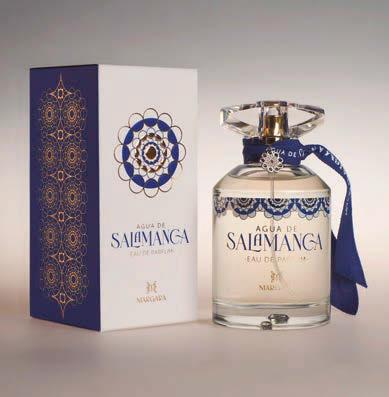
SALVI DESIGN


MEZCAL CUICATECO. F3 Brands creó el diseño de marca, packaging y producto para Mezcal Cuicateco.
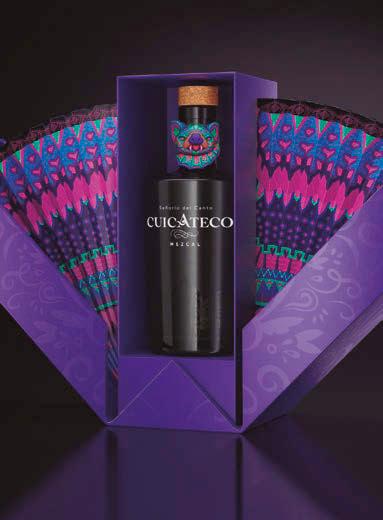
El objetivo era crear un envase premium que mostrara Cuicatlán, zona donde se produce el mezcal. Para ello se inspiraron en el hábitat de Cuicatlán y tomaron a la onza y al murciélago como dos animales simbólicos de la región.
Para el resto del packaging, quisieron imitar la forma en que florece un agave, por eso la caja se abre en forma de abanico.
MEZCAL CUICATECO. F3 Brands created the brand, packaging and product design for Mezcal Cuicateco.
The objective was to create a premium container that would show Cuicatlán, the area where mezcal is produced. For this they were inspired by the habitat of Cuicatlán and took the jaguar and the bat as two symbolic animals of the region.
For the rest of the packaging, they wanted to imitate the way an agave blooms, which is why the box opens in the shape of a fan.
30 CREATIVIDAD I CREATIVITY
www.salvidesign.com
MEZCAL CUICATECO - Packaging www.f3-brands.com >COMPOSICIÓN GEOMÉTRICA GEOMETRIC COMPOSITION >UN COLORIDO PACKAGING PARA MEZCAL A COLORFUL PACKAGING FOR MEZCAL
AGUA DE SALAMANCA Packaging
F3 BRANDS

¿Qué le llevó a estudiar gráfica publicitaria?
Desde pequeño siempre tuve inquietud por todo aquello que tenía un componente artístico, pero no supe lo que era el diseño como tal hasta pocos años antes de comenzar a estudiar gráfica publicitaria.
Descubrí que existía una formación reglada y vinculada al diseño gracias a una serie de casualidades y a partir de aquel momento comencé a interesarme por esta profesión y sus fundamentos, algo que rápidamente me cautivó e hizo que decidiese dirigir mi formación y mi carrera hacia ahí.
¿Qué balance hace de su etapa en Dorian?
Fue una etapa increíble. Crear un estudio de diseño y conseguir ponerlo en marcha y mantenerlo desde cero, sin ninguna formación empresarial, sin ningún contacto ni clientes, sin un portafolio que poder mostrar y en un momento de crisis como la que vivíamos en 2009 fue un gran reto.
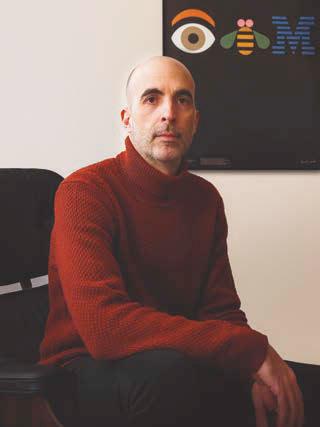 Gabriel Morales
Gabriel Morales
Sutil es un estudio creativo de diseño y comunicación gráfica especializado en identidad y packaging (www.sutil.pro). En esta entrevista, su fundador y director, Gabriel Morales, nos habla de su larga experiencia profesional y nos da su opinión sobre el mundo del diseño. Sutil is a creative design and graphic communication studio specializing in identity and packaging (www.sutil.pro). In this interview, its founder and director, Gabriel Morales, tells us about his long professional experience and gives us his opinion on the world of design.
Por un lado se convirtió en una plataforma que me permitió colaborar con grandes clientes y realizar fantásticos proyectos y por otro un medio que puso sobre la mesa múltiples cuestiones que van más allá de los aspectos vinculados a la comunicación y que son de vital importancia para el buen funcionamiento de cualquier negocio.
Podría decir que fue una especie de máster en muchos sentidos.
¿Por qué creó el estudio creativo Sutil?
Por la necesidad de buscar nuevos retos. Siempre he sido una persona inquieta y con el paso del tiempo fui descubriendo que la estructura planteada para Dorian tenía unos límites que no me permitían evolucionar. Poco a poco fui sintiendo la necesidad de poner en marcha un proyecto que me sacase de mi zona de confort y que a su vez fuese un fiel reflejo de mi forma de entender tanto el diseño como todo aquello que está relacionado con la
gestión y el funcionamiento propio de un estudio.
Y el resultado es Sutil, un estudio que recoge la experiencia acumulada a lo largo de toda mi trayectoria vital y profesional.
Están especializados en identidad y packaging. ¿Cómo ha evolucionado la forma de entender el packaging en estas dos décadas?
En España el diseño gráfico es una profesión relativamente joven. No debemos olvidar que tan solo unas décadas atrás el diseño como profesión no existía y eran muy pocas las personas especializadas que se dedicaban a este oficio.
Era un tiempo en el que la situación de hermetismo que se vivía en el país hacía que sus gestores lo considerasen menos necesario y la inversión en este sector estaba menos extendida. Y lógicamente estas cuestiones incidían directamente en lo que se consumía visualmente.
32 ENTREVISTA I INTERVIEW
Fundador y director Founder and director Sutil
«Considero imprescindible trabajar muy bien el concepto»
"I consider it essential to work very well on the concept"
La apertura de España al mundo a partir de la década de los 80, la posterior y más reciente globalización y unos mercados actualmente cargados con una gran cantidad de referencias que compiten entre ellas, han ido certificando que no basta con tener un gran producto, sino que también hay que saber explicarlo y venderlo.
Y las marcas han ido descubriendo que, al igual que destinan recursos a otras cuestiones con el fin de obtener resultados de calidad, necesitan destinarlos también a profesionales cualificados en los campos de la comunicación y diseño si quieren que los mensajes lleguen a sus consumidores, por lo que, de una manera natural, el sector se ha ido industrializando y profesionalizando. Entrando de manera más precisa en las últimas dos décadas, entre las evoluciones que ha habido se podría destacar una mayor apertura por parte de las grandes marcas a la hora de colaborar con estudios de diseño más pequeños, en los que han ido encontrando una mirada más fresca con respecto a la que venían proporcionándoles las grandes agencias, o una mayor sensibilidad y conciencia con todo aquello relacionado con la sostenibilidad.
¿Qué importancia conceden a los materiales?
La elección de unos materiales u otros es crucial a la hora de realizar un proyecto y es por ello por lo que esta cuestión está siempre sobre la mesa durante el proceso de desarrollo.
En ocasiones la elección del material es una cuestión que va estrechamente relacionada con el planteamiento creativo, en otras es un recurso que puede ayudar a terminar de definir y matizar una idea y el posicionamiento de los productos, o un factor determinante a tener en cuenta en relación a los costes de producción o la sostenibilidad, etc.
Y puesto que todo ello incide en el resultado final, la elección de unos materiales que contribuyan a transmitir el mensaje y que hagan viable una producción, tanto a nivel técnico como económico, es una cuestión que se evalúa con sumo detalle en cada proyecto.
¿Han tenido problemas con la escasez que ha habido el pasado año?
Esta fue una cuestión que afectó directamente a productores y fabricantes y que, en
El estudio Sutil recoge la experiencia acumulada
lo
la trayectoria vital y profesional de Gabriel Morales
The Sutil studio collects the life experience accumulated throughout the life and professional career of Gabriel Morales


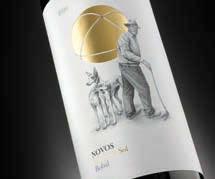
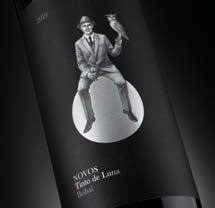
consecuencia, tuvo una cierta incidencia en los procesos de trabajo internos que realizo. En términos generales supuso una dilatación de determinados procesos de producción, que en condiciones normales podrían haber sido más rápidos, o alguna variación con respecto a algún tipo de soporte, pero mi proceso de trabajo me mantiene alerta en relación a la viabilidad de los proyectos en todos los sentidos, por lo que, a efectos prácticos, no acabó suponiendo un problema destacable que no pudiese resolver con una buena planificación.
Además de aspectos funcionales, ¿transmitir la filosofía de la marca es lo más importante a la hora de diseñar un packaging?
Cuando hablamos de productos, la prioridad acostumbra a ser la de comunicar aquellas bondades o características específicas que los hacen únicos y diferentes a los de la competencia, pero también representan a marcas y por lo tanto son en sí mismos canales a través de los cuales las compañías se comunican con sus consumidores. Es por ello por lo que para mí es de vital importancia conocer todo aquello que pueda formar parte de la marca, el producto y su contexto para encontrar el tono adecuado, tanto a nivel conceptual como visual, que mejor se vaya a adaptar a aquello que se quiere comunicar.
33 ENTREVISTA I INTERVIEW
a
largo de toda
‘
¿Cómo se consigue con una etiqueta? ¿Es la tipografía el elemento más importante?
Siendo muy meticuloso y exigente. Condensar en un etiqueta o el conjunto de un packaging todo aquello que conforma el universo de una marca (su historia, su visión, sus valores…) y destacar aquello que la hace especial a ella y a sus productos, es un gran reto que implica dedicación y rigor.
Con respecto a lo más importante, sin ningún tipo de duda para mí lo principal es conseguir que los mensajes lleguen a los consumidores y conecten con ellos de un modo singular y memorable.
Partiendo de esa premisa considero imprescindible trabajar muy bien el concepto. Trato siempre de encontrar aquello que hace único a una marca o producto para construir alrededor un concepto que ayude a ponerlo en valor y que ejerza de base sobre la cual construir todo lo demás, desde el tono del lenguaje a utilizar hasta la elección de la tipografía, los colores, los materiales, etc.
¿Por qué se decide incorporar una ilustración?
¿Qué valores aporta?
La ilustración es un medio “relativamente accesible” que permite explorar y desarrollar los conceptos con una gran variedad de registros, tantos como ilustradores/as podamos encontrar, haciendo que los resultados puedan ser siempre tan diversos como se quiera. Pero no creo que la ilustración como medio aporte necesariamente unos valores concretos, sino que será lo que se represente con la ilustración, y el estilo en el que se haga, lo que acabará transmitiendo unos valores u otros.
¿Son los clientes conscientes de la importancia de ser más sostenibles?
Sin ninguna duda. La cuestión de la sostenibilidad llegó afortunadamente para quedarse y creo que la importancia que va a ir cobrando con el paso del tiempo será cada vez mayor, haciendo que aquellas marcas que no sean honestas y respetuosas en su discurso y sus acciones sean penalizadas por parte de los consumidores.
Háblenos de dos de sus trabajos. Hace ya bastante tiempo que me encuentro especialmente satisfecho con aquellos proyectos que consiguen resolver de manera
muy precisa las necesidades comunicativas de los clientes con los que colaboro, por encima de si el resultado final pueda ser más o menos vistoso o exuberante.
Es el caso por ejemplo de Labor de Sol y Tinto de Luna, dos vinos de Bodegas y Viñedos Novos cuyo concepto e imagen gráfica narra los orígenes de sus viñas y rinde un sentido homenaje a sus ancestros, aquellos que pasaron duras jornadas de trabajo en la viña bajo el sol y que disfrutaron posteriormente de largas noches de descanso y disfrute a la luz de la luna.
Una imagen en la que la poesía se apodera de los vinos gracias a unas escenas cargadas de simbolismo que ponen en valor el legado familiar de la bodega y que conecta a los vinos con su propia historia.
O el caso de la actualización del diseño del vino Pétalos, de Descendientes de J. Palacios, que vengo realizando desde hace más de 10 años. Un trabajo sumamente riguroso y respetuoso con un vino clásico e icónico de Bierzo, que ha supuesto desde pequeños retoques y ajustes de algunos aspectos caligráficos formales para actualizar la representación gráfica del nombre, hasta la apertura visual del componente pictórico de la etiqueta para lograr que la imagen del vino sea diferente cada añada sin perder ni un ápice de coherencia visual.

Ha conseguido diferentes premios por sus proyectos. ¿Realmente ayudan los reconocimientos? No tengo constancia de que haya llegado ningún cliente fruto de la obtención de un premio, pero creo que todo suma y ayudan a
dar una cierta visibilidad y exposición a tu trabajo.
También creo que para algunos clientes pueden suponer un aval que les proporcione una cierta garantía o tranquilidad a la hora de escoger un profesional u otro.
¿Cree que es importante acudir a ferias?
Creo que es importante ser inquieto y tener curiosidad por aquello que sucede en los sectores en los que uno desarrolla su profesión, ya sea acudiendo a ferias o tratando de informarse a través de otros medios. Si esta asistencia se hace con fines comerciales creo que la cuestión dependerá entonces de la forma en la que cada uno decide comunicarse con los clientes, pero
34 ENTREVISTA I INTERVIEW
Es de vital importancia conocer todo aquello que pueda formar parte de la marca, el producto y su contexto para encontrar el tono adecuado
‘
It is vitally important to know everything that can be part of the brand, the product and its context to find the right tone
siempre he pensado que la finalidad de las ferias es la de realizar una función comercial por parte de los expositores hacia los asistentes y no al revés.
En mi caso concreto intento tener un trato muy cercano con todos aquellos clientes con los que colaboro y a su vez soy selectivo y meticuloso a la hora de contactar con alguno con el que me gustaría colaborar, por lo que, si voy a una feria, es únicamente para aprender o para saludar a aquellos clientes a los que no veo en persona habitualmente por cuestiones de distancia.
¿En qué están trabajando actualmente?
Sobre la mesa tengo actualmente varios proyectos de identidad y packaging que van desde el rediseño de un cava, el rediseño de una bebida espirituosa, la creación de la imagen de varios productos nuevos y varias líneas de productos para distintos clientes o la comunicación gráfica general de algunas marcas a las que les gestiono todo aquello que comunican hacia el exterior.
What led you to study advertising graphics?
Since I was little I always had a concern for everything that had an artistic component, but I didn't know what design as such was until a few years before starting to study Advertising Graphics.
I discovered that there was regulated training linked to design thanks to a series of coincidences and from that moment on I became interested in this profession and its foundations, something that quickly captivated me and made me decide to direct my training and career there.
What balance do you make of Dorian?
It was an incredible time. Creating a design studio and managing to start it up and maintain it from scratch, without any business training, without any contact or client, without a portfolio to show and at a time of crisis like the one we were experiencing in 2009 was a great challenge.
On the one hand, it became a platform that allowed me to collaborate with large clients and carry out fantastic projects, and on the other, a medium that put on the table multiple issues that go beyond aspects related to communication and that are of vital importance for the smooth running of any business.
I could say that he was a kind of Master in many ways.
Why did you create the Sutil creative studio?
Due to the need to seek new challenges. I have always been a restless person and as time went by I discovered that the structure proposed for Dorian had limits that did not allow me to evolve.
Little by little I felt the need to launch a project that would take me out of my comfort zone and that in turn would be a faithful reflection of my way of understanding both design and everything related to management and operation. typical of a studio.
And the result is Sutil, a study that collects the vital experience accumulated throughout my entire life and professional career.
You are specialized in identity and packaging. How has the way of understanding packaging evolved in these two decades?
In Spain, graphic design is a relatively young profession. We must not forget that just a few decades ago, design as a profession did not exist and very few specialized people were dedicated to this profession.
It was a time when the secrecy situation in the country made its managers consider it less necessary and investment in this sector was less widespread. And logically these issues had a direct impact on what was consumed visually.
The opening of Spain to the world from the 80s, the later and more recent globalization and markets currently loaded with a large number of references that compete with each other, have been certifying that it is not enough to have a great product, but that you also have to know
‘how to explain it and sell it.
And brands have been discovering that just as they allocate resources to other issues in order to obtain quality results, they also need to allocate them to qualified professionals in the fields of communication and design if they want messages to reach their consumers, therefore that in a natural way the sector has been industrializing and professionalizing.
Entering more precisely in the last two decades, among the evolutions that have taken place we could highlight a greater openness on the part of the big brands when it comes to collaborating with smaller design studios, in which they have been finding a more fresh with respect to what the large agencies had been providing them, or a greater sensitivity and awareness with everything related to sustainability.
What importance do you attach to materials?
The choice of some materials or others is crucial when carrying out a project and that is why this question is always on the table during the development process.
Sometimes the choice of material is a matter that is closely related to the creative approach, in others it is a resource that can help to finish defining and qualifying an idea and the positioning of the products, in others a determining factor to take into account in relation to production costs or sustainability, etc.
And since all this affects the final result, the choice of materials that contribute to transmitting the message and that make a production viable, both technically and economically, is a matter that is evaluated in great detail in each project.
Have you had problems with the shortage that has have there been last year?
This was an issue that directly affected producers and manufacturers and consequently had a certain impact on the internal work processes that I carry out.
In general terms, it meant an expansion of certain production processes, which under normal conditions could have been faster, or some variation with respect to some type of support, but my
The work process keeps me alert in relation to the feasibility of the projects in all senses, so for practical purposes it did not end up being a
35 ENTREVISTA I INTERVIEW
No basta con tener un gran producto, sino que también hay que saber explicarlo y venderlo
It is not enough to have a great product, but you also have to know how to explain it and sell it
notable problem that I could not solve with good planning.
In addition to functional aspects, transmitting the brand philosophy is the most important thing when designing packaging?
When we talk about products, the priority is usually to communicate those benefits or specific characteristics that make them unique and different from those of the competition, but they also represent brands and therefore are in themselves channels through which companies communicate with their consumers. That is why for me it is of vital importance to know everything that can be part of the brand, the product and its context to find the right tone, both conceptually and visually, that will best adapt to what wants to communicate
How is it achieved with a label? Is the typography the most important element?
Being very meticulous and demanding. Condensing in a label or a whole package everything that makes up the universe of a brand (its history, its vision, its values...) and highlighting what makes it and its products special is a great challenge that implies dedication. and rigor.
Regarding the most important thing, without any doubt for me the main thing is to get the messages to reach the consumers and connect with them in a unique and memorable way. Starting from this premise, I consider it essential to work very well on the concept. I always try to find what makes a brand or product unique to build around a concept that helps to value it and that acts as a base on which to build everything else, from the tone of the language to use to the choice of typography. , colors, materials, etc.
Why did you decide to incorporate an illustration? What values does it bring?
Illustration is a "relatively accessible" medium that allows concepts to be explored and developed with a wide variety of registers, as many as illustrators we can find, making the results always be as diverse as desired. But I don't think that illustration as a medium necessarily contributes specific values, rather it will be what is represented with the illustration and the style in which it is done, which will end up transmitting some values or others.
Are customers aware of the importance of being more sustainable?
Without a doubt. Fortunately, the issue of sustainability is here to stay and I believe that the importance that it will gain over time will increase, causing those brands that are not honest and respectful in their speech and their actions to be penalized by the consumers.
Tell us about two of your works. For quite some time now I have been especially satisfied with those projects that manage to solve the communication needs of the clients with whom I collaborate in a very precise way, over and above whether the final result may be more or less showy or exuberant. This is the case, for example, of Labor de Sol and Tinto de Luna, two wines from Bodegas y Viñedos Novos whose concept and graphic image narrates the origins of their vineyards and pays heartfelt homage to their ancestors, those who spent hard days working in the vineyard under the Sun and that they later enjoyed long nights of rest and enjoyment in the light of the Moon.
An image in which poetry takes over the wines thanks to scenes loaded with symbolism that value the winery's family legacy and connect the wines with their own history. Or the case of updating the design of the Pétalos wine, by Descendientes de J. Palacios, which I have been making for more than 10 years.
An extremely rigorous and respectful work with a classic and iconic wine from Bierzo, which has involved everything from small touch-ups and adjustments to some formal calligraphic aspects to update the graphic representation of the name, to the visual opening of the pictorial component of the label to make the label image of the wine is different each vintage without losing an iota of visual coherence.
You has won different awards for your projects. Do acknowledgments really help?
I am not aware that any client has arrived as a result of winning an award, but I think that everything adds up and helps to give your work some visibility and exposure.
I also believe that for some clients they can be an endorsement that provides them with a certain guarantee or peace of mind when choosing one professional or another.
Do you think it is important to attend fairs?
I think it is important to be restless and curious about what is happening in the sectors in which one develops their profession, whether it is going to fairs or trying to find out through other means.
If you are attendingence is done for commercial purposes. I think that the question will then depend on the way in which each one decides to communicate with the clients, but I have always thought that the purpose of the fairs it is to carry out a commercial function by the exhibitors towards the attendees and not the other way around.
In my specific case, I try to have a very close relationship with all those clients with whom I collaborate and, in turn, I am selective and meticulous when it comes to contacting someone with whom I would like to collaborate, so if I go to a fair it is only for learn or to greet those clients whom I do not usually see in person due to distance issues.
What are you currently working on?
On the table I currently have several identity and packaging projects ranging from the redesign of a cava, the redesign of a spirit drink, the creation of the image of several new products and several product lines for different clients or the general graphic communication of some brands for which I manage everything they communicate abroad.
36 ENTREVISTA I INTERVIEW
En una etiqueta, lo principal es conseguir que los mensajes lleguen a los consumidores y conecten con ellos de un modo singular y memorable
‘
In a label, the main thing is to get the messages to reach consumers and connect with them in a unique and memorable way.
Un futuro marcado por los cambios legislativos y la economía circular
future marked by legislative changes and the circular economy
2023 se presenta como un año clave en el futuro del sector de los envases de papel y cartón, debido a los cambios legislativos que están afectando a todo el sector de envases, como la normativa para los envases de un solo uso, el futuro reglamento de la UE de envases y residuos de envases o el Real Decreto de Envases y Residuos de Envases 1055/2022. Con la aprobación de este último, los envases industriales están obligados a gestionarse bajo un Sistema de Responsabilidad Ampliada del Productor, que asegure su gestión y cumpla con los objetivos de recogida y reciclado que impone la norma.
Además de las nuevas leyes, también está influyendo el aumento de costes de materia prima, energía y transporte. Pero, sin duda, la sostenibilidad marca el futuro del sector, en línea hacia una economía circular.
ASPACK, la Asociación Española de Fabricantes de Envases, Embalajes y Transformados de Cartón, acaba de publicar los datos correspondientes al ejercicio 2022. Según estas cifras, la producción del sector español asciende a 398.000 toneladas métricas, lo que supone un incremento de un 4 % en relación al ejercicio anterior. También es significativa la subida en facturación de millones de euros, llegando por primera vez a los 1.200 millones, impulsada por las subidas de las materias primas, la energía y el resto de componentes de marcado carácter inflacionista.
A
prima, energía y transporte, que ya suponen cerca del 60 % de la cuenta de resultados.
También aumenta el número de trabajadores empleados y se aproxima ya a los 6.000 empleados. Sin embargo, el número de empresas que operan en este ámbito se mantuvo estable en 90 empresas, en relación a años anteriores.
Las empresas que producen envases de cartón en nuestro país se concentran en Cataluña (35 %), Comunidad Valenciana (24 %), Madrid (11 %), País Vasco (7 %) y Navarra (5 %).

Actulamente, la actividad exportadora del sector representa un 24 % respecto a la facturación total, el grado de exportación del sector más alto de los últimos cinco años. Se registran 285 millones de euros de facturación y una subida de toneladas métricas, pasando de las 47.000 de 2019 a las 85.000 de 2022. Un grado de apertura del sector de casi un 19 %, cinco puntos más que el existente en 2019.
Este crecimiento en torno al 4 % es consecuencia, principalmente, de la repercusión de los altos índices de crecimiento de costes de materia
El estudio publicado por ASPACK también revela cuál es el reparto de la facturación por sectores de consumo. El 51 % de los envases de cartón vendidos en España fueron a sectores de alimentación y el 49 % fueron destinados al sector de la no alimentación. De estos, el 13 % pertenecen al sector farmacia y laboratorios, el 10 % a perfumería y cosmética, el 6 % a droguería y limpieza y el resto se reparte en sectores como ferretería, pequeño electrodoméstico, material de oficina, juguetes, calzado, confección textil, tabaco, automóvil y otros.
A su vez, en el análisis de la rentabilidad del
37 TEMA CENTRAL I MAIN TOPIC
DS Smith
sector realizado en el estudio, se puede destacar que hay grandes diferencias tanto en la estructura como en la facturación y resultados económicos. El 70 % de la facturación es realizada por 29 empresas y el 50 % por 17 empresas, lo que marca una tendencia a la concentración de la facturación del sector entre un número limitado de empresas durante los últimos años.
Finalmente, en cuanto a la sostenibilidad, la industria de envases de cartón ha avanzado considerablemente en términos de circularidad de los envases. Según Eurostat, los envases de papel y cartón se fabrican con una materia prima renovable, reciclable y que se recicla masivamente, un 82 % en 2020.
Tal como indica el informe de Pro Carton Huella de carbono de los envases de cartón 2023, realizado por los Institutos de Investigación RISE de Suecia, la industria ha reducido su huella de carbono un 24 % desde 2018. La huella de carbono media del sector de los envases de cartón se sitúa actualmente en 249 kgCO2e de la cuna a la tumba por tonelada de envases de cartón. La huella de carbono de origen a destino es ahora de solo 148 kgCO2e de origen a destino por tonelada de envases de cartón.
Por tanto, estos resultados muestran el compromiso del sector para liderar la industria de los envases hacia una economía circular.
Nace Cartón Circular
Las principales asociaciones de la cadena de valor del envase industrial de cartón, formada por AFCO (Asociación Española de Fabricantes de envases y embalajes de cartón ondulado), ASPACK, ASPAPEL (Asociación Española de Fabricantes de Pasta, papel y cartón) y REPACAR (Asociación Española de Recicladores Recuperadores de Papel y cartón), se alían para crear Cartón Circular, el SCRAP (Sistema Colectivo de Responsabilidad Ampliada del Productor) dedicado a velar por la correcta gestión y el reciclado de los envases de cartón en la industria.
«Uno de los objetivos de Cartón Circular es mantener el modelo de gestión actual de esos residuos que funciona muy eficazmente, conservando la relación entre el productor del residuo y el gestor. Incluir nuevos agentes en la gestión podría dificultar el proceso», afirma Manuel Fer-
nández, presidente de REPACAR.
Con el lanzamiento de este proyecto, el sector papelero pretende dar cumplimiento a la normativa nacional y europea para todos los agentes de la cadena de valor del envase, incluidos los envasadores. Todo ello, en un contexto en el que la presión legislativa empuja a las empresas e industrias a priorizar las políticas de ecodiseño, para minimizar los impactos ambientales y asegurar el cumplimiento de los objetivos de recogida y reciclado impuestos al sector.
«Cartón Circular va más allá de demostrar la capacidad de organización de los integrantes de la cadena de valor, será una herramienta indispensable para asegurar la competitividad y la sostenibilidad de los envases de cartón industriales», declara Eduardo Querol, presidente de ASPAPEL.
Cartón Circular aspira a gestionar todos los residuos de cartón que se generan en las industrias de nuestro país con el respaldo y compromiso de toda la cadena de valor del papel.
«Una solución potente, a medida de la nueva legislación, que viene a demostrar el compromiso de una industria esencial y consolidada», concluye José Ramón Benito, presidente de ASPACK.
Movimientos empresariales y cambios de imagen
Corex, parte del Grupo VPK, firmó en febrero un acuerdo vinculante para adquirir Arteche Paper, un actor líder en la producción de cartón, tubos y cantoneras de cartón en el mercado ibérico que agrupa, además de Papeleira Coreboard, las marcas Spiralpack y Cartangola en Portugal y Mandriles Cicarsa, Embalpack Levante y 3A Pack en España. El acuerdo queda sujeto al cumplimiento de las condiciones habituales y se espera que se complete en el segundo trimestre de 2023.
En noviembre, Antalis anunció la adquisición a nivel mundial de una cartera de marcas, entre las que se encuentran las conocidas Conqueror, Curious Collection, Keaykolour, Pop'Set y Rives, de su antiguo proveedor histórico Arjowiggins Scotland Limited, que entró en concurso de acreedores en septiembre de 2022. Junto con la marca Olin, esta compra forma parte del objetivo de Antalis de ofrecer una gama de papeles creativos premium para papelería corporativa, li-
bros y cubiertas, cartulinas con textura, offset de color premium, etiquetas y sobres a sus clientes.
En relación con Arjowiggins, el Grupo Fedrigoni ha llevado a cabo dos operaciones que anteriormente formaban parte del Grupo Arjowiggins. Fedrigoni ha firmado dos acuerdos estratégicos: en primer lugar, una asociación industrial con una fábrica de papel especial, productor de papeles translúcidos en Quzhou, provincia de Zhejiang, China. En segundo lugar, la adquisición de un centro de investigación y desarrollo en Grenoble, Francia, que permitirá a Fedrigoni impulsar su hoja de ruta de innovación de productos en RFID, electrónica impresa e investigación avanzada sobre sustratos de papel.
La firma papelera Guarro Casas ha renovado su imagen y lanzado su nueva web, para celebrar sus 325 años de historia. La transformación gráfica persigue una estética más acorde a la marca, premium y creativa. Este paso adelante de la firma coincide con su incorporación a Grupo Fedrigoni en una apuesta de crecimiento y expansión dentro de un grupo sólido, líder a nivel mundial en la fabricación de papeles de especialidad para el packaging de lujo y la edición.
International Paper, empresa líder global en la producción de embalajes renovables a base de fibras, anunció el 1 de marzo un cambio de imagen corporativa para alinearse con su visión estratégica. Esta nueva imagen, que coincide con el 125 aniversario de la empresa en 2023, destaca la resiliencia de International Paper, la sostenibilidad de su misión y su compromiso con el futuro Nuevos materiales e innovación en papel Metsä Group y Kemira han acordado desarrollar conjuntamente un nuevo producto renovable o materia prima relacionada con la industria fores-
38 TEMA CENTRAL I MAIN TOPIC
‘
La industria ha reducido su huella de carbono un 24 % desde 2018 The industry has reduced its carbon footprint a 24% since 2018
tal para 2027.
Asimismo, recientemente, Metsä Spring ha liderado una ronda de financiación en Fiberwood para hacer que el aislamiento y el embalaje sean libres de fósiles. La startup finlandesa Fiberwood es un productor de materiales de embalaje y aislamiento de fibra de madera 100 % ecológicos, fabricados a partir de flujos secundarios de la industria mecánica de la madera.
DS Smith está investigando nuevos materiales para su proceso de fabricación de papel y soluciones de packaging, que incluyen paja, margaritas, cáñamo, cáscaras de cacao o algas.
La compañía está probando una serie de fibras alternativas como parte de su plan de I+D+i de 117 millones de euros para acelerar su labor en la economía circular. El programa estudiará el potencial de las fibras y la capacidad de estos materiales para sustituir al plástico con el fin de diversificar las fuentes usadas para packaging.
En concreto, DS Smith está estudiando el uso de plantas, como las margaritas, por su contenido en fibra y su potencial para ser transformados en papel. Adicionalmente la empresa ha llevado a cabo los primeros ensayos del sector en los que se explora el posible uso de las algas marinas como materia prima para eliminar los plásticos problemáticos, sustituyéndolos por cartón.
El departamento de innovación de DS Smith está experimentando, además, con cáscaras de cacao para el cartón de los envases de chocolate y
está estudiando otros materiales con un buen perfil medioambiental. Por ejemplo, los residuos agrícolas en forma de paja y plantas como el cáñamo o el miscanto que, en algunos casos, podrían requerir mucha menos energía y agua para su producción que algunas materias utilizadas para la fabricación de papel.
Con la digitalización de sus 1.300 materiales de recubrimiento en forma de escaneados VR de alta precisión y fotos realistas, Winter & Company ha innovado en la industria del embalaje y en el proceso de creación de prototipos digitales. Sobre esta base, el nuevo configurador de productos de la compañía ofrece la posibilidad de experimentar de forma realista con su amplia gama de materiales para cubiertas de libros, packaging, expositores o bolsas, sin software especial.
El año pasado, Winter & Company presentó el primer material para cubiertas de libros tejido con plástico oceánico reciclado: Toile Ocean. La innovación se produce en colaboración con tide ocean SA (#tide), también con sede en Basilea, y contribuye a la limpieza de los océanos.
La empresa #tide se ha especializado en el reciclado de plásticos ligados al océano. Los residuos de plástico recogidos se convierten en un granulado mediante un proceso de producción mecánica y finalmente se convierten en un hilo, que es el componente principal de Toile Ocean. El tejido, con un moteado natural, resalta su calidad por el tacto. El producto, fabricado principalmente con plástico oceánico, se teje con residuos de plástico 100 % reciclados y un recubrimiento acrílico base agua. También se caracteriza por su gran resistencia.
Toile Ocean puede imprimirse en offset, serigrafíar o estampar. Sus aplicaciones ideales son para cubiertas de libros, premium packaging o cartas de menú.
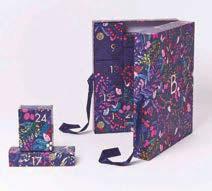
MPO, que cuenta con a Gold Medal de Ecovadis en España, ofrece también numerosas soluciones ecodiseñadas que les permiten eliminar el uso de plástico, optimizar el peso y el volumen de sus productos y favorecer el uso de recursos certificados FSC y/o reciclados. Como ejemplo, han desarrollado una gama de cajas ligeras 100 % de cartón y fabricadas en Europa, que permite un ahorro de peso del 40 % y una reduc-
ción de la huella de carbono de una serie de cajas de más del 45 %.
Grupo Seripafer lanzó su catálogo de packaging Ecolove, en el que la sostenibilidad es fundamental. Disponen de una carta de materiales que abarcan, además de plásticos reciclados y reciclables, cartulinas sostenibles FSC® y soportes ecológicos que provienen de residuos.
Finalmente, Unión Papelera presenta su Muestrario de Papeles Reciclados y Fibras Alternativas, con nuevas gamas de papeles de Favini, que utilizan la tecnología certificada EKOenergy (etiqueta ecológica internacional para las energías renovables). Uno de ellos es Refit, un papel que se elabora a partir de residuos textiles de lana y algodón, compuesto de un 40 % de papel reciclado de post-consumo y un 15 % de fibras de lana o algodón.
Otros papeles del catálogo son: Bambú TreeFree, con un nuevo gramaje de 380 g/m², perfecto para etiquetas, tarjetas y packaging; Shiro Alga Carta, Shiro Echo Raw, Crush y Remake, un papel que utiliza los residuos del proceso de la fabricación del cuero.
Más madera
En el total de la industria del envase y el embalaje en España, integrada por unas 3.180 empresas, las empresas de papel y cartón (660) son el segundo segmento más importante, solo superadas por los fabricantes de envases y materiales de envases de plástico, mientras que las empresas de madera son el más pequeño (631) y tienen el volumen de negocio más reducido, el 7 % del total (siendo el 20 % de las empresas del sector), unos 2.064,91 millones de euros. Estos datos proceden de un estudio elabo-
39 TEMA CENTRAL I MAIN TOPIC
MPO
‘
La producción del sector español asciende a 398.000 toneladas métricas, lo que supone un incremento de un 4 % The production of the Spanish sector amounts to 398,000 metric tons, which represents an increase of 4%
rado por marketAAD para el salón Hispack de Fira de Barcelona.
Las 631 empresas fabricantes de envases de madera en España tienen una concentración geográfica mucho menor en las comunidades autónomas con más presencia del sector en otros segmentos (Cataluña, Comunidad Valenciana, Madrid). En este caso acumulan el 40 % del tejido empresarial y el resto queda repartido de una forma más homogénea entre Andalucía, Murcia, País Vasco, Galicia, Castilla y León o Castilla-La Mancha. Por volumen de negocio, Andalucía (17 %) es la segunda comunidad autónoma en peso después de la Comunidad Valenciana (22 %), seguida de Madrid (15,5 %), Cataluña (11,7 %) y Castilla-León (8,5 %).
Siete mitos y hechos sobre los embalajes de cartón ondulado
Smurfit Kappa ha elaborado un listado con los siete mitos y hechos sobre el packaging de cartón ondulado. Son datos del estudio realizado por la consultora sobre sostenibilidad TwoSides:
1.- Mito. El papel es un producto que genera mucho desperdicio.
Hecho. El papel es uno de los productos que más se recicla del mundo. De hecho, la industria papelera lleva años reciclando, ya que es un material de vital importancia para la producción de papel. Además, según el informe ‘La sostenibilidad y el consumidor 2022’, elaborado por Drapers en colaboración con Smurfit Kappa, se decanta por una marca del sector moda en función de si su embalaje es sostenible, ya que valoran que los productos que adquieren tengan embalajes que sean fácilmente reciclables y que estén fabricados con materiales renovables y naturales.
2.- Mito. Solo se debe usar papel reciclado. Hecho. Las fibras vírgenes provenientes de bosques gestionados de manera sostenible son necesarias para mantener el ciclo del papel, ya que es imprescindible introducir nuevas fibras para poder sustituir aquellas que ya no puedan cumplir con las propiedades de resistencia. Es un proceso que conlleva la plantación activa de árboles. Además, estas fibras se degradan después demúltiples usos.
El tamaño de las empresas fabricantes de este sector es más reducido, siendo las empresas de menos de 10 trabajadores más del 50 % del total. Entre todas ellas, emplean un total de 10.082 trabajadores (8,9 % del total del sector del envase y embalaje).
El tejido sectorial también se encuentra menos concentrado en su TOP 10 de empresas llegando a poco más de un tercio del volumen de negocio del sector y menos de la mitad en su TOP 25. Las 611 empresas restantes se reparten más de 1.068 millones de euros de cifra de negocio.
2023 is presented as a key year in the future of the paper and cardboard packaging sector, due
3.- Mito. El papel es malo para el medioambiente.
Hecho. El papel es uno de los pocos productos verdaderamente sostenibles que existen, debido a su naturaleza renovable y natural. Por eso, la industria papelera se asegura de que la procedencia del papel que utiliza sea de bosques gestionados de forma sostenible, bajo certificados como el del Consejo de Administración Forestal (FSC) o el Programa para Reconocimiento de Certificación Forestal (PEFC).
4.- Mito. Los bosques europeos están siendo deforestados.
Hecho. Los bosques europeos crecen una media de 1 500 campos de fútbol al día. Europa es un continente completamente concienciado en el control tanto de la plantación como de la tala de árboles. Por ejemplo: en el periodo entre 2005 y 2015, el área de bosques en Europa aumentó en 44 000 m2. La mayoría de ellos tienen el certificado FSC.
5.- Mito. La producción de papel es el mayor causante de las emisiones de CO2.
Hecho. La mayor parte de la energía utilizada para crear papel es renovable y la intensidad del carbono es sorprendentemente baja. La industria papelera es la mayor usuaria y productora de energía renovable de la Unión Europea. El 60 % del consumo total de combustibles de esta industria se basa en la
to the legislative changes that are affecting the entire packaging sector, such as the regulations for single-use packaging, the future regulation of the EU of packaging and packaging waste or the Royal Decree of Packaging and Packaging Waste 1055/2022. With the approval of the latter, industrial packaging is required to be managed under an Extended Producer Responsibility System, which ensures its management and meets the collection and recycling objectives imposed by the standard.
In addition to the new laws, the increase in raw material, energy and transport costs is also having an influence. But, without a doubt, sustainability marks the future of the sector, in line with a circular economy.
biomasa. Asimismo, los sectores del papel y de la impresión son de los que menos gases de efecto invernadero emiten en la industria, con un 0,9 % en el caso del papel y un 0,1 % en el de la impresión, de un total de 24 % que representan a las industrias manufactureras.
6.- Mito. Es mejor la comunicación electrónica que la basada en papel.
Hecho. La comunicación electrónica también tiene su impacto medioambiental: la industria de las Tecnologías de la Información y Comunicación representa entre el 2,5 y el 3 % de las emisiones, y se prevé que esta cifra aumente hasta el 14 % para 2040.
7.- Mito. La producción de papel consume una gran cantidad de agua.
Hecho. El agua es un recurso fundamental para la industria papelera, pero la mayor parte del agua consumida se devuelve al medioambiente y en buenas condiciones. En concreto, el 93 % del agua utilizada, que se reutiliza dentro de la planta antes de ser tratada y devuelta al medio de donde procede.
Seven myths and facts about corrugated packaging
Smurfit Kappa has compiled a list of the seven myths and facts about corrugated packaging. The data are compiled from the study carried out by the sustainability consultancy TwoSides:
40 TEMA CENTRAL I MAIN TOPIC
ASPACK, the Spanish Association of Manufacturers of Containers, Packaging and Transformed Cardboard, has just published the data corresponding to the year 2022. According to these figures, the production of the Spanish sector amounts to 398,000 metric tons, which represents an increase of 4%. in relation to the previous exercise. The rise in turnover of millions of euros is also significant, reaching 1,200 million for the first time, driven by increases in raw materials, energy and other components of a markedly inflationary nature.
This growth of around 4% is mainly a consequence of the impact of the high growth rates of raw material, energy and transport costs, which
1.- Myth. Paper is a product that generates a lot of waste.
Fact. Paper is one of the most recycled products in the world. In fact, the paper industry has been recycling for years, since it is a material of vital importance for the production of paper. In addition, according to the report 'Sustainability and the consumer 2022', prepared by Drapers in collaboration with Smurfit Kappa, they opt for a brand in the fashion sector based on whether their packaging is sustainable, since they value that the products they purchase have packaging that are easily recyclable and that are made from renewable and natural materials.
2.- Myth. Only recycled paper should be used.
Fact. Virgin fibers from sustainably managed forests are necessary to maintain the paper cycle, since it is essential to introduce new fibers to be able to replace those that can no longer meet their resistance properties. It is a process that involves the active planting of trees. Furthermore, these fibers degrade after multiple uses.
3.- Myth. Paper is bad for the environment.
Fact. Paper is one of the few truly sustainable products in existence, due to its renewable and natural na-
already account for close to 60% of the income statement.
The number of employed workers is also increasing and is now approaching 6,000 employees. However, the number of companies operating in this field remained stable at 90 companies, in relation to previous years.
The companies that produce cardboard packaging in our country are concentrated in Catalonia (35%), the Valencian Community (24%), Madrid (11%), the Basque Country (7%) and Navarra (5%).

Currently, the export activity of the sector represents 24% of the total turnover, the highest degree of export of the sector in the last five years.
ture. For this reason, the paper industry ensures that the paper it uses comes from sustainably managed forests, under certificates such as the Forest Stewardship Council (FSC) or the Program for the Recognition of Forest Certification (PEFC).
4.- Myth. European forests are being deforested.
Fact. European forests grow an average of 1,500 football fields a day. Europe is a continent completely aware of the control of both the planting and felling of trees. For example: in the period between 2005 and 2015, the forest area in Europe increased by 44,000 m2. Most of them have the FSC certificate.
5.- Myth. Paper production is the biggest
A turnover of 285 million euros and an increase in metric tons are registered, going from 47,000 in 2019 to 85,000 in 2022. A degree of openness of the sector of almost 19%, five points more than that existing in 2019.
The study published by ASPACK also reveals the distribution of billing by consumer sector. 51% of the cardboard packages sold in Spain went to the food sectors and 49% went to the non-food sector. Of these, 13% belong to the pharmaceutical and laboratory sector, 10% to perfumery and cosmetics, 6% to drugstore and cleaning and the rest is distributed in sectors such as hardware, small appliances, office supplies, toys, footwear, clothing. textile, tobacco, automobile and others.
cause of CO2 emissions.
Fact. Most of the energy used to create paper is renewable, and the carbon intensity is surprisingly low. The paper industry is the largest user and producer of renewable energy in the European Union. 60% of the total fuel consumption of this industry is based on biomass. Likewise, the paper and printing sectors are among those that emit the least greenhouse gases in the industry, with 0.9% in the case of paper and 0.1% in that of printing, out of a total 24% representing manufacturing industries.
6.- Myth. Electronic communication is better than paper-based.
Fact. Electronic communication also has its environmental impact: the Information and Communication Technologies industry represents between 2.5 and 3% of emissions, and this figure is expected to increase to 14% by 2040.
7.- Myth. Paper production consumes a large amount of water.
Fact. Water is a fundamental resource for the paper industry, but most of the water consumed is returned to the environment and in good condition. Specifically, 93% of the water used is reused within the plant before being treated and returned to the environment from which it comes.
41 TEMA CENTRAL I MAIN TOPIC
Smurfit Kappa
In turn, in the analysis of the profitability of the sector carried out in the study, it can be highlighted that there are great differences both in the structure and in the billing and economic results. 70% of billing is carried out by 29 companies and 50% by 17 companies, which marks a trend towards concentration of billing in the sector among a limited number of companies in recent years.
Finally, in terms of sustainability, the carton packaging industry has made considerable progress in terms of packaging circularity. Paper and cardboard packaging is manufactured with a renewable, recyclable raw material that is massively recycled, 82% in 2020 according to Eurostat.
According to the Pro Carton report Carton Carbon Footprint 2023, conducted by the Swedish RISE Research Institutes, the industry has reduced its carbon footprint by 24% since 2018. The average carbon footprint of the packaging industry cardboard currently stands at 249 kgCO2e from cradle to grave per tonne of cardboard packaging. The carbon footprint from origin to destination is now just 148 kgCO2e from origin to destination per tonne of cartons.
Therefore, these results show the commitment of the fiber packaging sector to lead the packaging industry towards a circular economy.
Cartón Circular is born
The main associations of the industrial cardboard packaging value chain, made up of AFCO (Spanish Association of Manufacturers of corrugated cardboard containers and packaging), ASPACK, ASPAPEL (Spanish Association of Pulp, Paper and Cardboard Manufacturers) and REPACAR (Association Española de Recicladores Recuperadores de Papel y carton), join forces to create Cartón Circular, the SCRAP (Collective System of Extended Producer Responsibility) dedicated to ensuring the correct management and recycling of cardboard packaging in the industry.
«One of the objectives of Cartón Circular is to maintain the current management model for this waste that works very effectively, preserving the relationship between the producer of the waste and the manager. Including new agents in the management could make the process more difficult," says Manuel Fernández, president of REPACAR.
With the launch of this project, the paper industry intends to comply with national and European regulations for all agents in the packaging value chain, including packers. All this, in a context in which legislative pressure pushes companies and industries to prioritize ecodesign policies, to minimize environmental impacts and ensure compliance with the collection and recycling targets imposed on the sector.
"Cartón Circular goes beyond demonstrating the organizational capacity of the members of the value chain, it will be an essential tool to ensure the competitiveness and sustainability of industrial cardboard packaging," says Eduardo Querol, president of ASPAPEL.
Cartón Circular aspires to manage all the cardboard waste generated in the industries of our country with the support and commitment of the entire paper value chain.
"A powerful solution, tailored to the new legislation, which demonstrates the commitment of an essential and consolidated industry", he concludes. José Ramón Benito, president of ASPACK.
Business movements and image changes Corex, part of the VPK Group, signed a binding agreement in February to acquire Arteche Paper, a leading player in the production of cardboard, tubes and cardboard corners in the Iberian market that brings together, in addition to Papeleira Coreboard, the Spiralpack and Cartangola brands in Portugal and Mandriles Cicarsa, Embalpack Levante and 3A Pack in Spain. The deal is subject to customary terms being met and is expected to be completed in the second quarter of 2023.
In November, Antalis announced the global ac-

quisition of a portfolio of brands, including the well-known Conqueror, Curious Collection, Keaykolour, Pop'Set and Rives, from its long-standing supplier Arjowiggins Scotland Limited, which entered into insolvency creditors in September 2022. Together with the Olin brand, this purchase is part of Antalis' objective to offer a range of premium creative papers for corporate stationery, books and covers, textured cardstocks, premium color offset, labels and envelopes to its customers.
In relation to Arjowiggins, the Fedrigoni Group has carried out two operations that were previously part of the Arjowiggins Group. Fedrigoni has signed two strategic agreements: firstly, an industrial association with a special paper mill, producer of translucent papers in Quzhou, Zhejiang province, China. Second, the acquisition of a research and development center in Grenoble, France, which will allow Fedrigoni to further its product innovation roadmap in RFID, printed electronics and advanced research on paper substrates.
The Guarro Casas paper company has renewed its image and launched its new website, to celebrate its 325 years of history. The graphic transformation pursues an aesthetic more in line with the brand, premium and creative. This step forward for the firm coincides with its incorporation into the Fedrigoni Group in a commitment to growth and expansion within a solid group, a world leader in the manufacture of specialty paper for luxury packaging and publishing.
International Paper, a leading global producer of renewable fiber-based packaging, announced on March 1 a corporate image change to align with its strategic vision. Coinciding with the company's 125th anniversary in 2023, this new look
42 TEMA CENTRAL I MAIN TOPIC
Winter & Company
highlights International Paper's resiliency, the sustainability of its mission and its commitment to the future.
New materials and innovation in paper Metsä Group and Kemira have agreed to jointly develop a new renewable product or feedstock related to the forestry industry by 2027.
Also recently, Metsä Spring has led a funding round at Fiberwood to make insulation and packaging fossil-free. Finnish startup Fiberwood is a producer of 100% eco-friendly wood fiber insulation and packaging materials made from bystreams from the woodworking industry.
DS Smith is investigating new materials for its papermaking process and packaging solutions, including straw, daisies, hemp, cocoa shells or seaweed.
The company is testing a series of alternative fibers as part of its €117 million R&D&I plan to accelerate its work in the circular economy. The program will study the potential of fibers and the ability of these materials to replace plastic in order to diversify the range of sources used for packaging.
Specifically, DS Smith is studying the use of plants, such as daisies, for their fiber content and their potential to be made into paper. Additionally, the company has carried out the first tests in the sector in which the possible use of seaweed as a raw material is explored to eliminate problematic plastics, replacing them with cardboard.
DS Smith's innovation department is also experimenting with cocoa shells for the cardboard of chocolate packaging and is studying other materials with a good environmental profile. For example, agricultural residues in the form of straw and plants such as hemp or miscanthus, which in some cases may require much less energy and water to produce than some materials traditionally used for papermaking.
By digitizing its 1,300 coating materials in the form of high-precision VR scans and realistic photos, Winter & Company has innovated the packaging industry and the digital prototyping process. Building on this, the company's new product configurator offers the possibility to rea-
listically experiment with its wide range of materials for book covers, packaging, displays or bags, without special software.
Last year, Winter & Company introduced the first book cover material woven from recycled ocean plastic: Toile Ocean. The innovation is produced in collaboration with tide ocean SA (#tide), also based in Basel, and contributes to cleaning up the oceans.
The company #tide has specialized in the recycling of plastics linked to the ocean. The collected plastic waste is turned into a granulate through a mechanical production process and finally turned into a thread, which is the main component of Toile Ocean.
The fabric, with a natural speckle, highlights its quality by touch. Made primarily of ocean plastic, the product is woven from 100% recycled plastic waste and a water-based acrylic coating. It is also characterized by its great resistance.
Toile Ocean can be offset printed, screen printed or embossed. Its ideal applications are for book covers, premium packaging or menu cards.
MPO, which has obtained the Ecovadis Gold Medal in Spain, also offers numerous eco-designed solutions that allow them to eliminate the use of plastic, optimize the weight and volume of their products and favor the use of FSC certified and/or recycled resources. As an example, they have developed a range of lightweight boxes that are 100% cardboard and made in Europe, which allows a weight saving of 40% and a reduction in the carbon footprint of a series of boxes of more than 45%.
Grupo Seripafer launched its Ecolove packaging catalogue, in which sustainability is essential. They have a list of materials that include, in addition to recycled and recyclable plastics, FSC® sustainable cardboard and ecological supports that come from waste.
Finally, Unión Papelera presents its Sampler of Recycled Papers and Alternative Fibers, with new ranges of Favini papers, which use EKOenergy certified technology (international ecological label for renewable energies). One of
them is Refit, a paper made from wool and cotton textile waste, made up of 40% postconsumer recycled paper and 15% wool or cotton fibres.
Other papers in the catalog are: Bamboo TreeFree, with a new grammage of 380 g/m², perfect for labels, cards and packaging; Shiro Alga Carta, Shiro Echo Raw, Crush and Remake, a paper that uses waste from the leather manufacturing process.
More wood
In the total container and packaging industry in Spain, made up of some 3,180 companies, paper and cardboard companies (660) are the second most important segment, only surpassed by manufacturers of containers and plastic packaging materials, while the timber companies are the smallest (631). and they have the lowest turnover, 7% of the total (being 20% of the companies in the sector), some 2,064.91 million euros. These data come from a study carried out by marketAAD for the Hispack show at Fira de Barcelona.
The 631 companies that manufacture wooden packaging in Spain have a much lower geographical concentration in the autonomous communities with the greatest presence in the sector in other segments (Catalonia, the Valencian Community, Madrid). In this case, they accumulate 40% of the business fabric and the rest is distributed more evenly between Andalusia, Murcia, the Basque Country, Galicia, Castilla y León or Castilla-La Mancha. By turnover, Andalusia (17%) is the second largest autonomous community after the Valencian Community (22%), followed by Madrid (15.5%), Catalonia (11.7%) and Castilla-León (8.5 %).
The size of manufacturing companies in this sector is smaller, with companies with fewer than 10 workers accounting for more than 50% of the total. Among all of them, they employ a total of 10,082 workers (8.9% of the total for the container and packaging sector).
The sectoral fabric is also less concentrated in its TOP 10 companies, reaching just over a third of the sector's turnover and less than half in its TOP 25. The remaining 611 companies share more than 1,068 million euros of turnover.
43 TEMA CENTRAL I MAIN TOPIC
1. Seguridad en la Distribución.
Los envases de madera han evolucionado con el mercado, adaptándose a estándares de logística para su paletización, pero siempre manteniendo su naturalidad y su fortaleza. La madera, bien sea aserrada o tableros técnicos, cuenta con propiedades antibacterianas e higroscópicas. La higroscopía es la capacidad de regular el nivel de humedad que rodea al envase, manteniendo un nivel óptimo de humedad durante los transportes. Además, los envases de FEDEMCO cuentan con el sello de calidad Grow Quality, una certificación que sus asociados han de superar con pruebas de presión, elasticidad, carga, resistencia y contacto alimentario.
2. Sostenibilidad y reducción de la huella de carbono.
En segundo lugar, la materia prima es la madera de un árbol, pino o chopo, en su mayoría un clon estudiado por su rápido crecimiento. Con un fuste recto y liso y su escasa aparición de ramas en sus primeros metros de crecimiento, ofrece una madera perfecta para optimizar cada centímetro de su superficie. Es decir, este árbol se planta, cultiva y crece absorbiendo el CO2 del ambiente. Por cada tonelada de CO2 que almacena un chopo, expulsa a la atmósfera una media de 0,8 toneladas de oxígeno.
Pero la sostenibilidad de los envases de madera producidos por las empresas asociadas a FEDEMCO va mucho más allá del material. Crea empleo en el área rural, y además los sobrantes o desechos son reutilizables en infinidad de industrias.
3. Mínima huella hídrica.
En tercer lugar, dado que la madera es un material ya existente en la naturaleza, el proceso de transformación en envase es muy sencillo y consume pocos recursos.
La huella hídrica es un indicador medioambiental que define el volumen total de agua dulce utilizado para fabricar un producto. En la fabricación de los embalajes de madera, la huella hídrica es mínima o inexistente.
Debido a la creciente escasez de agua a nivel mundial, la huella hídrica de los bienes de consumo está cobrando importancia. Adquirir productos con baja huella hídrica como son los envases de madera es optar decididamente por la sostenibilidad.
4. Stop desperdicio alimentario.
En cuarto lugar, el ecodiseño de los envases de madera permite la circulación del aire a través de los huecos, manteniendo una temperatura similar en todo el contenedor, dando igual en qué parte del pallet o del contenedor se encuentre el fruto. Además, ofrece un rápido proceso de preenfriado, ya que el envase de madera tiene un grado de humedad propio, que facilita y agiliza el preenfriado al introducir las frutas en cámaras frigoríficas. Así, alargando el proceso de maduración y la vida útil del fruto, se lucha contra el desperdicio alimentario.
5. 100 % Reciclable.
Por último, cabe destacar que la madera es 100 % reciclable, tiene un alto valor en el mundo industrial y siempre ha existido un sistema de recuperación y reutilización. En estos momentos los cambios legislativos obligan a cuantificar y cualificar los residuos de cualquier envase, es por esto que FEDEMCO está inmersa en la creación de estudios técnicos y en una campaña de información y concienciación ciudadana con el objetivo de fomentar el uso del contenedor amarillo, como contenedor en el que depositar los envases de madera y poderlos reciclar.
La Federación Española del Envase de Madera y sus Componentes (FEDEMCO) aglutina a empresas españolas fabricantes de envases de madera, palets, embalajes y otros componentes. FEDEMCO integra a varias asociaciones provinciales del sector y, en el ámbito internacional, es miembro fundador de GROW (Group Recycling of Wood).
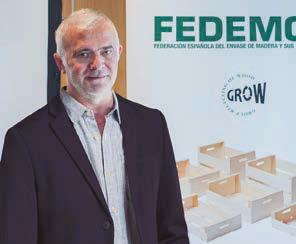
44 TEMA CENTRAL I MAIN TOPIC
¿Por qué elegir envases de madera es la opción más sostenible?
por Enrique Soler, presidente de FEDEMCO
1. Safety in Distribution.
Wooden containers have evolved with the market, adapting to logistics standards for palletizing, but always maintaining their naturalness and strength. Wood, whether sawn or technical boards, has antibacterial and hygroscopic properties. Hygroscopy is the ability to regulate the level of humidity that surrounds the container, maintaining an optimal level of humidity during transport. In addition, FEDEMCO containers have the Grow Quality seal of quality, a certification that its associates have to pass with pressure, elasticity, load, resistance and food contact tests.
2. Sustainability and reduction of the carbon footprint.
Secondly, the raw material is the wood of a tree, pine or poplar, mostly a clone studied for its rapid growth. With a straight and smooth trunk and its scarce appearance of branches in its first meters of growth, it offers a perfect wood to optimize every centimeter of its surface. That is, this tree is planted, cultivated and grows by absorbing CO2 from the environment. For every ton of CO2 that a poplar stores, it expels an average of 0.8 tons of oxygen into the atmosphere.
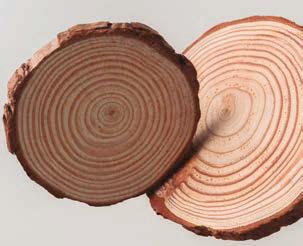
But the sustainability of the wooden packaging produced by the companies associated with FEDEMCO goes far beyond the material. It creates employment in rural areas, and also the surplus or waste is reusable in countless industries.
3. Minimum water footprint.
Thirdly, since wood is a material that already exists in nature, the process of transforming it into packaging is very simple and consumes few resources.
The water footprint is an environmental indicator that defines the total volume of fresh water used to manufacture a product. In the manufacture of wooden packaging, the water footprint is minimal or non-existent.
Due to increasing global water scarcity, the water footprint of consumer goods is gaining importance. Purchasing products with a low water footprint, such as wooden packaging, is a decided opt for sustainability.
4. Stop food waste.
Fourthly, the "ecodesign" of the wooden containers allows air to circulate through the holes, maintaining a similar temperature throughout the container, regardless of where the fruit is on the
by Enrique Soler, President of FEDEMCO
pallet or container. In addition, it offers a rapid pre-cooling process since the wooden container has its own degree of humidity, which facilitates and speeds up pre-cooling when placing the fruit in cold rooms. Thus, by extending the ripening process and the useful life of the fruit, we fight against food waste.
5. 100% Recyclable.
Finally, it should be noted that wood is 100% recyclable, has a high value in the industrial world and there has always been a recovery and reuse system. At this time, legislative changes make it necessary to quantify and qualify the waste of any container, which is why FEDEMCO is immersed in the creation of technical studies and in an information and citizen awareness campaign with the aim of promoting the use of the yellow container. as a container in which to deposit wooden containers and be able to recycle them.
The Spanish Federation of Wooden Containers and their Components (FEDEMCO) brings together Spanish companies that manufacture wooden containers, pallets, packaging and other components. FEDEMCO is a member of several provincial associations in the sector and, internationally, it is a founding member of GROW (Group Recycling of Wood).
45 TEMA CENTRAL I MAIN TOPIC
Why choosing wooden packaging is the most sustainable option?
Víctor Enciso
Environmental Manager-Glovo
Glovo entrega cualquier producto en miles de ciudades. Su tecnología conecta a los clientes con las empresas locales a través de una amplia red de mensajeros. El proyecto nació con el objetivo de transformar la forma en que los usuarios obtienen lo que necesitan, con el propósito de tener un impacto sostenible en la economía, la sociedad y el medio ambiente. Glovo delivers any product in thousands of cities. Its technology connects customers with local businesses through a vast network of messengers. The project was born with the aim of transforming the way in which users obtain what they need, with the purpose of having a sustainable impact on the economy, society and the environment.

46 ENTREVISTA I INTERVIEW
«Uno de nuestros objetivos es impulsar el uso de envases menos contaminantes»
"One of our goals is to promote the use of less polluting packaging"
¿Cuándo se creó la empresa y con qué misión?
Glovo nació en 2015 en Barcelona con el objetivo final de hacer más accesibles las ciudades a través de la tecnología. Y empezó como una app muy sencilla que le decía al usuario: «Pide lo que quieras y te lo llevamos volando». Al principio, éramos un equipo de solo 6 personas que por las noches salía a repartir los pedidos en sus propias bicicletas. Pronto nos dimos cuenta de que podíamos llegar a un número mayor de personas e innovar en el sector del delivery. Ahí es donde redoblamos nuestra ambición y el resultado ha ido mucho, mucho más allá de lo que pensábamos hace ocho años.

¿Qué servicios ofrecen?
Con 8 años ya de operativa en España, hemos conseguido convertirnos en la app de referencia en inmediatez. En la actualidad, conectamos a los usuarios con todo tipo de establecimientos desde restaurantes y supermercados hasta tiendas de electrónica, floristerías, panaderías, parafarmacias, moda, jugueterías, entre otros. En definitiva, nuestro objetivo es conectar a los usuarios con las infinitas posibilidades de sus ciudades.
Además, nuestra categoría ‘Alta Cocina’, sección que agrupa en la app los restaurantes de alto perfil gastronómico, está disponible en 22 ciudades del territorio y cuenta con casi 200 propuestas gastronómicas. Entre ellas se incluye GoXO de Dabiz Muñoz, recientemente nombrado Mejor Chef del Mundo por segundo año consecutivo, El Círculo de Carlos Maldonado, Kyoshi de Ricardo Sanz, MX RR de Roberto Ruiz y La Tasquería de Javi Estevez, primer restaurante Estrella Michelín del mundo especializado en casquería.
¿Tienen prevista alguna novedad para este año? Durante este año seguiremos trabajando para sumar nuevas tiendas y establecimientos y, en definitiva, conectar a los usuarios con las infinitas posibilidades de sus ciudades.
¿En cuántos países están presentes? En España, ¿tienen cobertura nacional?
Estamos presentes en 25 países y más de 1.400 ciudades en todo el mundo. A nivel nacional, estamos disponibles en más de 400 ciudades y localidades y cubrimos el 80 % del territorio. Esto es muy importante ya que Glovo
no es solo una realidad en Madrid, Barcelona y Sevilla sino también en municipios como Sitges, Cangas o Villajoyosa. Así que la gente valora ir a sus zonas de veraneo o a casa de sus abuelos y poder usar Glovo como hacen en su día a día.
¿De qué modo implementan la sostenibilidad en su empresa?
En 2019 creamos un departamento específico llamado “Impact and Sustainability”, encargado de impulsar proyectos con un impacto positivo en el entorno. Una vez conformado el equipo, analizamos todos los procesos internos relacionados con el impacto social y ambiental y pusimos en marcha diferentes iniciativas. Entre ellas destacan la creación de Glovo Store, un e-commerce con una amplia variedad de productos para facilitar la gestión diaria de los restaurantes y presente en 16 países. A través de este proyecto nos hemos volcado con nuestros partners, en su gran mayoría pequeños negocios, facilitando el acceso a más de 600 soluciones de envasado no contaminante e innovador con precios asequibles para incentivar su uso. Gracias al compromiso mostrado por nuestros restaurantes asociados, hemos conseguido que
‘se utilicen casi 2 M ud. de packaging sostenible, elaborados con bagazo, cartón o madera, en España, Italia, Portugal, Marruecos, Rumanía, Serbia, Georgia y Croacia durante 2021.
De esta forma, nuestros partners pueden cambiar, progresivamente, sus envases de un solo uso por otros hechos con materiales biodegradables, compostables y reciclables. Entre las diferentes soluciones, apostamos por
47 ENTREVISTA I INTERVIEW
Estamos presentes en 25 países. A nivel nacional, estamos en más de 400 ciudades y localidades y cubrimos el 80 % del territorio
We are present in 25 countries. Nationwide, we are in more than 400 cities and towns and we cover 80% of the territory
aquellas que utilizan menos materias primas para su fabricación, a la vez que conservan mejor las propiedades de los alimentos. Por otro lado, en 2020 lanzamos Glovo Access, iniciativa que pone a disposición de entidades sociales nuestra tecnología para facilitar el acceso y distribución de cestas de alimentos a colectivos en situación de vulnerabilidad. Desde su lanzamiento en 2020 y gracias a la colaboración de más de 80 entidades, hemos recuperado 700 toneladas de alimentos en España y se han entregado más de 200.000 cestas de comida a colectivos en riesgo de exclusión social.
En los 22 países en los que esta iniciativa está presente, hemos recuperado más de 1.000 toneladas de alimentos, lo que equivale a dos millones de cestas de comida, y se han entregado más de medio millón de pedidos con fines sociales.
En definitiva, desde Glovo estamos convencidos de que la tecnología es capaz de solucionar o minimizar muchos de los problemas de la sociedad.
Los pedidos urgentes a domicilio generan niveles de contaminación más altos que las compras en tienda física o los envíos de dos a cinco días. ¿Cómo puede Glovo mejorar esta situación?
Gracias a la última transformación del comercio electrónico, las ciudades se han vuelto más accesibles y los comercios han podido desarrollar nuevos canales que complementan
sus ventas en el mundo físico. El producto no tiene que trasladarse, ya que está en la propia tienda dentro de la ciudad y próximo al usuario final, de manera que a través de la tecnología se hacen posibles tiempos de entrega cada vez más reducidos.
Además, gracias a la paulatina transformación de la flota de vehículos de reparto en vehículos eléctricos, las entregas ultrarápidas se están posicionando como alternativas más eficientes y menos contaminantes. De hecho, desde Glovo nos hemos fijado como objetivo para 2030 que el 67 % de los pedidos sean entregados con vehículos no contaminantes en los 25 países en los que estamos presentes.
Si el establecimiento con el que trabajan no les proporciona el packaging, ¿qué tipo de envases utilizan?
Como comentaba, gracias al lanzamiento de Glovo Store, ponemos a disposición de nuestros restaurantes y establecimientos más de 600 soluciones de envasado no contaminante e innovador con precios asequibles para incentivar su uso.
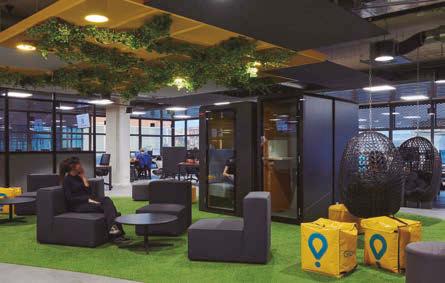
Nuestro objetivo es que los envases no contaminantes estén presentes en el 25 % de todos los pedidos que se hagan a través de Glovo en 2023. Desde la puesta en marcha de Glovo Store, ya se han vendido más de 2 millones de envases en España y más de 3,5 millones de unidades a nivel global.
¿Se da el caso de clientes que no aceptan el pedido? ¿Qué ocurre entonces con el producto? Existe una infinidad de casos. Para los pedidos de comida, si el repartidor llega al punto de entrega y después de diez minutos el usuario no responde o no se encuentra en la ubicación indicada, el repartidor cancelará el pedido por “ausencia del usuario”.
Para pedidos con un valor superior, por ejemplo la adquisición de un teléfono móvil o unos auriculares, el equipo indica al repartidor una nueva ubicación en la que deberá dejar el pedido para después reenviarlo a su destinatario.
¿Cuál es la política de Glovo con los repartidores?
¿Por qué cree que suele estar en el punto de mira? Glovo funciona gracias a la confianza de establecimientos, usuarios y repartidores. Para nosotros es importante ofrecer la mejor experiencia posible con nuestra plataforma a todos ellos y ponemos mucho esfuerzo en ello. La nueva economía digital genera debate, no solo en España sino en muchos países del mundo. Creemos que hay que responder a los retos que se presentan pero sin perder las oportunidades que nos brinda.
¿Por qué decidieron unirse al Clúster del Packaging?
Uno de nuestros objetivos como compañía es impulsar el uso de envases menos contaminantes. Para ello, en 2022 decidimos unirnos al Clúster del Packaging, una de las asociaciones más importantes del sector. Después de un año de colaboración estamos muy contentos de renovar nuestro acuerdo. Ambas entidades compartimos un objetivo común: impulsar y potenciar el uso de envases y embalajes hechos con materiales biodegradables, compostables y reciclables.
¿Cuáles son sus objetivos a medio y largo plazo? El principal objetivo es seguir siendo relevante y referente para el usuario en todas las categorías, porque con la llegada de competidores más especializados, tenemos que subir nuestro nivel de servicio en cada uno de ellos.
Ahora el usuario no necesita acceder a distintos e-commerce puesto que en una única app ya encuentra los productos que necesita en su día a día. De este modo, desde Glovo
48 ENTREVISTA I INTERVIEW
estamos construyendo centros comerciales virtuales, disponibles a golpe de click en sus teléfonos. Seguiremos trabajando para convertirnos en la aplicación multicategoría de referencia en España.
When was the company created and with what mission?
Glovo was born in 2015 in Barcelona with the ultimate goal of making cities more accessible through technology. And it started as a very simple app that told the user: "Ask for what you want and we'll fly it to you." At the beginning, we were a team of only 6 people who went out at night to deliver orders on their own bicycles. We soon realized that we could reach a greater number of people and innovate in the delivery sector. That's where we redoubled our ambition and the result has gone much, much further than we thought eight years ago.
What services do you offer?
With 8 years of operation in Spain, we have managed to become the reference app immediately. Currently, we connect users with all kinds of establishments from restaurants and supermarkets to electronics stores, florists, bakeries, parapharmacies, fashion, toy stores, among others. In short, our goal is to connect users with the infinite possibilities of their cities. In addition, our 'Haute Cuisine' category, a section that groups restaurants with a high gastronomic profile in the app, is available in 22 cities in the territory and has almost 200 gastronomic proposals. These include Dabiz Muñoz's GoXO, recently named Best Chef in the World for the second consecutive year, Carlos Maldonado's El Círculo, Ricardo Sanz's Kyoshi, Roberto Ruiz's MX RR and Javi Estevez's La Tasquería, the world's first offal specialized Michelin-starred restaurant.
Do you have anything new planned for this year?
During this year we will continue working to add new stores and establishments and, ultimately, connect users with the infinite possibilities of their cities.
In how many countries is it present? In Spain, do you have national coverage?
We are present in 25 countries and more than 1,400 cities around the world. Nationwide, we are available in more than 400 cities and towns
and we cover 80% of the territory. This is very important since Glovo is not only a reality in Madrid, Barcelona and Seville but also in municipalities such as Sitges, Cangas or Villajoyosa. So people value going to their summer resorts or their grandparents' house and can use Glovo as they do in their day to day.
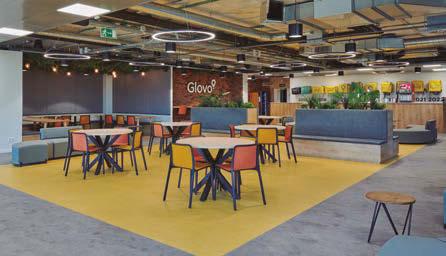
How do you implement sustainability in your company?
In 2019 we created a specific department called "Impact and Sustainability", in charge of promoting projects with a positive impact on the environment. Once the team was formed, we analyzed all internal processes related to social
and environmental impact and launched different initiatives.
Among them, the creation of Glovo Store stands out, an e-commerce with a wide variety of products to facilitate the daily management of restaurants and present in 16 countries. Through this project we have turned to our partners, the vast majority of which are small businesses, facilitating access to more than 600 non-polluting and innovative packaging solutions at affordable prices to encourage their use.
Thanks to the commitment shown by our associated restaurants, we have managed to use almost 2 M u. of sustainable packaging, made with bagasse, cardboard or wood, in Spain, Italy, Portugal, Morocco, Romania, Serbia, Georgia and Croatia during 2021. In this way, our partners can progressively change their single-use containers for others made with biodegradable, compostable and recyclable materials. Among the different solutions, we bet on those that use fewer raw materials for their manufacture, while better preserving the properties of the food.
On the other hand, in 2020 we launched Glovo Access, an initiative that makes our technology available to social entities to facilitate access and distribution of food baskets to groups in vulnerable situations. Since its launch in 2020 and thanks to the collaboration of more than 80 entities, we have recovered 700 tons of food in Spain and more than 200,000 food baskets have been delivered to groups at risk of social exclusion.
49 ENTREVISTA I INTERVIEW
En 2019 creamos el departamento “Impact and Sustainability” para impulsar proyectos con un impacto positivo en el entorno In 2019 we created the "Impact and Sustainability" department to promote projects with a positive impact on the environment
‘
In the 22 countries where this initiative is present, we have recovered more than 1,000 tons of food, which is equivalent to two million baskets of food, and more than half a million orders have been delivered for social purposes. In short, at Glovo we are convinced that technology is capable of solving or minimizing many of society's problems.
Urgent home orders generate higher levels of contamination than purchases in a physical store or shipments of two to five days. How can Glovo improve this situation?
Thanks to the latest transformation of ecommerce, cities have become more accessible and businesses have been able to develop new channels that complement their sales in the physical world. The product no has to be moved, since it is in the store itself within the city and close to the end user, so that increasingly reduced delivery times are possible through technology.
In addition, thanks to the gradual transformation of the fleet of delivery vehicles into electric vehicles, ultra-fast deliveries are positioning themselves as more efficient and less polluting alternatives. In fact, at Glovo we have set ourselves the goal for 2030 that 67% of orders are delivered with non-polluting vehicles in the 25 countries in which we are present.
If the establishment with which you work does not provide you with the packaging, what type of packaging do you use?
As I mentioned, thanks to the launch of Glovo Store, we make more than 600 non-polluting and innovative packaging solutions available to our restaurants and establishments at affordable prices to encourage their use. Our goal is for non-polluting packaging to be present in 25% of all orders made through Glovo in 2023. Since the launch of the Glovo Store, more than 2 million packages have already been sold in Spain and more than 3.5 million units globally.
Is it the case of customers who do not accept the order? What then happens to the product?
There are countless cases. For food orders, if the delivery person arrives at the delivery point and after ten minutes the user does not respond or is not at the indicated location, the
delivery person will cancel the order due to "user absence".
For orders with a higher value, for example the purchase of a mobile phone or headphones, the team indicates to the delivery person a new location where he must leave the order and then forward it to its recipient.
What is Glovo's policy with delivery people?
Why do you think you are often in the spotlight?
Glovo works thanks to the trust of establishments, users and distributors. It is
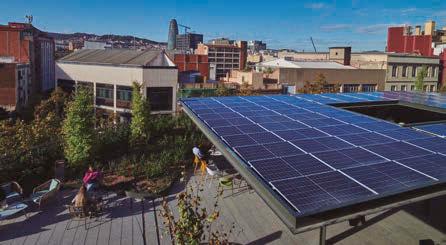
important to us to offer the best possible experience with our platform to all of them and we put a lot of effort into it.
The new digital economy generates debate, not only in Spain but in many countries around the world. We believe that we must respond to the challenges that arise but without losing the opportunities that it offers us.
Why did you decide to join the Packaging Cluster? One of our objectives as a company is to promote the use of less polluting packaging. To do this, in 2022 we decided to join the Packaging Cluster, one of the most important associations in the sector. After a year of collaboration we are very happy to renew our agreement. Both entities share a common objective: to promote and promote the use of containers and packaging made with biodegradable, compostable and recyclable materials.
What are your medium and long-term goals?
The main objective is to continue being relevant and a reference for the user in all categories, because with the arrival of more specialized competitors, we have to raise our level of service in each of them.
Now the user does not need to access different e-commerce since in a single app they already find the products they need in their day to day. In this way, from Glovo we are building virtual shopping centers, available at the click of your phone. We will continue working to become the reference multi-category application in Spain.
50 ENTREVISTA I INTERVIEW
Glovo Access pone a disposición de entidades sociales su tecnología para facilitar el acceso y distribución de cestas de alimentos a colectivos vulnerables
‘
Glovo Access makes its technology available to social entities to facilitate access and distribution of food baskets to vulnerable groups
Digitalización, sostenibilidad y diseño: las tendencias del 2023
Digitization, sustainability and design: the trends of 2023
Smart Packaging
La digitalización del sector también pasa por la incorporación de tecnología en el mismo envase, no solo en el proceso de compra. Así, el Smart Packaging surge como una línea de trabajo que explota las posibilidades de generar atractivo e interacción entre el usuario final y el producto o fabricante.
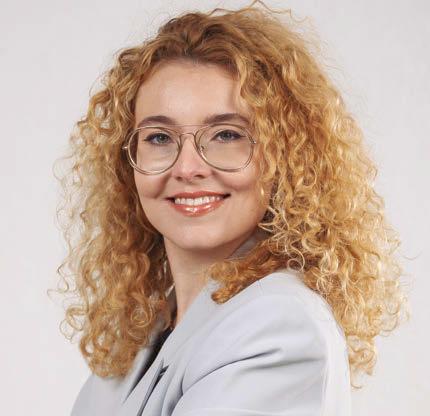
Serena
DIGITALIZACIÓN
E-commerce

La compraventa online de productos y servicios cobra una especial importancia y se posiciona como el método de transacción por excelencia para los consumidores –en 2022, aumentó un 17 % de facturación en el mercado español–. Unas transacciones que necesitan de un correcto embalaje para proteger nuestra compra durante todo el trayecto, además de ofrecernos una experiencia de uso clave como marca.
La logística del e-commerce es a su vez una oportunidad de negocio, pues implica a muchas partes de la cadena de valor, y una oportunidad de optimización, a través de estrategias como el rightsizing. Esto se traduce como el proceso de adaptar un embalaje a su producto en tanto que a tamaño y diseño, reduciendo así los costes de transporte y almacenamiento, y promoviendo una práctica más sostenible.
El Smart Packaging es una tecnología que combina el packaging inteligente y el packaging activo. El packaging inteligente es capaz de controlar los cambios que sufre el mismo producto, tanto en su estado como en sus condiciones externas de conservación. Se sirve de sensores y dispositivos que controlan en tiempo real la situación, el estado del producto y las condiciones de su entorno.
El active packaging, por otro lado, funciona a través de la emisión de alguna sustancia, o absorbiendo algún agente dañino presente en el entorno (agua, oxígeno, etc.), al detectar cambios de iluminación, presión, temperatura, humedad, etc. El objetivo es mantener el producto en el mejor estado posible durante el máximo tiempo.
Blockchain
Esta tecnología ha abierto un abanico de posibilidades aplicables en muchos sectores, como el de la banca o la agricultura, y es que la información y seguridad que ofrece se ha vuelto irresistible incluso para el sector del packaging.
Gracias al Blockchain, se puede identificar y registrar de una manera mucho más eficiente todas las etapas de la cadena de suministro, sin que se puedan sabotear ni modificar ninguna de ellas.
Virtualismo
El mundo virtual, o como es más comúnmente conocido el Metaverso, rompe las barreras de lo físico mediante la Realidad Aumentada (AR), la Realidad Mixta (MR) y a la Realidad Virtual (VR). Nos da la posibilidad de crear
El sector del packaging está más fuerte que nunca y, a pesar de la pandemia y el contexto cambiante, ha recuperado y superado sus datos de facturación y de generación de empleo con respecto a la época pre-covid. Solo en Cataluña supone el 4 % del PIB autonómico.
Es por ello que, para poner en poner en perspectiva la influencia del sector y su impacto en los diferentes aspectos de la economía y la sociedad, el Packaging Cluster, entidad que representa y trabaja codo con codo con la cadena de valor del sector del envase y el embalaje, ha detectado una serie de tendencias englobadas en 3 grandes esferas: la digitalización, la sostenibilidad y el diseño.
The packaging sector is stronger than ever and, despite the pandemic and the changing context, it has recovered and exceeded its turnover and job creation data compared to the pre-covid era. Only in Catalonia it represents 4% of the regional GDP.
That is why, to put the influence of the sector and its impact on different aspects of the economy and society into perspective, the Packaging Cluster, an entity that represents and works hand in hand with the value chain of the packaging sector and packaging, has detected a series of trends encompassed in 3 major areas: digitization, sustainability and design.
un universo único de marca con el que diferenciarnos y conectar con el público más “techie”.
SOSTENIBILIDAD
Marco regulatorio
La reciente aprobación del Real Decreto de Envases y Residuos de Envases y la también Ley de Residuos y Suelos Contaminados ha precipitado la necesidad de que las empresas y fabricantes se adapten a los requerimientos europeos y nacionales de responsabilidad ambiental.
Este nuevo marco jurídico fija objetivos de prevención, reutilización y reciclado, así como las obligaciones de diseño y marcado de envases, entre otros.
Las 3 R
El canal HORECA (hostelería y restauración) es el mayor afectado por las medidas de reutilización. Los envases de bebidas de los restaurantes deberán ser mayoritaria-
51 TENDENCIAS I TRENDS
Rebollo González de la Aleja, Responsable de Comunicación y Marketing del Packaging Cluster
mente reutilizables en 2035: el 50 % de las aguas, el 80 % de las bebidas refrescantes y el 90 % de las cervezas consumidas. También los comercios superiores a 400 m2 o aquellos que vendan a granel deberán asegurar la disponibilidad de envases reutilizables para el consumidor final. Y finalmente, otro ámbito que se va a desarrollar en este sentido serán los envases comerciales e industriales (con afectación especial en el entorno B2B), donde se espera que el 30 % del packaging sea reutilizable.
A nivel de reducción, se reclama un 13 % menos del peso de los residuos de envases producidos en 2025 y el 15 % en 2030, respecto a los generados en 2010. También una reducción del 20 % en 2030 en el número de botellas de plástico para bebidas de un solo uso que se comercializan. Además, se incorporan medidas concretas para la reducción del uso de envases superfluos y aquellos de un solo uso.
Los objetivos de reciclaje demandan para 2030 una serie de logros, como puede ser el reciclado de un mínimo del 65 % del peso de los residuos de envases. En este punto, destacar que, desde el 1 de enero del 2023, ha entrado en vigor la Ley de Residuos y Suelos Contaminados, con un polémico impuesto indirecto de 0,45€ por kilo de plástico no reciclado -virgen- que se pone en el mercado. Para 2030, los envases de plástico deberán contener un 30 % de material reciclado, lo que fomentará una oportunidad más de negocio.
Nuevos materiales
Con las limitaciones impuestas en el nuevo marco legislativo, los productores de materias primas apuestan por la búsqueda de nuevos materiales que permitan responder a los objetivos a largo plazo de sostenibilidad. Los nuevos materiales convivirán con aquellos más "tradicionales", como la madera, el vidrio o el cartón, y
aportarán un mayor grado de innovación a los packaging de las nuevas generaciones.
DISEÑO
Ecodiseño
Teniendo en cuenta las 3Rs, el ecodiseño es una práctica que cada vez será más necesaria en el desarrollo de nuevos envases y embalajes.
Un buen ejemplo de ecodiseño es la creciente tendencia de pegar el tapón a las botellas de plástico. Esto es debido a la directiva europea que da un plazo hasta 2024 para que los envases PET tengan unidos los tapones. Otra práctica referente al ecodiseño es el uso de envases monomaterial, para así, facilitar su reciclaje.
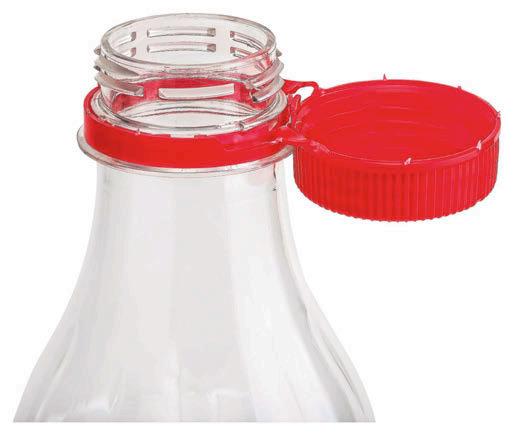
Packaging inclusivo
Cada vez más, las empresas deciden activamente incorporar el diseño inclusivo en sus envases para facilitar así el acceso a los productos a toda la comunidad de usuarios, de forma segura y satisfactoria. Algunas de las consideraciones que hemos de tener en cuenta son: la incorporación de un sistema abrefácil, la fácil lectura y asociación, o la incorporación de elementos identificativos sensoriales.
Evitar el desperdicio alimentario
Envasar el producto con proporciones adaptadas al consumo doméstico, un diseño resistente para prevenir daños durante la cadena de distribución o envases herméticos para preservar el alimento fresco durante más tiempo; son algunas de las técnicas y tendencias que se impondrán en el ámbito de la alimentación y las bebidas como parte del compromiso por acabar con el food waste.

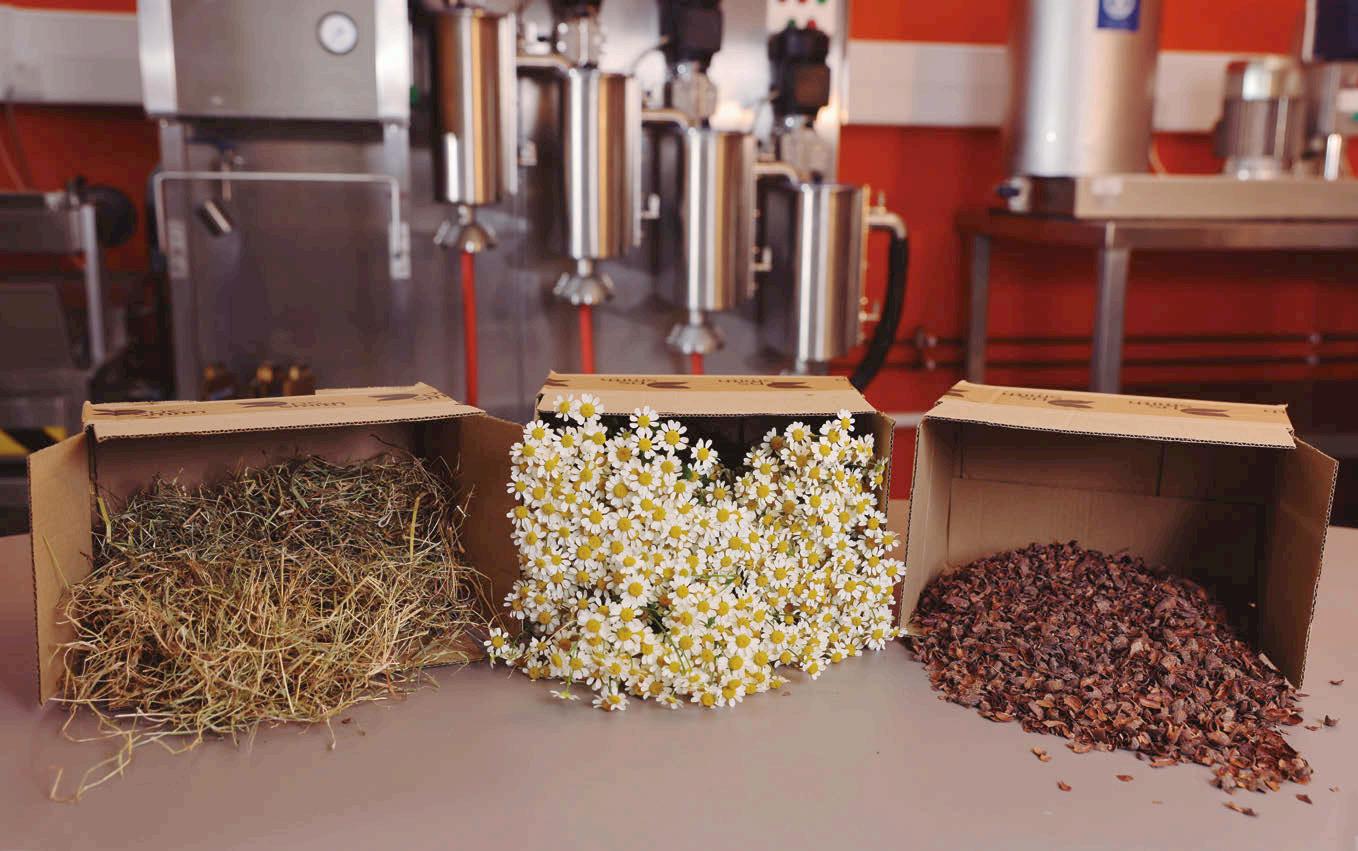
DIGITIZATION E-commerce
The online purchase and sale of products and services is of particular importance and is positioned as the transaction method par excellence for consumers – in 2022, sales increased by 17% in the Spanish market -. Transactions that require correct packaging to protect our purchase throughout the journey, in addition to offering us a key user experience as a brand.
E-commerce logistics is, in turn, a business opportunity, since it involves many parts of the value chain, and an optimization opportunity, through strategies such as rightsizing. This translates as the process of adapting a package to your product in terms of size and design,
52 TENDENCIAS I TRENDS
El sector del packaging está más fuerte que nunca; solo en Cataluña supone el 4 % del PIB autonómico
‘
The packaging sector is stronger than ever; Only in Catalonia it represents 4% of the regional GDP
Bericap
DS Smith prueba papel a base de fibras naturales para sus soluciones de packaging IDS Smith tests natural fiber-based paper for its packaging solutions
thus reducing transport and storage costs, and promoting a more sustainable practice.
Smart packaging
The digitization of the sector also involves the incorporation of technology in the packaging itself, not only in the purchase process. Thus, Smart Packaging emerges as a line of work that exploits the possibilities of generating attractiveness and interaction between the end user and the product or manufacturer.
Smart Packaging is a technology that combines intelligent packaging and active packaging. Intelligent packaging is capable of controlling the changes that the same product undergoes, both in its state and in its external conditions of conservation. It uses sensors and devices that control the situation, the state of the product and the conditions of its environment in real time. Active packaging, on the other hand, works through the emission of some substance, or by absorbing some harmful agent present in the environment (water, oxygen, etc.) by detecting changes in lighting, pressure, temperature, humidity, etc. The objective is to keep the product in the best possible condition for as long as possible.
Blockchain
This technology has opened up a range of possibilities applicable in many sectors, such as banking or agriculture, because the information and security it offers has become irresistible even for the packaging sector. Thanks to the Blockchain, all stages of the supply chain can be identified and recorded in a much more efficient way without sabotaging or modifying any of them.
Virtualism
The virtual world, or as it is more commonly known the Metaverse, breaks down the barriers of the physical through Augmented Reality (AR), Mixed Reality (MR) and Virtual Reality (VR). It gives us the possibility of creating a unique brand universe with which to differentiate ourselves and connect with the most “techie” public.
SUSTAINABILITY Regulatory framework
The recent approval of the Royal Decree on Packaging and Packaging Waste and the Law on Waste and Contaminated Soils has precipitated the need for companies and manufacturers to adapt to European and national environmental responsibility requirements. This new legal framework sets prevention, reuse and recycling objectives, as well as packaging design and marking obligations, among others.
The 3 R's
The HORECA channel (hotels and restaurants) is the most affected by the reuse measures. Restaurant beverage containers should be mostly reusable by 2035: 50% of water, 80% of soft drinks and 90% of beers consumed. Also, businesses larger than 400 m2 or those that sell in bulk must ensure the availability of reusable containers for the final consumer. And finally, another area that is going to be developed in this sense will be commercial and industrial packaging (with special affectation in the B2B environment) where 30% of the packaging is expected to be reusable. At the reduction level, 13% less weight of packaging waste produced in 2025 and 15% in 2030 is claimed, compared to that generated in 2010. 20% reduction in 2030 in the number of plastic beverage bottles for single use that are marketed. In addition, specific measures are incorporated to reduce the use of superfluous containers and those for single use.
The recycling objectives demand a series of achievements by 2030, such as the recycling of a minimum of 65% of the weight of packaging waste. At this point, it should be noted that since January 1, 2023, the Law on Waste and Contaminated Soils has entered into force, with a controversial indirect tax of €0.45 per kilo of non-recycled plastic -virgin- that is put on the market . By 2030, plastic packaging must contain 30% recycled material, which will foster one more business opportunity.
New Materials
With the limitations imposed in the new legislative framework, the producers of raw materials are committed to the search for new materials that allow them to respond to the long-term objectives of sustainability. The new materials will coexist with the more "traditional" ones, such as wood, glass or cardboard, and will bring a greater degree of innovation to the packaging of the new generations.
DESIGN Ecodesign
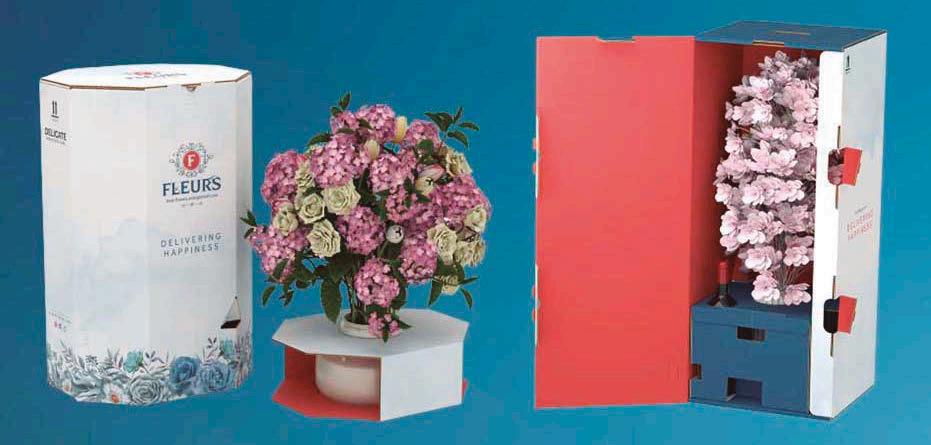
Taking into account the 3Rs, ecodesign is a practice that will be increasingly necessary in the development of new containers and packaging.
A good example of eco-design is the growing trend of sticking the cap to plastic bottles. This is due to the European directive that gives a deadline until 2024 for PET containers to have the caps attached. Another practice referring to ecodesign is the use of single-material packaging, in order to facilitate recycling.
Inclusive packaging
Increasingly, companies actively decide to incorporate inclusive design in their packaging to facilitate access to products to the entire user community, safely and satisfactorily.

Some of the considerations that we must take into account are: the incorporation of an easy-open system, easy reading and association, or the incorporation of sensory identification elements.
Avoid food waste
Packaging the product with proportions adapted to domestic consumption, a resistant design to prevent damage during the distribution chain or hermetic containers to preserve fresh food for longer; These are some of the techniques and trends that will be imposed in the field of food and beverages as part of the commitment to end Food waste.
Smurfit Kappa
53 TENDENCIAS I TRENDS
Itene ha presentado soluciones de electrónica impresa para envases Itene has presented printed electronics solutions for packaging
Proyectos Projects
PETinject investiga tecnologías industriales para fabricar envases
Packaging Cluster coordina el proyecto PETinject, una iniciativa empresarial formada por BertIA, Industrias Plásticas Triana, KUKA, Molmasa, Tepsis y VM Systems. Las 6 empresas y el clúster colaboran codo con codo para encontrar un sistema de producción de envases reciclables PET que integre el proceso de moldeo, digitalización y automatización, de modo que sea mucho más eficiente y sostenible.
El consorcio investiga cómo el fabricante de envases plásticos por inyección, Industrias Plásticas Triana, podría incorporar un nuevo proceso industrial en su planta de producción de Barberà del Vallés, con el que fabricar envases PET, aptos para alimentos y con una gran capacidad de reciclado. Para ello, por un lado, IP Triana y Molmasa, se centrarán en la investigación, diseño y desarrollo del primer molde de inyección, así como la construcción y pruebas de esta nueva tecnología, que permita ser integrada en el sistema productivo. Por otro lado, VM Systems, desarrolladores de sistemas de automatización, crearán una solución de manipulación de los envases robotizada para el desmoldeo de los envases, así como la etapa de encajado, con una estación de control de calidad. Tepsis liderará el desarrollo del sistema de captación de los datos de los diferentes elementos que intervienen en el proceso y definir la arquitectura para almacenarlas en la base de datos de IP Triana. A partir de aquí, BertIA desarrollará un modelo de análisis de datos descriptivo que permita a IP Triana determinar el óptimo funcionamiento de los equipos y elementos involucrados en este avanzado proceso, analizando la productividad, las variables de los distintos sistemas y la calidad del producto final, y poder proveer posibles limitaciones o fallos. Por último, Kuka Iberia y VM Systems se encargarán de digitalizar el proceso robotizado de manipulación de los envases PET, conectando el entorno virtual con el físico.
Packaging Cluster coordinates the PETinject project, a business initiative formed by BertIA, Industrias Plásticas Triana, KUKA, Molmasa, Tepsis and VM Systems. The 6 companies and the cluster collaborate side by side to find a recyclable PET container production system that integrates the molding, digitalization and automation process, so that it is much more efficient and sustainable.
The consortium investigates how the manufacturer of plastic injection containers, Industrias Plásticas Triana, could incorporate a new industrial process in its production plant in Barberà del Vallés, with which to manufacture PET containers, suitable for food and with a great capacity for recycling.
To this end, on the one hand, IP Triana and Molmasa, specialists in the manufacture of molds and industrial solutions, will focus on the research, design and development of the first injection mould, as well as the construction and testing of this new technology, which allows be integrated into the current production system.
VM Systems, developers of automation systems, will create a robotic container handling solution for container demolding, as well as the packing stage, with a quality control station.
Tepsis will lead the development of the data collection system of the different elements involved in the process and define the architecture to store them in the IP Triana database.
From here, BertIA will develop a descriptive data analysis model that allows IP Triana to determine the optimal functioning of the equipment and elements involved in this advanced process, analyzing productivity, the variables of the different systems and the quality of the final product. , and to be able to provide possible limitations or failures.
Lastly, Kuka Iberia and VM Systems will be in charge of digitizing the robotic handling process for PET containers, connecting the virtual environment with the physical one.

54 CLÚSTER DEL PACKAGING
PET con material reciclado PETinject investigates industrial technologies to manufacture PET containers with recycled material
La industria del packaging en Cataluña crece después de la pandemia
Según el análisis hecho por el Packaging Cluster, el sector del envase y el embalaje se recupera y supera los niveles de facturación previos a la pandemia de la covid. El mercado europeo prevé un crecimiento de un 5,76 % de las ventas hasta 2026. Destaca la industria del plástico y la del cartón por volumen de facturación. Para maximizar los números previstos, el clúster detectó las principales macro tendencias de 2023, que estarán vertebradas bajo los ejes de la digitalización, la sostenibilidad y el diseño.
The packaging industry in Catalonia grows after the pandemic

According to the analysis carried out by the Packaging Cluster, the container and packaging sector is recovering and exceeds the turnover levels prior to the covid pandemic. The European market forecasts a growth of 5.76% in sales until 2026. The plastics and cardboard industries stand out by turnover.
To maximize the expected numbers, the cluster detected the main macro trends of 2023, which will be structured under the axes of digitization, sustainability and design.
Se celebra el primer PackagingNET entre empresas de la industria del envase y el embalaje
Los PackagingNET son jornadas organizadas por el Packaging Cluster que nacen con la voluntad de motivar el networking entre sus miembros asociados y agentes clave. El pasado 21 de febrero tuvo lugar el primer encuentro, con más de 25 profesionales del sector, y un invitado de honor, el empresario catalán Enric Crous.
The first PackagingNET is held between companies in the container and packaging industry
The PackagingNET are conferences organized by the Packaging Cluster that were created with the aim of encouraging networking among its associated members and key agents. The first meeting took place on February 21, with more than 25 professionals from the sector, and a guest of honor, the Catalan businessman Enric Crous.

www online www.packagingcluster.com 55 CLÚSTER DEL PACKAGING
www online www.packagingcluster.com
¿Qué es Re-pot y por qué se creó?
Re-pot market es un supermercado online que ofrece al consumidor la posibilidad de consumir sus productos habituales sin generar ningún tipo de residuo. ¿Cómo lo hacemos? Ofreciendo todos nuestros productos en envases retornables. ¡Vamos como el lechero antiguamente pero en la compra completa! Una vez el cliente consume el producto, pasamos por su casa, sin coste, a recoger los envases vacíos, que posteriormente limpiamos, desinfectamos y volvemos a utilizar.
Tres personas comprometidas con el medio ambiente que siempre hemos intentado reducir nuestro impacto fundamos el proyecto. No obstante, nos dimos cuenta que era súper difícil, o muy costoso, reducir el impacto cuando se trataba de productos de la cesta básica (alimentación, bebidas, higiene, limpieza del hogar, etc), ya que las únicas opciones que existían en el mercado eran las pequeñas tiendas a granel de barrio (difícil de gestionar si eres una persona con poco tiempo) o supermercados ecológicos (productos con costes un 60 % superior al supermercado tradicional).
En este contexto, decidimos crear Re-pot market para permitir al consumidor final un consumo sostenible, fácil de usar y asequible.
Actualmente ya llevamos un año en funcionamiento y hemos ahorrado al planeta el equivalente a +90.000 botellas PET de 1,5L.
¿Cómo funciona?
El funcionamiento es muy sencillo, como un supermer-
Alejandro Roset Co-fundador y CEO Re-pot market

cado normal con la diferencia que, una vez finalizado el producto, los envases se deben devolver a Re-pot market.
¿Qué debe hacer el cliente para devolver el envase a Re-pot market?
Uno de nuestros objetivos cuando creamos Re-pot fue que usar nuestro servicio fuera lo más cómodo posible. Por tanto, el cliente no debe realizar ninguna gestión para devolver los envases, solo le debe entregar los envases vacíos al repartidor cuando este le entrega un nuevo pedido. Posteriormente, somos nosotros que realizamos las gestiones pertinentes en nuestro almacén.
¿Qué tipo de envases utilizan?
Actualmente, utilizamos envases de vidrío retornables para nuestros productos en el 98 % de los casos. En el resto, son envases de aluminio retornables. Decidimos utilizar el vidrio como envase retornable porque nos permitía maximizar las reutilizaciones de un envase (como mínimo 30 veces por envase) y aparte, nos permitía entregar productos libres de químicos, ya que el vidrio es un material innocuo al producto que contiene.
¿Cree que el consumidor es más consciente de reciclar que de reutilizar?
El consumidor está más acostumbrado a oír la palabra reciclar en vez de reutilizar ya que se ha empezado a utilizar en los últimos años. No obstante, cada vez más el cliente está más concienciado que la verdadera manera de minimizar su impacto en el consumo es con envases reutilizables y no reciclando envases que están perfectos en el momento que se lanzan al contenedor pertinente.
Además, cada vez más la sociedad se va dando cuenta que el modelo de usar, tirar y reciclar es un modelo fallido. En España, según Greenpeace, solo se recicla correctamente el 25 % de los envases que llegan al mercado, el resto yace en vertederos, se incinera o queda en nuestros ecosistemas.
Dado que la compra al supermercado suele pedirse con poca antelación, ¿han pensado en cómo conseguir generar menos emisiones con el transporte?
Minimizar nuestras emisiones está incorporado en el ADN de Re-pot market desde su creación y esto incluye
56 CLÚSTER DEL PACKAGING
Entrevista al socio Member interview
por tanto, minimizar el impacto de la logística en las entregas. Es por este motivo que el 100 % de nuestros pedidos se realizan en vehículo eléctrico y no ofrecemos entregas Fast Delivery y Same day, ya que creemos que este modelo no es sostenible. Nuestros clientes pueden solicitar una entrega como pronto para el día siguiente y ofrecemos franjas horarias de 2 h en las que se entregará el pedido. Esto permite al cliente organizarse para recibir su compra y a nosotros organizar las rutas para minimizar desplazamientos.
¿Qué beneficios les ofrece pertenecer al Clúster del Packaging?
Consideramos que pertenecer al Clúster del Packaging es una oportunidad magnífica para conocer todas las novedades del sector de los mejores profesionales y, también, nos permite estar conectados a una red de profesionales que te dan apoyo sin pensárselo dos veces.

What is Re-pot and why was it created?
Re-pot market is an online supermarket that offers consumers the possibility of consuming their usual products without generating any type of waste. How do we do it? Offering all our products in returnable containers. We go like the milkman in the past but in the complete purchase! Once the customer consumes the product, we go to your home, free of charge, to collect the empty containers, which we later clean, disinfect and reuse. Three people committed to the environment who have always tried to reduce our impact founded the project. However, we realized that it was extremely difficult, or very expensive, to reduce the impact when it came to basic basket products (food, drinks, hygiene, household cleaning, etc.) since the only options that existed on the market They were small neighborhood bulk stores (difficult to manage if you are a person with little time) or organic supermarkets (products with costs 60% higher than traditional supermarkets).
In this context, we decided to create Re-pot market to allow the final consumer a sustainable, easy-to-use and affordable consumption. Currently we have been in operation for a year and we have saved the planet the equivalent of +90,000 1.5L PET bottles.
How does it work?
The operation is very simple, like a normal supermarket with the difference that, once the product is finished, the containers must be returned to Repot market.
What must the customer do to return the container to Re-pot market?
One of our goals when we created Re-pot was to make using our service as comfortable as possible. Therefore, the customer must not carry out any procedure to return the containers, he must only deliver the empty containers to the delivery man when he is delivering a new order. Subsequently, we are the ones who carry out the pertinent procedures in our warehouse.
What kind of packaging do you use?
We currently use returnable glass containers for our products in 98% of
cases. In the rest, they are returnable aluminum containers. We decided to use glass as a returnable container because it allowed us to maximize the reuse of a container (at least 30 times per container) and also, it allowed us to deliver chemical-free products, since glass is a material that is harmless to the product it contains.
Do you think that the consumer is more aware of recycling than reusing?
The consumer is more accustomed to hearing the word recycle instead of reuse since it has begun to be used in recent years. However, customers are increasingly aware that the real way to minimize their impact on consumption is with reusable containers and not recycling containers that are perfect at the time they are thrown into the relevant container. In addition, more and more society is realizing that the use, throw away and recycle model is a failed model. In Spain, according to Greenpeace, only 25% of the packaging that reaches the market is correctly recycled, the rest lies in landfills, is incinerated or remains in our ecosystems.
Since the purchase at the supermarket is usually ordered at short notice, have you thought about how to achieve fewer emissions with transport?
Minimizing our emissions has been incorporated into the DNA of Re-pot market since its creation and this therefore includes minimizing the impact of logistics on deliveries. It is for this reason that 100% of our orders are made by electric vehicle and we do not offer Fast Delivery and Same day deliveries, as we believe that this model is not sustainable. Our customers can request a delivery for the next day at the earliest and we offer 2-hour time slots in which the order will be delivered. This allows the customer to organize to receive their purchase and for us to organize the routes to minimize travel.
What benefits does belonging to the Packaging Cluster offer you?
We believe that belonging to the Packaging Cluster is a magnificent opportunity to find out all the news in the sector from the best professionals and also allows us to be connected to a network of professionals who give you support without thinking twice.
57 CLÚSTER DEL PACKAGING
Metsä Board reconocida de nuevo con la triple calificación A de CDP
Metsä Board recognised again with triple CDP ‘A’ score
nuevas hojas de ruta detalladas e interactivas para ayudar a visualizar las medidas que adoptará para alcanzar sus objetivos de sostenibilidad para 2030 en relación con el cambio climático y el uso del agua.
Este es el séptimo año que Metsä Board logra la posición en la lista A de CDP Clima y en la lista A de CDP Agua, y la segunda vez en la lista A de CDP Bosque.
Por segundo año consecutivo, Metsä Board ha sido reconocida con la triple calificación ‘A’ de CDP por su transparencia en materia de cambio climático, bosques y seguridad del agua. Metsä Board es una de las 12 empresas que han obtenido la triple A, de un total de casi 15.000 empresas puntuadas.
«Tenemos ambiciosos objetivos de sostenibilidad, incluida una producción y un uso de materias primas 100 % libres de residuos fósiles para finales de 2030. Para seguir nuestro camino hacia los objetivos, es esencial que informemos de nuestro trabajo de sostenibilidad de forma exhaustiva, transparente y abierta. Estas posiciones en la 'Lista A' son un reconocimiento a nuestro trabajo sistemático», afirma Mika Joukio, CEO de Metsä Board. A principios de este año, Metsä Board publicó
This was the second consecutive year that Metsä Board has been recognised with triple CDP ‘A’ score for transparency on climate change, forests and water security. Metsä Board is one of only 12 companies that achieved a triple ‘A’ – out of nearly 15,000 companies scored.
“We have ambitious sustainability targets including 100% fossil free production and raw materials by the end of 2030. In order to follow our way towards the goals it is essential that we report our sustainability work comprehensively, transparently and openly. These ‘A List’ positions are a recognition of our systematic work," says Mika Joukio, CEO of Metsä Board. Earlier this year Metsä Board published new detailed, interactive roadmaps to help visualise the measures it will take to achieve its 2030 sustainability targets regarding climate change and water use.
This is the seventh year that Metsä Board achieved the position on the CDP Climate A list and the CDP Water A list, and the second time on the CDP Forest A list.

Smurfit Kappa ha publicado su primer Informe de Asignación e Impacto de los Bonos Verdes, sobre el uso de los ingresos obtenidos de su bono verde inaugural de doble tramo por valor de 1.000 millones de euros que emitió en septiembre de 2021. De acuerdo con el Marco de Financiación Verde de Smurfit Kappa, los ingresos de su Bono Verde Inaugural se han asignado a activos asociados a dos categorías: productos, tecnologías y procesos de producción adaptados a la economía circular y/o productos ecoeficientes certificados (96 %); y gestión medioambientalmente sostenible de los recursos naturales vivos y del uso de la tierra (4 %).
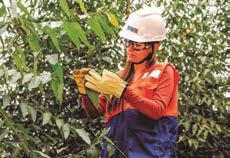
El Marco de Financiación Verde de Smurfit Kappa refleja la naturaleza sostenible de su modelo de negocio, con criterios de admisibilidad que abarcan el ámbito geográfico de las operaciones del grupo y tienen en cuenta sus sólidas prácticas empresariales circulares.
Smurfit Kappa has released its first Green Bond Impact and Allocation Report, on the use of proceeds from its inaugural €1 billion double tranche green bond it issued in September 2021. From In accordance with Smurfit Kappa's Green Finance Framework, the proceeds of its Inaugural Green Bond have been allocated to assets associated with two categories: products, technologies and production processes adapted to the circular economy and/or certified eco-efficient products (96%) ; and environmentally sustainable management of living natural resources and land use (4%).
Smurfit Kappa's Green Finance Framework reflects the sustainable nature of its business model, with eligibility criteria covering the geographical scope of the group's operations and taking into account its strong circular business practices.
Smurfit Kappa
lanza su primer Informe de Asignación e Impacto de sus Bonos Verdes
Smurfit Kappa launches its first Green Bond Allocation and Impact Report
00 SOSTENIBILIDAD I SUSTAINABILITY
Verescence ha sido reconocida por su liderazgo en transparencia corporativa y desempeño en materia de cambio climático y seguridad hídrica por parte de CDP, una organización ambiental mundial sin fines de lucro, y se aseguró un lugar en la lista doble ‘A’ de CDP de 2022. Verescence es una de las 45 empresas que lograron una doble ‘A’, de casi 15 000 empresas puntuadas en todo el mundo.
Thomas Riou, CEO de Verescence, dijo: «esta doble ‘A’ de CDP es un desempeño notable que refleja el compromiso de nuestros equipos. Este indicador es monitoreado de cerca por nuestros clientes, nuestros inversionistas y por nuestros grupos de interés en general. Somos el único embotellador de vidrio que obtuvo una doble ‘A’ en 2022». Además, por segundo año consecutivo, Verescence se ha ganado un lugar en la ‘Lista A’ de seguridad del agua de CDP por su gestión rigurosa de los recursos hídricos.
Verescence has been recognized for its leadership in corporate transparency and performance on climate change and water security by CDP, a global environmental nonprofit organization, and secured a spot on CDP's 2022 Double “A” list Verescence is one of only 45 companies to achieve a double 'A', out of nearly 15,000 rated companies worldwide.
Thomas Riou, CEO of Verescence, said: "This double 'A' from CDP is a remarkable performance that reflects the commitment of our teams. This indicator is closely monitored by our clients, our investors and by our stakeholders in general. We are the only glass bottler to earn a double 'A' in 2022." Additionally, for the second year in a row, Verescence has earned a spot on CDP's “A-List” for water safety for its rigorous management of water resources.
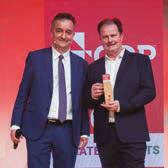
Tetra Pak investiga sobre materiales de fibra vegetal con radiación sincrotón
Tetra Pak investigates vegetable fiber materials with synchrotron radiation

Tetra Pak ha iniciado una investigación en la industria para avanzar en su objetivo de lograr el envase alimentario más sostenible a base de materiales de origen vegetal, en colaboración con MAX IV, el laboratorio de radiación sincrotrón más moderno del mundo. La investigación tiene como objetivo descubrir nuevos conocimientos sobre la nanoestructura de los materiales de fibra vegetal y su primera aproximación se enfoca en optimizar la composición de los materiales utilizados para las pajitas de papel. Se trata del primer experimento de investigación y desarrollo industrial de ForMAX, una nueva estación de investigación dedicada al estudio de los materiales de fuentes forestales, situada en el laboratorio MAX IV de Lund (Suecia).
Concretamente, la radiación de sincrotrón ofrece gran luminosidad, alta directividad y variabilidad energética, por lo que es muy adecuada para investigar materiales de origen vegetal para el envasado.
Los nuevos materiales basados en fibra vegetal deben garantizar la seguridad alimentaria, ser reciclables y más resistentes a los líquidos y la humedad, además de satisfacer las demandas de sostenibilidad.
Tetra Pak has launched industry research to advance its goal of achieving the most sustainable food packaging made from plant-based materials, in collaboration with MAX IV, the world's most modern synchrotron radiation laboratory. The research aims to discover new knowledge about the nanostructure of plant fiber materials and its first approach focuses
on optimizing the composition of the materials used for paper straws. This is the first industrial research and development experiment of ForMAX, a new research station dedicated to the study of materials from forest sources, located in the MAX IV laboratory in Lund (Sweden). Specifically, synchrotron radiation offers high luminosity, high directivity and energy variability, making it highly suitable for investigating plantbased materials for packaging.
The new materials based on vegetable fiber must guarantee food safety, be recyclable and more resistant to liquids and humidity, in addition to satisfying the demands for sustainability.
00 SOSTENIBILIDAD I SUSTAINABILITY
Verescence, reconocida con puntuación doble ‘A’ del CDP Verescence, recognized with score double 'A' of the CDP
MPO apuesta por la sostenibilidad MPO bets on sustainability
FSC y/o reciclados. El objetivo de MPO es ayudarles a mejorar la reciclabilidad de sus productos y reducir su huella medioambiental. Como ejemplo, han desarrollado una gama de cajas ligeras 100 % de cartón y fabricadas en Europa. Esta gama permite un ahorro de peso del 40 % y una reducción de la huella de carbono de una serie de cajas de más del 45 %.
MPO, fabricantes con maquinaria propia de cajas forradas, PLV de cartón y estuchería que ofrecen un servicio integral al cliente, apuesta por la sostenibilidad y cuenta con la Gold Medal de EcoVadis en España. La medalla de Oro de EcoVadis reconoce el trabajo de MPO, cuyo enfoque de la RSE se basa en tres pilares: el medio ambiente, el respeto de los seres humanos y la solidaridad territorial. Han asumido una serie de compromisos sobre todos estos temas mediante la creación de un comité directivo de RSE.
En la actualidad, proponen numerosas soluciones ecodiseñadas a sus clientes, que les permiten eliminar el uso de plástico, optimizar el peso y el volumen de sus productos y favorecer el uso de recursos certificados
MPO, manufacturers with their own machinery for lined boxes, cardboard POS and packaging that offer a comprehensive service to customers, are committed to sustainability and have the EcoVadis Gold Medal in Spain. The EcoVadis Gold medal recognizes the work of MPO, whose approach to CSR is based on three pillars: the environment, respect for human beings and territorial solidarity. They have made a series of commitments on all these issues through the creation of a CSR steering committee. Currently, they offer numerous eco-designed solutions to their customers, which allow them to eliminate the use of plastic, optimize the weight and volume of their products, and encourage the use of FSC certified and/or recycled resources. MPO's goal is to help you improve the recyclability of your products and reduce your environmental footprint.

As an example, they have developed a range of lightweight boxes that are 100% cardboard and manufactured in Europe. This range allows a weight saving of 40% and a reduction in the carbon footprint of a series of boxes of more than 45%.
Beiersdorf AG ha sido reconocida por la organización sin ánimo de lucro CDP por su liderazgo en el establecimiento de objetivos, rendimiento y transparencia en las áreas de cambio climático, bosques y seguridad hídrica, lo que le ha valido un puesto en su prestigiosa Lista A para estas tres dimensiones.
«La calificación triple A de CDP es un reconocimiento a nuestros esfuerzos por convertirnos en líderes del sector en sostenibilidad medioambiental, no solo en la fijación de objetivos ambiciosos, sino también en la adopción de medidas y la transparencia. Agradezco a todos los empleados y socios comerciales a lo largo de toda la cadena de suministro su firme apoyo en la aplicación de nuestra Agenda de Sostenibilidad Care Beyond Skin», ha declarado Vincent Warnery, consejero delegado.
Beiersdorf AG has been recognized by the non-profit organization CDP for its leadership in goal setting, performance and transparency in the areas of climate change, forests and water security, earning it a position on its prestigious "A List". for these three dimensions.
“CDP's triple A rating is recognition of our efforts to become an industry leader in environmental sustainability, not only in setting ambitious goals, but also in taking action and transparency. I thank all employees and business partners throughout the supply chain for their strong support in implementing our Care Beyond Skin Sustainability Agenda," said Vincent Warnery, CEO.
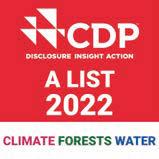
00 SOSTENIBILIDAD I SUSTAINABILITY
Beiersdorf, premiada con la Triple A de CDP por sus avances en sostenibilidad
Beiersdorf, awarded Triple A from CDP for sustainability advances
Éxito de las
de Hyflexpower en la planta de Smurfit Kappa
Successful Hyflexpower tests in the Smurfit Kappa plant
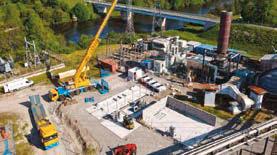
El consorcio Hyflexpower y Smurfit Kappa han anunciado la culminación con éxito de la primera fase de Hyflexpower, un proyecto de investigación sobre energías renovables que ha comenzado en la fábrica de papel que la compañía tiene en Saillat (Francia). Se trata del primer piloto en el mundo en introducir un demostrador integrado de turbina de gas de hidrógeno. Este innovador proyecto implica una importante colaboración entre varias industrias, organismos académicos e institutos de investigación, entre ellos ENGIE Solutions, Siemens Energy, Centrax, Arttic, el Centro Aeroespacial Alemán (DLR) y cuatro universidades europeas.
El proyecto piloto de hidrógeno se ha probado con éxito con una mezcla de 30 % de hidrógeno y 70 % de gas natural. Su objetivo es demostrar que la energía renovable puede convertirse en hidrógeno y servir como un medio flexible de almacenamiento de electricidad que puede utilizarse posteriormente para alimentar una turbina industrial.
The Hyflexpower consortium and Smurfit Kappa have announced the successful completion of the first phase of Hyflexpower, a renewable energy research project that has started at the company's paper mill in Saillat (France). It is the first pilot in the world to introduce an integrated hydrogen gas turbine demonstrator. This innovative project involves significant collaboration between various industries, academic bodies and research institutes, including ENGIE Solutions, Siemens Energy, Centrax, Arttic, the German Aerospace Center (DLR) and four European universities.
The hydrogen pilot project has been successfully tested with a mixture of 30% hydrogen and 70% natural gas. Its goal is to demonstrate that renewable energy can be converted to hydrogen and serve as a flexible means of storing electricity that can later be used to power an industrial turbine.
Ricoh ha sido calificada por undécima ocasión como una de las 100 empresas más sostenibles del mundo, según la 19ª edición del índice 'Global 100 Most Sustainable Corporations in the World'.

Global 100 es una clasificación anual de las empresas más sostenibles del mundo publicada por Corporate Knights, con sede en Canadá. La evaluación se realiza a través de diferentes indicadores, como los resultados medioambientales, sociales y de gobernanza, el porcentaje de ingresos sostenibles e inversiones verdes, el desempeño con proveedores, las actividades relacionadas con el clima y los servicios vinculados a la sostenibilidad. En este aspecto, Ricoh trabaja en ofrecer soluciones cada vez más sostenibles, pero también acompaña a sus clientes a generar negocios más sostenibles. Los resultados de la evaluación se anuncian cada año durante la reunión anual del Foro Económico Mundial en Davos (Suiza). La clasificación anual de esta decimonovena edición evaluó a 6.720 empresas que cotizan en bolsa con más de 1.000 millones de dólares de ingresos.
Ricoh has been rated for the eleventh time as one of the 100 most sustainable companies in the world, according to the 19th edition of the 'Global 100 Most Sustainable Corporations in the World' index.
The Global 100 is an annual ranking of the world's most sustainable companies published by Canada-based Corporate Knights. The evaluation is carried out through different indicators, such as environmental, social and governance results, the percentage of sustainable income and green investments, performance with suppliers, climate-related activities and services linked to sustainability. In this regard, Ricoh works to offer increasingly sustainable solutions, but also accompanies its customers to generate more sustainable businesses. The results of the assessment are announced each year during the annual meeting of the World Economic Forum in Davos, Switzerland. The annual ranking of this nineteenth edition evaluated 6,720 publicly traded companies with more than $1 billion in revenue.
00 SOSTENIBILIDAD I SUSTAINABILITY
pruebas
Ricoh, entre las 100 empresas más sostenibles del mundo Ricoh, among the 100 most sustainable companies in the world
Vidrala logra la máxima calificación en Cambio Climático según CDP
línea con los Taskforce for Climate-Related Financial Disclosures (TCFD), los Science-Based Targets (SBT) y los Sustainable Development Goals (SDGs). Al asociarse con CDP, las compañías refuerzan sus estrategias de sostenibilidad con un foco operativo alineado en lograr el objetivo de los 1,5 grados, evitar la deforestación y garantizar la seguridad en temas de gestión de aguas, a la vez que ofrecen a sus grupos de interés una visión del camino que van a seguir en el futuro.
Grupo Vidrala ha recibido la calificación ‘A’ en Cambio Climático y ‘B’ en Gestión de Aguas por el informe 2022 de Carbon Disclosure Project (CDP). Esto supone un gran éxito sostenible para la compañía, al ser la primera vez que entra en la categoría de liderazgo por el CDP. El informe, publicado por la organización sin ánimo de lucro, reafirma el compromiso medioambiental de Vidrala. La calificación de CDP muestra la transparencia y el rendimiento medioambiental de una empresa, en
Grupo Vidrala has received an 'A-' rating for Climate Change and 'B' for Water Management for the 2022 report of the Carbon Disclosure Project (CDP). This represents a great sustainable success for the company, being the first time it has entered the leadership category by the CDP. The report, published by the non-profit organization, reaffirms Vidrala's environmental commitment. The CDP rating shows a company's transparency and environmental performance, in line with the Taskforce for ClimateRelated Financial Disclosures (TCFD), Science-Based Targets (SBT) and Sustainable Development Goals (SDGs). By partnering with CDP, the companies reinforce their sustainability strategies with an aligned operational focus on achieving the 1.5 degrees goal, avoiding deforestation and ensuring safety in water management issues, at the same time that they offer their interest groups a vision of the path they are going to follow in the future.
Avery Dennison Labels and Packaging Materials Europe anuncia que la gran mayoría de sus adhesivos hotmelt a base de caucho han sido certificados para contenido de base biológica por el organismo certificador europeo TÜV Austria. La certificación garantiza que estos adhesivos contienen un mínimo de un 20 % de materias primas renovables. TÜV Austria ofrece su certificación OK biobased como garantía independiente del porcentaje de contenido renovable en los productos.

Los adhesivos termofusibles de caucho se utilizan en aplicaciones como transporte y logística. La nueva certificación se aplica al 98 % del volumen de adhesivo termofusible a base de caucho de Avery Dennison. La mayoría de los adhesivos, como S2045N, S2047N y TS8000, recibieron la certificación de 2 estrellas (mínimo garantizado del 40 % de contenido renovable), mientras que los adhesivos S2065N y C2075N recibieron la certificación de 1 estrella (mínimo del 20 % de contenido renovable).
Avery Dennison Labels and Packaging Materials Europe announces that the vast majority of its rubber-based hotmelt adhesives have been certified for biobased content by the European certification body TÜV Austria. The certification guarantees that these adhesives contain a minimum of 20% renewable raw materials. TÜV Austria offers its OK biobased certification as an independent guarantee of the percentage of renewable content in the products. Rubber hot melt adhesives are used in applications such as transportation and logistics. The new certification applies to 98% by volume of Avery Dennison's rubber-based hot melt adhesive. Most of the adhesives, such as S2045N, S2047N, and TS8000, received 2-star certification (guaranteed minimum 40% renewable content), while S2065N and C2075N adhesives received 1-star certification (minimum 20% renewable content). renewable).

00 SOSTENIBILIDAD I SUSTAINABILITY
Vidrala achieves the highest rating in Climate Change according to CDP
Certificación
TÜV de contenido de base biológica para los adhesivos de Avery Dennison
TÜV certification of biobased content for Avery Dennison adhesives
El Clúster de Envase impulsa tres nuevos proyectos The Packaging Cluster promotes three new projects


El Clúster de Innovación en Envase y Embalaje ha obtenido la aprobación de tres nuevos proyectos nacionales para mejorar la gestión de contenedores reutilizables, desarrollar un nuevo sistema para automatizar el trabajo en fábricas e implantar el uso de envases reutilizables en el sector Food Service. Están enmarcados en la línea de ayudas de 2022 para las Agrupaciones Empresariales Innovadoras. El proyecto ‘Track & Trace Reuse. Desarrollo de una Aplicación para la trazabilidad y control del uso envases industriales’ se centra en la creación de una aplicación informática colaborativa para la trazabilidad y control de envases reutilizables de uso industrial. El segundo es el proyecto ‘IMOP. Modelo avanzado para la Imputación automática de Mano de Obra a Producto fabricado’.
El tercero es en cooperación con el Clúster Foodservice de Cataluña, mediante un consorcio en el que también participan Bûmerang, Ecogots, Inèdit y Areas. El proyecto Road to Reuse (ROR) busca la implementación de un sistema de Depósito, Devolución y Retorno (SDDR) en los establecimientos de restauración en entornos de viajeros mediante una arquitectura cliente-API-microservicios (App). El objetivo principal es favorecer la reutilización de envases alimentarios en el sector de la restauración a través de la tecnología IoT.
The Packaging and Packaging Innovation Cluster has obtained approval for three new national projects to improve the management of reusable containers, develop a new system to automate work in factories and implement the use of reusable containers in the Food Service sector. They are framed in the 2022 aid line for Innovative Business Groups. The ‘Track & Trace Reuse. Development of an Application for the traceability and control of the use of industrial containers' focuses on the creation of a collaborative computer application for the traceability and control of reusable containers for industrial use. The second is the project 'IMOP. Advanced model for the automatic Allocation of Labor to Manufactured Product'. The third is in cooperation with the Foodservice Cluster of Catalonia, through a consortium that also includes Bûmerang, Ecogots, Inèdit and Areas. The Road to Reuse (ROR) project seeks the implementation of a Deposit, Return and Return (SDDR) system in catering establishments in traveler environments through a client-API-microservices (App) architecture. The main objective is to promote the reuse of food packaging in the catering sector through IoT technology.
01.
GPA Global anuncia la adquisición de Grupo Cosfibel
GPA Global announces the acquisition of Grupo Cosfibel
GPA Global anunció la adquisición de Grupo Cosfibel, lo que consolida su presencia europea a través de las instalaciones de fabricación clave de Cosfibel en España, Portugal y Bélgica. Este crecimiento en presencia es clave para la estrategia de GPA de ayudar a los clientes a acortar las cadenas de suministro para aumentar la velocidad de comercialización, eliminar el riesgo del suministro de materiales y reducir las emisiones de carbono. Cosfibel y su fundador Alain Chevassus son reconocidos por su trabajo con marcas premium y de alto lujo. De L’Oréal a Chanel, de LVMH a Rémy Martin y de La Durée a Damman, Cosfibel se ha establecido como uno de los principales proveedores de merchandising y packaging de lujo del mundo. Con sede en Francia, con centros de servicio global en 16 ubicaciones y trabajando para sectores como belleza y cuidado personal, vinos y licores y comida gourmet, Cosfibel cuenta con clientes de más de 70 marcas globales.
GPA Global announced the acquisition of Grupo Cosfibel, consolidating its European presence through Cosfibel's key manufacturing facilities in Spain, Portugal and Belgium. This footprint growth is key to GPA's strategy of helping clients shorten supply chains to increase speed to market, derisk material sourcing and reduce carbon emissions.
Cosfibel and its founder Alain Chevassus are recognized for their work with premium and high-luxury brands. From L'Oréal to Chanel, from LVMH to Rémy Martin and from La Durée to Damman, Cosfibel has established itself as one of the world's leading providers of luxury merchandising and packaging. Headquartered in France, with global service centers in 16 locations and serving sectors such as beauty & personal care, wine & spirits, and fine food, Cosfibel has clients from more than 70 global brands.
Itene desarrolla tintas biobasadas de color magenta y amarillo para envases
Itene develops magenta and yellow biobased inks for packaging
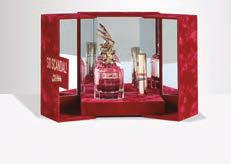
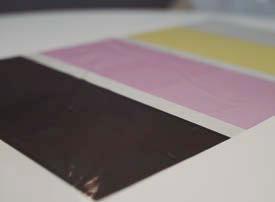
El centro tecnológico Itene ha desarrollado tintas biobasadas de color magenta y amarillo para su impresión en envases plásticos y de cartón. Estos desarrollos se han logrado en el proyecto Biosurfink 2022, financiado por la Conselleria de Innovación, Universidades, Ciencia y Sociedad Digital de la Generalitat Valenciana.
Los constituyentes y pigmentos de las tintas desarrolladas en el marco de Biosurfink 2022 proceden de materias primas renovables. A este respecto, el jefe del proyecto y Responsable de la Unidad de Aditivos, Tecnologías de impresión y Superficies Funcionales de Itene, Jesús Palenzuela, ha explicado que, al ser biobasadas, «no presentan un precio ligado al del petróleo y son menos perjudiciales para el medioambiente». En concreto, el investigador ha indicado que «se han obtenido tintas de base bio-solvente magentas y amarillas para impresión sostenible de envases por flexografía y huecograbado, que complementan las de color azul y negro logradas en el proyecto Biosurfink».
The Itene technology center has developed magenta and yellow bio-based inks for printing on plastic and cardboard containers. These developments have been achieved in the Biosurfink 2022 project, financed by the Ministry of Innovation, Universities, Science and Digital Society of the Generalitat Valenciana.
The constituents and pigments of the inks developed within the framework of Biosurfink 2022 come from renewable raw materials. In this regard, the head of the project and Head of the Itene Additives, Printing Technologies and Functional Surfaces Unit, Jesús Palenzuela, explained that, as they are biobased, "they do not have a price linked to that of oil and are less harmful to environment". Specifically, the researcher has indicated that "magenta and yellow bio-solvent-based inks have been obtained for sustainable packaging printing by flexography and rotogravure, which complement the blue and black inks achieved in the Biosurfink project”.
64 NOTICIAS I NEWS
02. 03.
Cosfibel es uno de los principales proveedores de packaging de lujo. Cosfibel is one of the main suppliers of luxury packaging
Nueva incorporación en Rafesa New incorporation in Rafesa
Joan Sánchez se incorpora a Rafesa como Key Account Manager para reforzar la penetración de mercado de la empresa. Con una dilatada experiencia tanto en su cargo como en el sector, Joan Sánchez cuenta con más de 20 años de trayectoria industrial, con conocimiento de los mercados dentro del sector packaging, perfumería, cosmética, farmacéutico y industrial. «Será una pieza que completará el engranaje que Rafesa ha estado trabajando durante estos últimos cuarenta años. Con Joan Sánchez, Rafesa apuesta por una estrategia proactiva y de servicio en una época donde la eficiencia es tan necesaria y este un imperante valor». Rafesa ofrece soluciones innovadoras y sostenibles de packaging para cosmética, perfumería y homefragrance; tarros, botellas, cierres (difusores/aerosoles, dispensadores, tapones de rosca, plástico, metal y madera). Asimismo, también propone soluciones a medida en packaging secundario.
Coveris remodela el equipo ejecutivo Coveris reshapes executive team
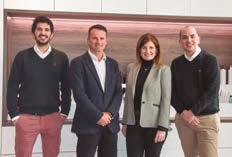
Christian Kolarik asume el cargo de director ejecutivo en Coveris desde principios de 2023,y su predecesor, Jakob A. Mosser, el cargo de presidente ejecutivo.
Christian Kolarik comenzó su carrera en la industria global del embalaje hace más de 20 años. «En combinación con nuestra tecnología de punta, nuestras inversiones y nuestra ambición de expansión, nuestro objetivo es continuar creciendo de manera sostenible, tanto en el sector de los envases de papel como en el de los plásticos», dice Christian Kolarik.
Christian Kolarik takes over the CEO position at Coveris since the beginning of 2023. His predecessor, Jakob A. Mosser, assumes the role of Executive Chairman. Christian Kolarik began his career in the global packaging industry more than 20 years ago.

"In combination with our state-of-the-art technology, our investments, and our ambition to expand, we aim to continue to grow sustainably - in both the paper packaging and plastics sectors," says Christian Kolarik.
Joan Sánchez joins Rafesa as Key Account Manager to strengthen the company's market penetration.
With extensive experience both in his position and in the sector, Joan Sánchez has more than 20 years of industrial experience, with knowledge of the markets within the packaging, perfumery, cosmetics, pharmaceutical and industrial sectors. «It will be a piece that will complete the gear that Rafesa has been working on for the last forty years. With Joan Sánchez, Rafesa is committed to a proactive and service strategy at a time when efficiency is so necessary and this is a prevailing value”.
Rafesa offers innovative and sustainable packaging solutions for cosmetics, perfumery and home fragrance; jars, bottles, closures (diffusers/aerosols, dispensers, screw caps, plastic, metal and wood). Likewise, it also proposes customized solutions in secondary packaging.
Condis obtiene el sello Residuo Zero de Saica Natur Condis obtains the Zero Waste seal from Saica Natur
La cadena de supermercados Condis ha obtenido el sello ‘De Residuos a Recursos: Zero a vertedero’ otorgado por Saica Natur, la división de negocio del Grupo Saica especializada en la gestión de residuos y servicios medioambientales. Este sello, que ha sido avalado por la certificadora multinacional alemana TÜV SÜD, acredita que todos los residuos generados en las más de 670 tiendas de la cadena, devueltos mediante logística inversa al centro logístico de Montcada i Reixac (Barcelona), alcanzan un porcentaje de valorización neta igual o superior al 95 %, lo que significa que como máximo un 5 % de los residuos generados termina en vertedero. The Condis supermarket chain has obtained the "From Waste to Resources: Zero to Landfill" seal, awarded by Saica Natur, the business division of the Saica Group specializing in waste management and environmental services. This seal, which has been endorsed by the German multinational certifier TÜV SÜD, certifies that all the waste generated in the more than 670 stores of the chain, returned by reverse logistics to the logistics center of Montcada i Reixac (Barcelona), reaches a percentage of net recovery equal to or greater than 95%, which means that a maximum of 5% of the waste generated ends up in a landfill.
65 NOTICIAS I NEWS
04. 05. 06.
Jakob A. Mosser & Christian Kolarik.
Santiago Sepúlveda (COO), Joan Sánchez (KAM), Anna Escribano (CEO) & Daniel Sánchez (CCO).
España, entre los diez países con el packaging más innovador del mundo Spain, among the ten countries with the most innovative packaging in the world
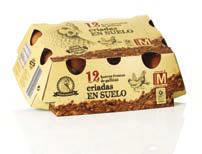
Con once galardones, España se sitúa entre los diez países con los mejores envases y embalajes del mundo en los WorldStar Awards 2023, el concurso mundial de packaging que organiza anualmente la World Packaging Organisation (WPO). En una edición con récord de participación (488 trabajos de 41 países), el certamen ha premiado 228 trabajos. El país que más premios WorldStar ha obtenido ha sido Japón (26), seguido de Australia y Nueva Zelanda (ANZ) –que se han presentado de forma conjunta– (19), India (18), Alemania (18), Turquía (14), Austria (13) y China (12). El packaging español, con once trofeos, se ha colocado octavo en el ranking de distinciones. El top ten de la clasificación lo cierran Corea del Sur (10), Brasil y la República Checa (ambos con 9). En la lista de galardonados hay trabajos de packaging de 37 países.
Ganadores españoles
Se trata del envase octogonal de 8 litros Bag in box del agua Bezoya, desarrollado por Smurfit Kappa; el packaging para los productos de limpieza ultraconcentrados Concentralia® de Salló; el pack de cartón para bocadillos Naturtilla de Flexomed; el envase de cartón para tónicas Pack Match Tonic Water, fabricado por Autajon Durero Packaging; el estuche reutilizable de edición limitada Beardburys x Gas Monkey de Carobel’s Cosmetics; el embalaje Secure E-Box de International Paper para comercio electrónico; 4Liquids de Font Packaging Group, el único contenedor de líquidos para transporte marítimo fabricado en cartón ondulado; la caja de cartón para cítricos Goliath Box; el protector y estabilizador de cartón e-Hug para el envío de botellas a través de ecommerce; y la rejilla monopieza separadora para cajas de 6 botellas de vino, estos tres de Smurfit Kappa Además de estos diez trabajos ganadores que concurrían a través los Premios Liderpack, también ha resultado galardonado Enovo Egg Carton de Alzamora Carton Packaging, que participaba a través de los European Carton Excellence Awards.
La entrega de trofeos tendrá lugar en Düsseldorf (Alemania) el 6 de mayo de 2023 en el marco de la feria Interpack.
With eleven awards, Spain is among the ten countries with the best containers and packaging in the world at the WorldStar Awards 2023, the global packaging competition organized annually by the World Packaging Organization (WPO). In an edition with record participation (488 works from 41 countries), the contest has awarded 228 works.
The country that has obtained the most WorldStar awards has been Japan (26) followed by Australia and New Zealand (ANZ) -which have presented jointly- (19), India (18), Germany (18), Turkey (14) , Austria (13) and China (12). Spanish packaging, with eleven trophies, has placed eighth in the ranking of awards. The top ten of the classification is closed by South Korea (10), Brazil and the Czech Republic (both with 9). On the list of winners there are packaging works from 37 countries.
Spanish winners
It is the octagonal 8-litre Bag in box container for Bezoya water, developed by Smurfit Kappa; the packaging for ultra-concentrated cleaning products Concentralia® from Salló; the cardboard pack for Naturtilla sandwiches from Flexomed; the cardboard container for tonics Pack Match Tonic Water, manufactured by Autajon Durero Packaging; the limited edition Beardburys x Gas Monkey reusable case from Carobel's Cosmetics; International Paper's Secure E-Box packaging for e-commerce; 4Liquids from Font Packaging Group, the only container

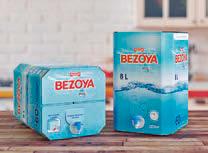
for liquids for maritime transport made of corrugated cardboard; the cardboard box for citrus fruits Goliath Box; the e-Hug cardboard protector and stabilizer for shipping bottles through e-commerce; and the one-piece separator rack for boxes of 6 bottles of wine, these three from Smurfit Kappa.
In addition to these ten winning works that competed through the Liderpack Awards, Enovo Egg Carton from Alzamora Carton Packaging, which participated through the European Carton Excellence Awards, has also been awarded. The awards ceremony will take place in Düsseldorf (Germany) on May 6, 2023 within the framework of the Interpack fair.

07.
66 NOTICIAS I NEWS
Verallia y Codorníu lanzan
una botella de cava sostenible
Verallia and Codorníu launch a bottle of sustainable cava
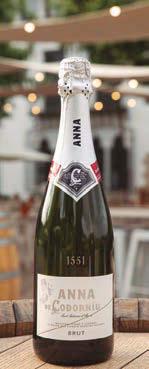
Llega al mercado una botella de cava muy ligera, desarrollada por el productor mundial de envases de vidrio Verallia de la mano de la bodega Codorníu. Esta nueva botella pesa 775 gramos, 125 menos que las tradicionales, manteniendo la misma firmeza y calidad. La compañía embotellará más de la mitad de sus cavas con la nueva botella y, en los próximos años, la previsión es extender su uso a la totalidad de su producción. El nuevo envase supondrá un gran ahorro en emisiones de CO2 y en vidrio. Para un consumo de 10 millones de botellas por año, la diferencia entre usar los antiguos envases o los nuevos es clara: se ahorrarán 250 toneladas de vidrio y, al fabricarse a tan solo 75 km de la Cava, la reducción de la huella de carbono es importante. La acción responde al firme compromiso de Codorníu con la sostenibilidad y a su propósito de ‘dar valor a la tierra’, generando el mínimo impacto sobre el planeta y garantizando que el valor se regenera en toda la cadena, desde la uva hasta la botella.En 2023, Codorníu será una bodega 100 % ecológica.
A very light bottle of cava has arrived on the market, developed by the global producer of glass containers Verallia together with the Codorníu winery. This new bottle weighs 775 grams, 125 less than the traditional ones, while maintaining the same firmness and quality. The company will bottle more than half of its cavas with the new bottle and, in the coming years, the forecast is to extend its use to all of its production.
The new packaging will mean great savings in CO2 emissions and glass. For a consumption of 10 million bottles per year, the difference between using the old containers or the new ones is clear: 250 tons of glass will be saved and as it is manufactured just 75 km from the Cava, the reduction of the carbon footprint is important.
The action responds to Codorníu's firm commitment to sustainability and its purpose of 'giving value to the land', generating the minimum impact on the planet and guaranteeing that value is regenerated throughout the chain, from the grape to the bottle. In 2023, Codorníu will be a 100% organic winery.
40 años de 40 years of Cartonajes Gamoy
Cartonajes Gamoy, que celebró a finales del pasado año su 40 aniversario, es una compañía valenciana que forma parte del grupo Gamoy-Ondumed y que está especializada en la fabricación de embalajes de cartón ondulado.
«No formamos parte de multinacionales, y eso nos hace casi únicos en la Comunidad Valenciana y en España», asegura su socio fundador, Pepe Ros. De hecho, la organización sigue los mismos pasos que marcaron sus socios fundadores en 1982. «Tenemos pasado pero sobre todo, futuro», añade, explicando que el grupo acaba de adquirir otros 8.000 metros más de suelo. La firma cuenta con un nuevo organigrama que dará paso a una nueva organización para profesionalizar la compañía, «con un comité de dirección formado por profesionales para garantizar la exitosa continuidad en la segunda generación de Cartonajes Gamoy/Ondumed», detalla Pepe Ros.
Cartonajes Gamoy, which celebrated its 40th anniversary at the end of last year, is a Valencian company that forms part of the Gamoy-Ondumed group and specializes in the manufacture of corrugated cardboard packaging.
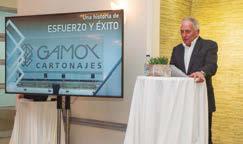
"We are not part of multinationals, and that makes us almost unique in the Valencian Community and in Spain," says its founding partner, Pepe Ros.
In fact, the organization follows the same steps as its founding members in 1982. "We have a past, but above all, a future," he adds, explaining that the group has just acquired another 8,000 meters of land. The firm has a new organizational chart that will give way to a new organization to professionalize the company "with a management committee made up of professionals to guarantee successful continuity in the 2nd generation of Cartonajes Gamoy/Ondumed", details Pepe Ros.
67 NOTICIAS I NEWS
08.
Pepe Ros.
09.
La nueva botella, como todas las que utiliza la compañía, se elabora en vidrio, 100 % reciclable. The new bottle, like all those used by the company, is made of 100% recyclable glass.
Vidrala entrega los premios de la VII edición de MasterGlass
Vidrala awards the prizes of the VII edition of MasterGlass
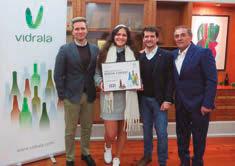
La planta SB Vidros, situada en Marinah Grande (Portugal), ha sido esta semana el escenario de la entrega de los premios de la VII edición del concurso MasterGlass, organizado por Vidrala en colaboración con la Universidad de Deusto y con la asociación de diseño EIDE. La celebración de la séptima edición de estos premios busca reconocer ideas novedosas y sostenibles en la creación de envases de vidrio innovadores y funcionales entre los estudiantes universitarios y de escuelas técnicas de España y Portugal. Además, ponen en valor el aspecto en la creación de productos con un leve impacto en el medio ambiente.
El jurado declaró ganador al proyecto Izzi, diseñado por Catarina Santos, por ser el proyecto que mejor reunía los criterios valorados, destacando la comunicación de marca y generación de percepción de valor del envase. El premio consiste en un viaje al Salón del Mueble de Milán en abril de 2023.
Tras el acto de entrega del diploma, la ganadora visitó la planta SB Vidros.
The SB Vidros plant, located in Marinah Grande (Portugal), has been the setting this week for the awards ceremony of the VII edition of the MasterGlass competition, organized by Vidrala in collaboration with the University of Deusto and the design association EIDE. The celebration of the seventh edition of these awards seeks to recognize innovative and sustainable ideas in the creation of innovative and functional glass containers among university students and technical schools in Spain and Portugal. In addition, they value the appearance in the creation of products with a slight impact on the environment.
The jury declared the Izzi project, designed by Catarina Santos, the winner, as it was the project that best met the assessed criteria, highlighting the brand communication and generation of value perception of the packaging. The prize consists of a trip to the Salone del Mobile in Milan in April 2023. After the award ceremony, the winner visited the SB Vidros plant.
Alumnos de Elisava crean reposabrazos con materiales reciclados para TMB
Elisava students create armrests with recycled materials for TMB
Alumnos del Grado en Diseño y del Grado en Ingeniería de Diseño Industrial de Elisava, bajo la dirección estratégica de la unidad de innovación del Barcelona centre de Disseny (BcD), han impulsado un proyecto piloto de cocreación centrado en el diseño y la creación de reposabrazos para los bancos de los andenes del metro de Barcelona para Transportes Metropolitanos de Barcelona (TMB). Los reposabrazos cuentan con la voluntad de dar un nuevo uso a productos de desecho, ya que están fabricados a partir de los tubos de acero inoxidable de autobuses ya retirados del servicio.
La iniciativa, que parte del área de innovación de TMB, TMBinnova y el servicio de Accesibilidad, nace con el objetivo de crear un objeto para hacer las estaciones de metro más accesibles para las personas con diversidad funcional. El proyecto está enmarcado dentro de un proceso de economía circular puesto en marcha por la propia TMBinnova para dar uso a elementos reciclados de autobuses que ya se encuentran fuera del servicio. Además, la instalación de este elemento de cocreación llega junto con la de los asientos isquiáticos, elementos que permiten el reposo lumbar de las personas usuarias.
Students of Elisava's Degree in Design and Degree in Industrial Design Engineering, under the strategic direction of the innovation unit of the Barcelona center de Disseny (BcD), have promoted a pilot co-creation project focused on the design and creation of armrests for the benches on the platforms of the Barcelona metro for Transportes Metropolitanos de Barcelona (TMB). The armrests have the will to give a new use to waste products, since they are made from the stainless steel tubes of buses already withdrawn from service.
The initiative, which comes from the TMB innovation area, TMBinnova and the Accessibility service, was born with the aim of creating an object to make metro stations more accessible for people with functional diversity. The project is part of a circular economy process launched by TMBinnova itself to make use of recycled bus elements that are already out of service. In addition, the installation of this element of co-creation comes together with that of the ischial seats, elements that allow the lumbar rest of the users.
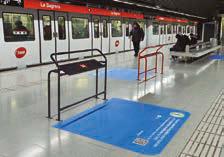
68 NOTICIAS I NEWS
10. 11.
Catarina Santos ganó el concurso con Izzi. Catarina Santos won the contest with Izzi.
Arcade
Beauty lanza discos y mascarillas ecodiseñados
Arcade Beauty launches eco-designed discs and masks
Arcade Beauty Retail presenta una colección de discos y mascarillas lavables e infinitamente reutilizables, aptos para cualquier tipo de crema o sérum.
Estos accesorios se aplican en la cara o en un área específica. Potencian la absorción de la fórmula por la piel y refuerzan su eficacia. La eco-mascarilla también se puede combinar con una mascarilla no tejida para asegurar que permanezca en su lugar y garantice resultados óptimos.
Las marcas pueden convertirlos en objetos divertidos y de creación de imagen, para ofrecerlos por separado, en kits de cuidado o como regalos. Las mascarillas y almohadillas de silicona están diseñadas para aumentar el efecto hidratante de la crema y el suero.

Arcade Beauty Retail presents a collection of washable and infinitely reusable discs and masks, suitable for any type of cream or serum. These accessories are applied to the face or a specific area. They enhance the absorption of the formula by the skin and reinforce its effectiveness. The eco-mask can also be combined with a non-woven mask to ensure that it stays in place and guarantees optimal results. Brands can turn them into fun, image-building items to offer separately, in care kits, or as gifts.
Proyecto solidario de solidarity project of International Paper
Hospitales y asociaciones infantiles de España recibieron al iniciar el año un regalo especial que guarda relación con el Día Internacional de la Educación, celebrado el 24 de enero. Se trata de ‘Cuéntame un cuento’, un proyecto solidario de International Paper que consta de una antología de cuentos infantiles escrita por los propios empleados de las plantas de la compañía en Gran Canaria y sus familias, historias en las que los protagonistas son cajas de cartón personificadas. Children's hospitals and associations in Spain received a special gift at the beginning of the year related to International Education Day, celebrated on January 24. This is "Tell me a story", an International Paper solidarity project that consists of an anthology of children's stories written by the employees of the company's plants in Gran Canaria and their families, stories in which the protagonists are boxes of personified cardboard.
CCL Label presenta un sleeve elástico con un grosor de 30 micras

CCL Label presents a sleeve elastic with a thickness of 30 microns
CCL Label presenta un sleeve elástico con un grosor de 30 micras, desarrollado en la planta Voelkermarkt de Austria. Fue especialmente diseñado para botellas de PET retornables de 1 litro, que se utilizan habitualmente en el mercado alemán de agua mineral. Este sleeve elástico extremadamente delgado se desarrolló teniendo en cuenta la sostenibilidad. CCL Label presents an elastic sleeve with a thickness of 30 microns, developed at the Voelkermarkt plant in Austria. It was specially designed for 1 liter returnable PET bottles, which are commonly used in the German mineral water market. This extremely thin stretch sleeve was developed with sustainability in mind.
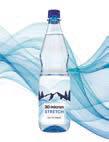
69 NOTICIAS I NEWS
Silicone masks and pads are designed to increase the moisturizing effect of the cream and serum.
12. 13. 14.
Son productos 100 % personalizables, por forma, color e impresión. These products are 100% customizable by shape, color and printing.
Nuevo configurador de productos online de Winter & Company
Winter & Company‘s new online product configurator

Con la digitalización de sus 1.300 materiales de recubrimiento en forma de escaneados VR de alta precisión y fotos realistas, Winter & Company innovó en la industria del embalaje y en el proceso de creación de prototipos digitales. Sobre esta base, el nuevo configurador de productos de la compañía ofrece la posibilidad de experimentar de forma realista con su amplia gama de materiales para cubiertas de libros, packaging, expositores o bolsas, sin software especial. With the digitalisation of its 1,300 cover materials as highprecision, ultra-photorealistic
VR scans, Winter & Company set a milestone for the packaging industry last year and revolutionised the process for creating digital prototypes. Based on this, the company‘s new product configurator offers the possibility to realistically experience the variety of its materials on books, packaging, displays or shopping bags even without special software.
Salinas Packaging Group crea una colección de NFTs que une sostenibilidad y tecnología blockchain creates a collection of NFTs that unites sustainability and blockchain technology

Salinas Packaging Group ha creado el proyecto Salinas NFT Forest. Esta acción le permite regalar compensación de emisiones CO2 a sus clientes, convirtiendo en una colección limitada de NFTs la reforestación de una hectárea de bosque calcinado y obsequiando con ello a sus principales clientes y grupos de interés. En concreto, esta hectárea pertenece a un territorio forestal devastado por las llamas en 2019 y listo para ser reforestado.
Los NFTs son representaciones exactas de activos, tanto digitales como físicos. Son únicos e indivisibles y se pueden transferir. Cada NFT de los 50 creados representa una fracción de los 1000 m2 de árboles que se replantarán y certifica la compensación de emisiones que sus clientes podrán declarar como suya. Están alojados en la plataforma OpenSea y vinculados a la red Ethereum. Para esta acción se ha colaborado con Bosques Sostenibles. El valle de Iruelas, situado en la Reserva Nacional de la Sierra de Gredos (Ávila), acogerá la plantación de 1000 árboles, sobre los que se asegura su mantenimiento por un mínimo de 40 años. Salinas Packaging Group has created the Salinas NFT Forest project. This action allows you to give away CO2 emissions compensation to your clients, converting the reforestation of one hectare of burned forest into a limited collection of NFTs and giving gifts to your main clients and interest groups. Specifically, this hectare belongs to a forest territory devastated by flames in 2019 and ready to be reforested. NFTs are exact representations of assets, both digital and physical. They are unique and indivisible. Each NFT of the 50 created represents a fraction of the 1,000 m2 of trees that will be replanted and certifies the emissions compensation that your clients will be able to declare as theirs. They are hosted on the OpenSea platform and linked to the Ethereum network. To carry out all the action, they have collaborated with Bosques Sostenibles. The Iruelas Valley, located in the Sierra de Gredos National Reserve (Ávila), will host the planting of 1,000 trees on which their maintenance is ensured for a minimum of 40 years.

70 NOTICIAS I NEWS
15. 16.
Lumson presenta el envase airless APP Light

Lumson presents the airless container APP Light
APP Light, el nuevo PCR PE airless de 50ml, enriquece la gran familia de APP Light, el nuevo PCR PE airless de 50ml, enriquece la gran familia de soluciones airless con bolsa de Lumson, una gama que también incluye el TAL en aluminio y el multipremiado XPaper en papel lanzado en 2022. El respeto por el medio ambiente sin escatimar en funciones técnicas, estética y protección del producto son las principales características de las soluciones airless con bolsa creadas por la empresa italiana y, en particular, de la nueva APP 355 Light, que es un 25 % más ligera que la equivalente al estándar APP355 gracias a la reducción del grosor de la botella y aún más sostenible gracias a los materiales que lo componen (80 % PCR HDPE + 20 % HDPE). Las mejoras también se aplican a las emisiones de CO2. A partir de un análisis de SPICE (plataforma internacional que mide la sostenibilidad de productos y procesos), los resultados mostraron que las emisiones de CO2 generadas durante la fabricación de la APP 355 LIGHT son un 19 % más bajas en comparación con la APP Start (otra Airless en PE de Lumson). Light, the new 50ml airless PCR PE, enriches the large family of Lumson bagged airless solutions, a range that also includes the aluminum TAL and the multi-award-winning paper XPaper launched in 2022. Respect for the environment without skimping on technical functions, aesthetics and product protection are the main characteristics of the bagged airless solutions created by the Italian company and, in particular, of the new APP 355 Light, which is 25% more lighter than the equivalent to the APP355 standard thanks to the reduction in the thickness of the bottle and even more sustainable thanks to the materials that compose it (80% PCR HDPE + 20% HDPE). The improvements also apply to CO2 emissions. Based on an analysis by SPICE (international platform that measures the sustainability of products and processes), the results showed that the CO2 emissions generated during the manufacture of APP 355 LIGHT are 19% lower compared to APP Start ( another Airless in PE from Lumson).
Gala, el envase dip de Quapack para maquillaje Gala, the dip container of Quapack for makeup
Gala, el nuevo envase dip de Quadpack, combina un atractivo frasco de 4,5ml de paredes gruesas con cuatro aplicadores profesionales. Se ha diseñado para albergar fórmulas para ojos, labios y rostro. Más del 95 % de su peso es monomaterial. Está fabricado en PET reciclable y las marcas pueden optar también por componentes 100 % rPET.

Sus cuatro aplicadores son: The Elegant, un preciso aplicador rígido tipo doe-foot con un espacio cóncavo en el extremo; The Essential, una espátula de punta redondeada con espacio para formulación a cada lado; The Glamorous, una herramienta cóncava y flexible con forma de pétalo, y The Irresistible, con forma de cuchara, un espacio central y punta rígida. Gala, Quadpack's new dip container, combines an attractive 4.5ml thick-walled bottle with four professional applicators. It has been designed to house formulas for eyes, lips and face.
More than 95% of its weight is monomaterial. It is made of recyclable PET and brands can also opt for 100% rPET components.
Its four applicators are: The Elegant, a precise rigid doe-foot applicator with a concave space at the end; The Essential, a round-tipped spatula with formulation space on each side; The Glamorous is a concave, flexible petal-shaped tool, and The Irresistible, a spoon-shaped, center gap, and rigid tip.
71 NOTICIAS I NEWS
17. 18.
Gala posee el nivel Avanzado de sostenibilidad según el índice de packaging de impacto positivo (PIP) de Quadpack. Gala has the Advanced level of sustainability according to Quadpack's Positive Impact Packaging (PIP) index.
La botella se puede combinar con la bomba Lumson AA355 en PCR PP, que permite el reciclaje de cada componente plástico. The bottle can be combined with the Lumson AA355 pump in PCR PP, which allows the recycling of each plastic component.
Estados Unidos y China lideran el Ranking de Mercados 2023 de Amec
The United States and China lead the Ranking of Amec markets 2023
El Observatorio Amec realiza desde hace seis años el Informe de Prospectiva de Mercados para detectar dónde se encontrarán las oportunidades para las empresas industriales españolas en el siguiente año, así como un ranking de países con mayor interés, según sectores industriales. Estados Unidos, Países Bajos y Francia y diversos países asiáticos encabezan el Ranking de Mercados 2023.
El tamaño del mercado, la resiliencia ante las crisis y la ventaja comparativa que la oferta española conserva en muchos de los sectores analizados, hacen que Estados Unidos lidere el ranking y se mantenga como uno de los pocos mercados estables para hacer negocios. Le sigue Países Bajos por tratarse de un mercado de muy fácil acceso.
Ante la volatilidad del entorno, «en el contexto actual, las estrategias del pasado solo son parcialmente útiles. Las empresas necesitan nuevos enfoques para abordar los nuevos retos, a través de la prospectiva para anticiparse y la capacidad de adaptación», explica el director general de Amec, Joan Tristany.
The Amec Observatory has been carrying out the Market Prospect Report for six years to detect where the opportunities for Spanish industrial companies will be in the following year, as well as a ranking of countries with the greatest interest, according to industrial sectors. The United States, the Netherlands and France and various Asian countries lead the 2023 Market Ranking.
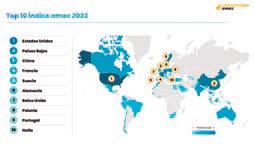
The size of the market, the resilience to crises and the comparative advantage that the Spanish offer maintains in many of the sectors analyzed, make the United States lead the ranking and remain one of the few stable markets to do business. It is followed by the Netherlands as it is a very easily accessible market. Given the volatility of the environment, “in the current context, the strategies of the past are only partially useful. Companies need new approaches to address new challenges, through the foresight to anticipate and the ability to adapt”, explains the CEO of Amec, Joan Tristany.
Aimplas produce film plástico a partir de residuos de café
Aimplas produces plastic film from coffee waste
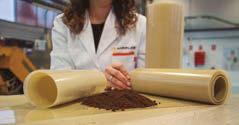
Convertir los residuos biológicos en recursos es una de las claves de la economía circular y el principal objetivo del proyecto europeo WaysTUP! El proyecto, financiado por el programa Horizonte H2020, trabaja en diferentes líneas de investigación para establecer nuevas cadenas de valor para el aprovechamiento de los biorresiduos urbanos. En el marco de este proyecto, Aimplas, Centro Tecnológico del Plástico, ha producido un film plástico a partir de posos de café usados, transformando así los residuos en fuente de productos de alto valor. En palabras de Nuria López, investigadora principal del proyecto en Aimplas, «WaysTUP! es un claro ejemplo de cómo los biorresiduos pueden desempeñar un papel importante en la transición hacia una economía circular al evitar la generación de biorresiduos y aprovechar su potencial como fuente de recursos secundarios de alto valor. En nuestro caso, estamos transformando los residuos de café en film plástico para packaging». Mientras tanto, otros socios del proyecto, como SAV – Agricultores de la Vega de Valencia, son coordinadores del proyecto responsables de la valorización de residuos para producir aditivos alimentarios, piensos y aceites para la industria alimentaria y cosmética.
Converting biological waste into resources is one of the keys to the circular economy and the main objective of the European project WaysTUP! The project, financed by the Horizon H2020 program, works on different lines of research to establish new value chains for the use of urban biowaste. Within the framework of this project, Aimplas, the Technological Center for Plastics, has produced a plastic film from used coffee grounds, thus transforming waste into a source of high-value products.
In the words of Nuria López, principal investigator of the project at Aimplas, «WaysTUP! is a clear example of how bio-waste can play an important role in the transition towards a circular economy by avoiding the generation of bio-waste and harnessing its potential as a source of high-value secondary resources. In our case, we are transforming coffee waste into plastic film for packaging." Meanwhile, other project partners, such as SAV – Agricultores de la Vega de Valencia, are project coordinators responsible for the recovery of waste to produce food additives, feed and oils for the food and cosmetics industry.
72 NOTICIAS I NEWS
19. 20.
21. Ganadores del concurso de Metsä Board ‘Desafío de DiseñoMejor con Menos’ Winners of the Metsä Board competition


‘Better with Less – Design Challenge’
Metsä Board, parte del Grupo Metsä, organizó por tercera vez el concurso internacional de diseño de envases ‘Desafío de Diseño-Mejor con Menos 2022-2023’. Un jurado de expertos eligió dos propuestas para compartir el primer puesto: Embalaje de auriculares para niños, de la diseñadora Kitty Ching, y Relleno protector de cartón, de los diseñadores Marcin Michalski, Monika Klimpel y Adrian Olejnik.
El concurso invitaba a los diseñadores a crear el envase del futuro sin residuos. 124 participantes de 27 países se unieron al reto.
El primer diseño ganador, Embalaje de auriculares para niños, se centra en la facilidad de uso y el reciclado por parte del consumidor. Gracias a una elegante ingeniería de diseño, el envase es fácil de abrir y ofrece una excelente protección del producto. El envase también es fácil de reciclar y tiene en cuenta el aspecto de la reutilización, ya que la parte interior del envase ofrece la posibilidad de guardar los auriculares.
El ganador conjunto del primer premio fue Relleno protector de cartón, una solución de protección para el transporte de televisores o aparatos electrónicos. La solución crea una estructura protectora en forma de viga que protege el contenido en cada lado del envase. Fabricado con cartón de fibra de madera virgen, es ligero y duradero. Apoya la economía circular al facilitar el reciclado y minimizar la cantidad de material utilizado.
Los ganadores del primer premio compartirán los premios del 1º y 2º puesto y recibirán 6.500 euros cada uno.
El tercer premio, dotado con 2.000 euros, ha recaído en Reshape. El concepto de envase de Dawid Thiel está diseñado para funcionar con una gama más amplia de productos gracias a un formato de envase innovador, que reduce el número de elementos de envasado que hay que almacenar.
Metsä Board ofreció como premio adicional unas prácticas para un estudiante en su Centro de Excelencia del Cartón y el Embalaje de Finlandia. El ganador fue Blíster de medicamentos de Residuo Cero, diseñado por Patrick
Walby, un envase para la industria farmacéutica que pretende sustituir el plástico y el aluminio que suelen utilizarse en los envases de medicamentos por cartón.
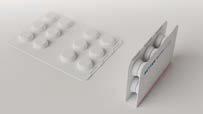
También se concedieron dos menciones honoríficas al envase Totally Bananas, diseñado por Max Gubbins, y a F’lover, diseñado por Mine Koca.
Metsä Board, part of the Metsä Group, organized for the third time the international packaging design competition Design Challenge-Better with Less 2022-2023. An expert jury chose two entries to share first place: Children's Headphone Packaging by designer Kitty Ching and Protective Cardboard Padding by designers Marcin Michalski, Monika Klimpel and Adrian Olejnik.
The contest invited designers to create the packaging of the future without waste. 124 participants from 27 countries joined the challenge.
The first winning design, “Kids Headphone Packaging”, focuses on ease of use and consumer recycling. Thanks to elegant design engineering, the packaging is easy to open and offers excellent product protection. The packaging is easy to recycle and takes into account the aspect of reuse, since the inner part of the packaging offers the possibility to store the headphones.

The joint first prize winner was “Cardboard Protector Padding”, a protection solution for transporting televisions or electronic devices. The solution creates a protective structure in the form of a beam that protects the contents on each side of the container. The packaging, made from virgin wood fiber board, is lightweight and durable, and supports the circular economy in terms of ease of recycling and minimizing
the amount of material used.
The first prize winners will share the prizes for 1st and 2nd place and will receive 6,500 euros each.
The third prize, endowed with 2,000 euros, has fallen to Reshape. Dawid Thiel's packaging concept is designed to work with a wider range of products thanks to an innovative packaging format, which reduces the number of packaging elements to be stored. Metsä Board offered as an additional prize an internship for a student at its Finnish Cardboard and Packaging Center of Excellence. The winner was the Zero Residue Medicine Blister, designed by Patrick Walby, a packaging for the pharmaceutical industry that aims to replace the plastic and aluminum that are usually used in medicine packaging with cardboard.
Two honorable mentions were also awarded to the Totally Bananas packaging, designed by Max Gubbins, and to F'lover, designed by Mine Koca.
73 NOTICIAS I NEWS
El Clúster Disseny lidera el proyecto Airtopia y
en
El Clúster Disseny de Barcelona centre de Disseny ha ganado el proyecto Airtopia y participará en Algavoltaica, dos proyectos de investigación que forman parte de la convocatoria de Apoyo a las Agrupaciones Empresariales Innovadoras.
El Clúster Disseny ha podido acceder a la convocatoria de Apoyo a las Agrupaciones Empresariales Innovadoras gracias a haber sido reconocido como Agrupación Empresarial Innovadora.
Ambos proyectos tendrán el apoyo y la financiación del Ministerio de Industria, Comercio y Turismo, así como de la Unión Europea a través del Plan de Recuperación, Transformación y Resiliencia, dentro del programa de Apoyo a las AEIs para contribuir a mejorar la competitividad de la industria española. Estos proyectos son una muestra de la labor de Barcelona centre de Disseny (BcD) para acercar la investigación y la innovación a las empresas y lo posicionan como agente clave para el acceso a recursos por parte del sector diseño.
Airtopia, un proyecto liderado por el Clúster Disseny del BcD y con la participación de Domestic Data Streamers, Elisava, Anima Design, el Hospital Sant Joan de Déu, todos miembros del Clúster Disseny, y el Clúster Salut Mental Catalunya, tendrá un coste total de 380.873 €, de los que 292.055 € los aportará el Estado con fondos de la Unión Europea. El 83 % de esta subvención, en
total 242.405,65 €, se repartirá entre los miembros del Clúster participantes en el proyecto. Airtopia busca investigar, innovar, diseñar y digitalizar un servicio que fomente unas condiciones óptimas de salud, confort físico, bienestar mental y eficiencia energética en los edificios. El objetivo final es, por tanto, prototipar un sistema basado en el Internet de las Cosas (IoT) apoyado en la gestión de datos a través del Big Data, capaz de medir, analizar, controlar y mejorar los factores de riesgo para la salud de las personas, tanto mental como física, en el interior de los edificios, a la vez que se garantiza su confort y se optimizan los recursos energéticos necesarios.
El proyecto tendrá, como epicentro de la investigación desarrollada y banco de pruebas, el Hospital Sant Joan de Déu.
Algavoltaica
El proyecto Algavoltaica está impulsado por Solartys, la Asociación Española para la internacionalización e Innovación de las empresas solares, con la participación de Barcelona centre de Disseny, Noumena Design Research Education, Ketter Batteries y el IAAC, el Instituto de Arquitectura Avanzada de Catalunya. El coste total del proyecto es de 215.409 €, de los cuales el Estado y la Unión Europea aportarán 168.411 €. BcD desarrollará tareas de divulgación y visibilidad de los resultados, así como de networking y búsqueda de partners para el incremento del Nivel de Madurez Tecnológica (TRL).
Por otra parte, Algavoltaica busca desarrollar un panel con algas para fachadas, de forma
que integre la naturaleza en las ciudades, produciendo energía y comida, como la espirulina, y aportando beneficios climáticos a los edificios gracias a su sistema de sombreado.
El panel estará dotado de una interfaz en la que el usuario podrá monitorizar la salud de las algas y la producción de energía con una batería acumulará la energía generada. Además, el diseño del panel será paramétrico y sus partes producidas a través de la fabricación digital, que incluye la impresión 3D. Los objetivos intrínsecos del proyecto son, aparte de producir energía verde, descarbonizar las áreas urbanas gracias a un sistema de fachada que pueda optimizar la capacidad de las algas de transformar CO2 en oxígeno, impulsar la investigación de nuevas fuentes de producción energética y fomentar la producción de súpernutrientes en áreas urbanas.
50 años de BcD
En 2023, Barcelona centre de Disseny celebra el 50 aniversario de su creación en 1973. En un momento en que nuestro país empezaba a abrirse al mundo, un sector de la sociedad barcelonesa vio la necesidad de dar al diseño la importancia que tenía en otras ciudades de Europa, como es el caso de Londres con el Design Council, fundado en 1944. Un grupo de diseñadores, con el apoyo de empresarios, fundaron el Centro de Diseño Industrial de Barcelona, que más tarde sería la Fundación Barcelona centre de Disseny, un centro de promoción para poner en valor el diseño, tanto en el ámbito industrial y empresarial como en la sociedad, así como para promover el encuentro entre profesionales del diseño y empresas, y afrontar el nuevo reto de la competitividad internacional y el comercio exterior.
Estos 50 años han sido muy prolíficos, con miles de actividades, proyectos, premios, exposiciones, conferencias, talleres o festivales;

74 NOTICIAS I NEWS 22.
participará
Algavoltaica The Disseny Cluster leads the Airtopia project and will participate in Algavoltaica
Prototipo del sistema biofotovoltaico del IAAC. IAAC biophotovoltaic system prototype.
han colaborado con muchas entidades tanto locales como internacionales y han llevado el diseño de Barcelona a más de 30 países.
The Barcelona Design Center Design Cluster has won the Airtopia project and will participate in Algavoltaica, two research projects that are part of the call for Support for Innovative Business Groups.
The Disseny Cluster has been able to access the call for Support for Innovative Business Groups thanks to having been recognized as an Innovative Business Group. Both projects will have the support and financing of the Ministry of Industry, Trade and Tourism, as well as the European Union through the Recovery, Transformation and Resilience Plan, within the AEIs Support program to help improve the competitiveness of the Spanish industry.
These projects are a sample of the work of the Barcelona Design Center to bring research and innovation closer to companies and position it as a key agent for access to resources by the design sector.
Airtopia, a project led by the BcD Design Cluster and with the participation of Domestic Data Streamers, Elisava, Anima Design, Hospital Sant Joan de Déu, all members of the Design Cluster, and the Catalunya Mental Health Cluster, will have a total cost of €380,873, of which €292,055 will be provided by the State with funds from the European Union. 83% of this subsidy, a total of €242,405.65, will be distributed among the members of the Cluster participating in the project.
Airtopia seeks to research, innovate, design and digitize a service that promotes optimal conditions of health, physical comfort, mental well-being and energy efficiency in buildings. The final objective is, therefore, to prototype a system based on the Internet of Things (IoT) supported by data management through Big Data, capable of measuring, analyzing, controlling and improving the risk factors for the health of people, both mentally and physically, inside the buildings, while guaranteeing their comfort and optimizing the necessary energy resources.
The epicenter of the research developed and
test bench for the project will be the Hospital Sant Joan de Déu.
Algavoltaica
The Algavoltaica project is promoted by Solartys, the Spanish Association for the internationalization and innovation of solar companies, with the participation of Barcelona Center de Disseny, Noumena Design Research Education, Ketter Batteries and IAAC, the Institute for Advanced Architecture of Catalonia. The total cost of the project is €215,409, of which the State and the European Union will contribute €168,411. BcD will carry out tasks of dissemination and visibility of the results, as well as networking and search for partners to increase the Technological Maturity Level (TRL).
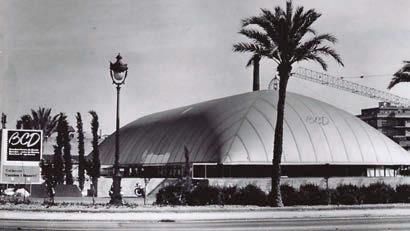
On the other hand, Algavoltaica seeks to develop a panel with algae for facades, so that it integrates nature in cities, producing energy and food, such as spirulina, and providing climate benefits to buildings thanks to its shading system.
The panel will be equipped with an interface in which the user will be able to monitor the health of the algae and the production of energy with a battery will accumulate the energy generated.
In addition, the panel design will be parametric and its parts produced through digital fabrication, which includes 3D printing. The intrinsic objectives of the project are,
apart from producing green energy, decarbonizing urban areas thanks to a façade system that can optimize the ability of algae to transform CO2 into oxygen, promoting research into new sources of energy production and promoting the production of supernutrients in urban areas.
50 years of BcD
In 2023, the Barcelona Design Center celebrates the 50th anniversary of its creation in 1973. At a time when our country was beginning to open up to the world, a sector of Barcelona society saw the need to give design the importance it had in other cities in Europe, as is the case in London with the Design Council, founded in 1944. A group of designers, with the support of businessmen, founded the Barcelona Industrial Design Center, which would later become the Barcelona Design Center Foundation, a promotion center to value design, both in the industrial field and business and in society, as well as to promote the meeting between design professionals and companies, and face the new challenge of international competitiveness and foreign trade.
These 50 years have been very prolific, with thousands of activities, projects, awards, exhibitions, conferences, workshops or festivals; They have collaborated with many local and international entities and have taken Barcelona's design to more than 30 countries.
75 NOTICIAS I NEWS
Sede de Barcelona centre de Disseny, 1974. Headquarters of the Barcelona Design Center, 1974.
José Francisco Hernández Perona
Director General y Financiero General and Financial Director
Juver Alimentación SLU
Juver es una compañía murciana dedicada a la fabricación, producción, distribución, transporte, almacenamiento y comercialización de zumos, néctares, bebidas de frutas, conservas vegetales y frutales. Pertenece al Grupo Conserve Italia, la mayor cooperativa hortofrutícola de Europa. Juver is a Murcian company dedicated to the manufacture, production, distribution, transport, storage and marketing of juices, nectars, fruit drinks, vegetable and fruit preserves. It belongs to the Conserve Italia Group, the largest fruit and vegetable cooperative in Europe.
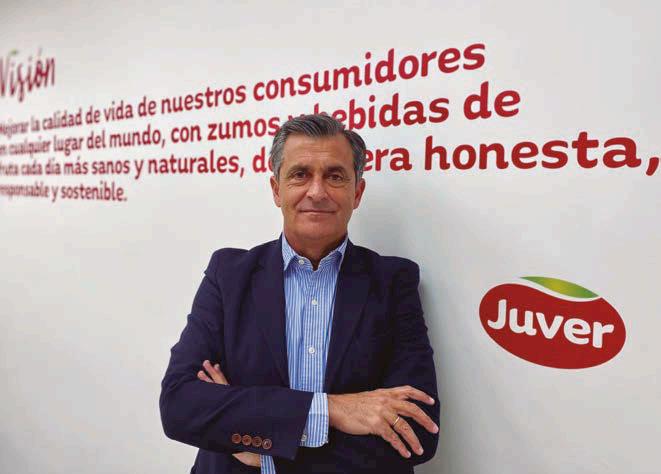
76 ENTREVISTA I INTERVIEW
«Una de nuestras prioridades es tener una industria ecoeficiente»
"One of our priorities is to have an eco-efficient industry"
Juver Alimentación cuenta con más de 60 años. ¿Qué balance realizan? ¿Ha cambiado mucho el sector?
Se ha profesionalizado mucho. Las razones principales son el proceso constante de innovación, la regulación y seguridad alimentaria y, por último, la sostenibilidad. Ello supone que cada vez somos menos actores y con un volumen elevado de zumos envasados.
Están especializados en zumos, bebidas de frutas, conservas vegetales y frutales. ¿Cuál es su posicionamiento actual en el mercado?
En península, estamos en una categoría que, dentro del gran consumo, la marca blanca tiene una cuota en torno al 65 %, de la que nosotros envasamos más del 26 % Como marca Juver, en retail somos lideres en el segmento de néctares sin azúcar, y también lideres en Horeca.
¿Qué sinergias se establecen con el Grupo Conserve Italia?
Nuestros socios son una gran empresa cooperativa italiana, con un volumen de ventas superior a los 750 mill. y lideres en el segmento de zumos y en tomate en conserva. Tenemos mucho que aprender en innovación, calidad alimentaria y estrategia. Por nuestra parte, colaboramos cubriendo parte de sus necesidades de fruta fresca de campaña.
¿Cuáles son sus referencias más vendidas?
La gama de néctares sin azúcar (Disfruta) es la más vendida.
¿Qué ha supuesto la eliminación del plástico del embalaje secundario de sus minizumos?
La reducción de un 75 % del consumo de plástico para retractilado en las producciones del formato minibrik.
¿Todos los tapones de sus zumos en brick son de caña de azúcar?
En la marca Juver, sí. Y las pajitas de papel.
¿Qué medidas están implementando a favor de una producción más sostenible?
En 2022, hemos reducido el plástico con varias medidas: eliminación del retráctil de caja de todas las referencias marca Juver y marca de distribuidor fabricadas en brik; utilización de retráctil con 50 % de reciclado
en botella y botellín; eliminación del retráctil de los packs de minibrik de todas las referencias de marca Juver y algunas de marca de distribuidor y utilización del plástico con 50 % de reciclado en los packs 3 y 6 de marca de distribuidor. Además, también hemos llevado a cabo medidas para el consumo energético y emisiones, como el uso de energía eléctrica de origen 100 % renovable certificada y la ampliación de la instalación fotovoltaica, pasando del 12 al 16 % de la energía eléctrica consumida en régimen de autoconsumo y aumentando en un 25 % las toneladas evitadas. Asimismo, hemos obtenido el registro de nuestra huella de carbono en el Registro de huella de carbono, compensación y proyectos de absorción de CO2 del Ministerio para la Transición Ecológica y el Reto Demográfico. Respecto a la valorización de residuos, hemos aumentado el porcentaje generado por Juver, pasando del 94 al 99 %.
¿Cuáles son las prioridades para el futuro? Tener una industria ecoeficiente: continuar con la reducción y valorización de residuos, reducir
el consumo de agua y energía y ampliar la instalación fotovoltaica. También tenemos planes de movilidad sostenible y cálculo de la huella (categoría 4) para el transporte.
En cuanto a los envases, ¿en que están trabajando para que sean más sostenibles?
En aperturas sostenibles (tapones unidos al envase) y la reducción de la huella de carbono de los envases primarios, aumentando los materiales de origen sostenible e introduciendo material reciclado en el envase primario. Además, estamos mejorando el diseño en envases primarios para fomentar el reciclaje y la renovabilidad.
Respecto a la valorización y circularidad en residuos, estamos llevando a cabo el proyecto bioplásticos Cycleplastic, que consiste en la transformación de nuestros residuos orgánicos (lodos de depuradora) en bioplásticos biodegradables, financiado por el Fondo Europeo Agrícola de Desarrollo Rural (FEADER).
Juver Alimentación has more than 60 years. What balance do you make? Has the sector changed a lot?
It has become very professional. The main reasons are the constant process of innovation, food regulation and safety and, lastly, sustainability. This means that we are fewer and fewer players and with a high volume of packaged juices.
Juver is specialized in juices, fruit drinks, vegetable and fruit preserves. What is your current position in the market?
On the peninsula, we are in a category in which, within mass consumption, the private label has a share of around 65%, of which we bottle more than 26% As a Juver brand, in retail we are leaders in the segment of sugarfree nectars , and also leaders in Horeca.
What synergies are established with the Conserve Italia Group?
Our partners are a large Italian cooperative company, with a sales volume of more than 750 mill. and leaders in the segment of juices and canned tomato. We have a lot to learn in innovation, food quality and strategy. For our part, we collaborate by covering part of their needs for fresh seasonal fruit.
NPFOOD 77 ENTREVISTA I INTERVIEW
La eliminación del plástico del embalaje secundario de sus minizumos ha supuesto la reducción de un 75 % del consumo de plástico para retractilado en la producción del minibrik
‘
The elimination of plastic from the secondary packaging of its minijuices has led to a 75% reduction in the consumption of plastic for shrink-wrapping in the production of the minibrik
What are your most sold references?
The range of sugar-free nectars (Disfruta) is the best seller.
What has the elimination of plastic from the secondary packaging of the mini-juices meant?

A 75% reduction in the consumption of plastic for shrink wrapping in minibrik format productions.
Are all the caps of the brick juices made from sugar cane?
In the Juver brand, yes. And with paper straws.
What measures are you implementing in favor of a more sustainable production?
In 2022, we have reduced plastic with several measures: elimination of the box shrink wrap for all Juver brand and private label references manufactured in bricks; use of shrink wrap with 50% recycling in bottles and small bottles; Elimination of shrink wrap from minibrik packs of all Juver brand references and some private label and use of 50% recycled plastic in private label packs 3 and 6. In addition, we have also carried out measures
for energy consumption and emissions, such as the use of electrical energy of 100% certified renewable origin and the expansion of the photovoltaic installation, going from 12 to 16% of the electrical energy consumed in a self-consumption regime. and increasing the tons avoided by 25%. Likewise, we have obtained the registration of our carbon footprint in the Registry of carbon footprint, compensation and CO2 absorption projects of the Ministry for the Ecological Transition and the Demographic Challenge. Regarding waste recovery, we have increased the percentage generated by Juver, from 94 to 99%.
What are the priorities for the future?
Have an eco-efficient industry: continue with the reduction and recovery of waste, reduce water and energy consumption and expand the photovoltaic installation. We also have
sustainable mobility plans and calculation of the footprint (category 4) for transport.
Regarding packaging, what are you working on to make it more sustainable?
In sustainable openings (caps attached to the container) and the reduction of the carbon footprint of primary packaging, increasing the materials of sustainable origin and introducing recycled material in the primary packaging. In addition, we are improving the design in primary packaging to encourage recycling and renewability.
Regarding the recovery and circularity of waste, we are carrying out the Cycleplastic bioplastics project, which consists of transforming our organic waste (sewage sludge) into biodegradable bioplastics, financed by the European Agricultural Fund for Rural Development (EAFRD).
78 ENTREVISTA I INTERVIEW
Estamos trabajando en la reducción de la huella de carbono de los envases primarios, aumentando los materiales de origen sostenible e introduciendo material reciclado
‘
We are working on reducing the carbon footprint of primary packaging, increasing sustainably sourced materials and introducing recycled material
LA PRIMERA MANZANA ADAPTADA A LOS CLIMAS MÁS CÁLIDOS LLEGA AL MERCADO THE FIRST APPLE ADAPTED TO WARMER CLIMATES HITS THE MARKET
Con el nombre comercial de Tutti, la primera manzana adaptada a los climas cálidos es resultado del Hot Climate Partnership (HCP), un programa de mejora de variedades iniciado en 2002 por el IRTA, una asociación de los principales productores de manzana y pera de Cataluña, y un centro de investigación neozelandés. Roja, dulce, crujiente y jugosa, la variedad HOT84A1 es fruto de más de veinte años de trabajo y se trata de la primera de fruta de semilla registrada que ha surgido del HCP. El objetivo del HCP es producir nuevas variedades «más adaptadas a unos veranos cada vez más calurosos, y que satisfagan las necesidades de productores, comercializadores y consumidores», explica Joan Bonany, especialista del IRTA. With the commercial name of Tutti, the first apple adapted to hot climates is the result of the Hot Climate Partnership (HCP), a variety improvement program started in 2002 by IRTA, an association of the main apple and pear producers in Catalonia, and a New Zealand research center. Red, sweet, crunchy and juicy, the HOT84A1 variety is the result of more than twenty years of work and is the first registered seed fruit to emerge from the HCP. The objective of the HCP is to produce new varieties "more adapted to increasingly hot summers, and that satisfy the needs of producers, marketers and consumers", explains Joan Bonany, specialist at IRTA.
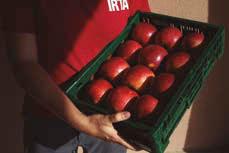
ENTREGA DEL PREMIO «FUNDACIÓN VICKY FOODS A LA INVESTIGACIÓN EN NUTRICIÓN Y SALUD» DELIVERY OF THE "VICKY FOODS FOUNDATION FOR RESEARCH IN NUTRITION AND HEALTH" AWARD
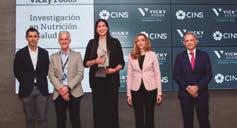
La Fundación Vicky Foods y el Centro de Innovación en Nutrición y Salud de la compañía (CINS) entregaron el premio en un acto que contó con la presencia de Isaura Navarro, consellera de Agricultura, Desarrollo Rural, Emergencia Climática y Transición Ecológica. El proyecto ganador, con una dotación económica de 10.000 euros, fue el trabajo de investigación «Reformulación de productos de bollería/pastelería más saludables y sostenibles» elaborado por Katherine Gutiérrez Luna, ingeniera en agroindustria alimentaria en la Universidad de Navarra. Este premio reconoce la labor de la investigación y su desarrollo en el campo de la innovación tecnológica para la producción y aprovechamiento de productos.
The Vicky Foods Foundation and the company's Center for Innovation in Nutrition and Health (CINS) presented the award at an event attended by Isaura Navarro, Minister of Agriculture, Rural Development, Climate Emergency and Ecological Transition. The winning project, with an economic endowment of 10,000 euros, was the research work "Reformulation of healthier and more sustainable pastry/pastry products" prepared by Katherine Gutiérrez Luna, a food agribusiness engineer at the University of Navarra. This award recognizes the work of research and its development in the field of technological innovation for the production and use of products.
79 ACTUALIDAD I NEWS
NPFOOD
SOSTENIBILIDAD/SUSTAINABILITY
AMBAR ELABORARÁ SU CERVEZA CON ENERGÍA SOLAR AMBAR WILL BREW ITS BEER WITH SOLAR ENERGY

El 25 % de la energía utilizada para la producción de la cerveza aragonesa Ambar será solar. Esta medida, además del ahorro en el consumo energético, evitará la emisión de 870 toneladas de CO2 anuales a la atmósfera.
La capacidad energética total de la planta es de 3.057 MWh/año y su conexión arrancará en varias fases hasta completarse la totalidad en marzo del 2023. En diciembre se ponen en marcha el 40 % de las placas ubicadas en los tejados de las naves de almacenaje, a las que seguirán luego las de envasado y filtrado hasta llegar a las 4000 unidades. Esta planta fotovoltaica es una de las instalaciones industriales más grandes de Aragón colocadas sobre techumbre en una extensión de 19500 metros cuadrados. La instalación de la planta fotovoltaica en la fábrica de Ambar en La Cartuja ha sido en colaboración con Endesa X. 25% of the energy used for the production of the Aragonese beer Ambar will be solar. This measure, in addition to savings in energy consumption, will prevent the emission of 870 tons of CO2 per year into the atmosphere. The total energy capacity of the plant is 3,057 MWh/year and its connection will start in several phases until it is fully completed in March 2023. In December, 40% of the panels located on the roofs of the storage buildings are put into operation , which will then be followed by packaging and filtering until reaching 4000 units. This photovoltaic plant is one of the largest industrial facilities in Aragon placed on roofs in an area of 19,500 square meters. The installation of the photovoltaic plant in the Ambar factory in La Cartuja has been in collaboration with Endesa X.
LA PLANTA DEL PRAT DE LLOBREGAT DE DAMM VALORIZA CERCA DEL 100 % DE SUS RESIDUOS THE EL PRAT DE LLOBREGAT DAMM PLANT RECOVERS CLOSE TO 100% OF ITS WASTE
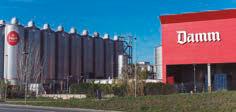
La Fábrica Damm de El Prat de Llobregat (Barcelona) sigue avanzando en su estrategia de integración y cumplimiento de los Objetivos de Desarrollo Sostenibles y consolida su modelo de economía circular, mediante el cual la planta valoriza anualmente hasta el 97 % de los residuos generados por su actividad productiva. Este hito ha permitido al centro de producción de Damm recibir el certificado Residuo Cero que otorga AENOR.
Esta importante distinción reconoce a las organizaciones que valorizan al menos el 90 % de sus fracciones de residuos, dándoles una segunda vida y evitando así que tengan como destino final el vertedero. La gestión organizada de los residuos permite que estos puedan ser reutilizados y/o transformados en materias primas. The Damm Factory in El Prat de Llobregat (Barcelona) continues to advance in its strategy of integration and compliance with the Sustainable Development Goals and consolidates its circular economy model, through which the plant annually values up to 97% of the waste generated by its productive activity. This milestone has allowed the Damm production center to receive the Zero Waste certificate granted by AENOR. This important distinction recognizes organizations that value at least 90% of their waste fractions, giving them a second life and thus avoiding landfills as their final destination. The organized management of waste allows it to be reused and/or transformed into raw materials.
80 ACTUALIDAD I NEWS
SOSTENIBILIDAD/SUSTAINABILITY
GRUPO BIMBO HA SIDO RECONOCIDA POR LA ORGANIZACIÓN NO GUBERNAMENTAL CDP GRUPO BIMBO HAS BEEN RECOGNIZED BY THE NON-GOVERNMENTAL ORGANIZATION CDP
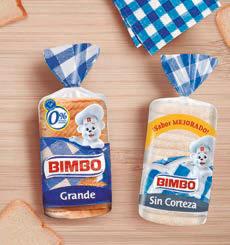
Grupo Bimbo ha sido reconocida y premiada por la organización no gubernamental Carbon Disclosure Project (CDP, por sus siglas en inglés) por sus acciones a nivel global para mitigar los efectos del cambio climático. La compañía ha alcanzado la calificación A, la máxima puntuación y calificación más alta del ranking The A List 2022.
En el listado de este año, donde participaron más de 15.000 compañías globales de diferentes industrias, solamente un 2 % (283 empresas) poseen una A en la categoría de Cambio Climático.
Grupo Bimbo has been recognized and awarded by the non-governmental organization Carbon Disclosure Project (CDP) for its global actions to mitigate the effects of climate change. The company has achieved an A rating, the highest score and highest rating in The A List 2022 ranking. In this year's list, where more than 15,000 global companies from different industries participated, only 2% (283 companies) have an A in the Climate Change category.
LA CIRCULARIDAD DE ENVASES NECESITA CONSENSO E IMPULSO DE LA COLABORACIÓN PÚBLICO-PRIVADA THE CIRCULARITY OF PACKAGING NEEDS CONSENSUS AND PROMOTION OF PUBLIC-PRIVATE COLLABORATION
La circularidad de los envases es uno de los mayores retos a los que se enfrenta la sociedad desde el punto de vista medioambiental. La transición hacia un modelo productivo más sostenible y justo es necesaria para garantizar la salud del planeta y de las personas a largo plazo. Para lograrlo, la cooperación entre empresas y esfera pública es imprescindible. Esta fue una de las principales conclusiones del acto institucional celebrado con motivo de la inauguración de la segunda planta de selección de envases del proyecto ReNueva de Danone. El encuentro contó con la presencia de Hugo Morán, secretario de Estado de Medioambiente del Gobierno y François Lacombe, director general de Danone Iberia, entre otras autoridades. The circularity of packaging is one of the biggest challenges facing society from an environmental point of view. The transition towards a more sustainable and fair production model is necessary to guarantee the health of the planet and people in the long term. To achieve this, cooperation between companies and the public sphere is essential. This was one of the main conclusions of the institutional act held on the occasion of the inauguration of the second packaging selection plant of the Danone ReNueva project. The meeting was attended by Hugo Morán, Secretary of State for the Government's Environment, and François Lacombe, General Director of Danone Iberia, among other authorities.

81 ACTUALIDAD I NEWS
NPFOOD
François Lacombe.
El nuevo envase presenta una revisión completa, con un logotipo, unos gráficos, un diseño y un elegante cierre de metal. El sellado de alta calidad y la protección óptima de los cierres metálicos de Eviosys garantizan la conservación del sabor. Eviosys ha acompañado a Barilla en su transición hacia este nuevo diseño de envase premium con cierre optimizado, incluyendo la instalación de nuevas máquinas taponadoras en su planta de pesto. The new container presents a complete review, with a logo, some graphics, an design and an elegant metal closure. High quality sealing and optimal protection of Eviosys metal closures guarantee flavor conservation.
Eviosys has accompanied Barilla in his transition to this new premium container design with optimized closure, including the installation of new plugging machines on his pesto plant.
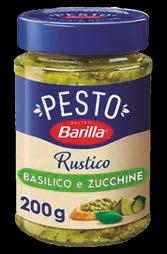

foodies
Chips Premium sabor queso y trufa de Frit Ravich
Frit Ravich Cheese and Trufa
Premium Chips
Frit Ravich amplía su gama Premium con una edición especial de Chips Premium de Queso curado y Trufa negra elaboradas en colaboración con la Escuela MasterChef.
Las nuevas Chips Premium han sido elaboradas a partir de patatas de origen 100 % nacional, fritas a baja temperatura para conseguir una textura más crujiente. Frit Ravich expands its premium range with a special edition of Premium Curo and Black Trufa Premium chips made in collaboration with the Masterchef School. The new Premium chips have been made from potatoes of 100% national origin, low temperature fries to get a more crispy texture.
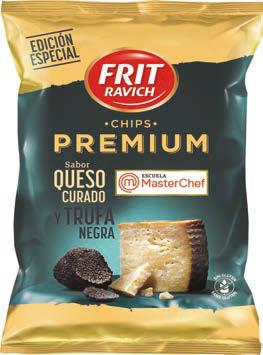
’
82 FOODIES I NEWS
Eviosys y Barilla se asocian para la renovada gama Pesto Eviosys and Barilla are associated for the renewed pesto range
02
’ 01
’Novedades en Alimentación y Bebidas New in Food and Beverages
’ 03
Los vinos Pasión de Bodega Sierra Norte renuevan su imagen
The Pasión wines of Bodega Sierra Norte renew their image
Bodega Sierra Norte ha decidido darle un nuevo estilo al árbol con corazones de la etiqueta de los vinos Pasión. Ahora, está en un bosque con otros árboles, que para la bodega simbolizan cómo esta marca, que empezó con un único vino, Pasión de Bobal tinto, fue creciendo e incorporando otras referencias. Todos, vinos monovarietales elaborados con variedades autóctonas de la Comunitat Valenciana. La etiqueta incorpora, además, la silueta de pequeñas aves, con las que Sierra Norte quiere mostrar su compromiso con la biodiversidad. Algo que pone en práctica a diario en el cuidado de sus viñedos, donde trabajan siguiendo los criterios de la agricultura ecológica. Bodega Sierra Norte has decided to give a new style to the tree with hearts of the passion wines label. Now, it is in a forest with other trees, which for the winery symbolize how this brand, which began with a single wine, Passion of Bobal Red, was growing and incorporating other references. All, monovarietal wines made with native varieties of the Valencian Community. The label also incorporates the silhouette of small birds, with which Sierra Norte wants to show its commitment to biodiversity. Something that puts into practice daily in the care of their vineyards, where they work following the criteria of organic farming.

Quesos TGT lanza launches Mon a Muu Emmental Francés French Emmental

Quesos TGT, líder nacional en la producción y elaboración de productos lácteos, presenta Mon a Muu Emmental Francés en formato rallado y taco. Este queso es uno de los más populares en Francia. Conocido por su suave sabor y alto valor nutritivo, el Emmental se elabora con leche pasteurizada de vaca y es cuidadosamente madurado entre 3 y 6 meses. Tiene un toque a nuez y se caracteriza por los agujeros u ojos redondeados en la pasta. TGT cheeses, national leader in the production and elaboration of dairy products, presents a French Emmental Emmental in grated format and taco. This cheese is one of the most popular in France. Known for its soft flavor and high nutritional value, the emmental is made with pasteurized cow's milk and is carefully matured between 3 and 6 months. It has a walnut touch and is characterized by the holes or rounded eyes in the paste.

83 FOODIES I NEWS
NPFOOD foodies
’ 04
’Novedades en Alimentación y Bebidas New in Food and Beverages
foodies
Mondi colabora con Noel Alimentaria para reducir el uso de plástico en los envases Mondi collaborates with feeding
to reduce the use of plastic in the containers
Noel
Mondi se ha asociado con Noel Alimentaria, apoyándole en su apuesta por una solución basada en papel para su gama de alimentos vegetales y cárnicos, que reduzca en gran medida el uso de plástico. Para envasar su nueva gama de alimentos de origen vegetal y hamburguesas vegetarianas Verday, Noel Alimentaria ha elegido la bandeja de papel formable PerFORMing de Mondi. Proporciona una fuerte barrera de protección contra la humedad y el oxígeno, manteniendo los alimentos frescos. Las bandejas están compuestas en un 80 % de papel y están diseñadas para su reciclaje. Mondi has associated with Noel Food, supporting him in his commitment to a paper -based solution for his range of plant and meat foods that largely reduces the use of plastic.
To package its new range of food from plant origin and vegetarian hamburgers verday, Noel Food has chosen the Mondi Performing Paper Tray. It provides a strong protection barrier against moisture and oxygen, keeping fresh food. The trays are composed of 80 % of paper and are designed for recycling.

Reviving Origins Congo Organic, el primer café Reviving Origins de la gama Nespresso Professional the first coffee Reviving Origins of the Nespresso Professional range

Se trata de un café ecológico, que se suma a Perú Organic y Colombia Organic, variedades orgánicas de su gama Nespresso Professional. Es suave, de intensidad 7, con notas de cereales dulces tostados, aroma de frutos secos y un ligero matiz afrutado. Estará disponible para los clientes como variedad estacional este año, pero pasará a formar parte de la gama permanente a partir de febrero 2024.
It is an ecological coffee, which adds to Peru Organic and Colombia Organic, organic varieties of its Nespresso Professional range. It is soft, intensity 7, with roasted sweet cereals, aroma of nuts and a slight fruity nuance. It will be available for customers as a seasonal variety this year, but will become part of the permanent range from February 2024.
’ 05
’
’ 06 84 FOODIES I NEWS
Novedades en Alimentación y Bebidas New in Food and Beverages
PREMIOS IDERMO’23
Vuelven
PREMIOS IDERMO MEJORES PRODUCTOS DERMOCOSMÉTICOS Y OTC
QUEREMOS QUE TÚ SEAS EL JURADO
Mejor Producto Facial
Mejor Producto Antiedad
Mejor Producto Antimanchas
Mejor Producto Contorno de ojos
Mejor Producto Labial

Mejor Producto Corporal
Mejor Producto Anticelulítico
Mejor Producto Pieles Atópicas
Mejor Producto Íntimo
Mejor Producto Solar

Mejor Producto Capilar
Mejor Producto Infantil
Mejor Producto Color

Mejor Producto OTC
Mejor Producto Ocular
Mejor Producto para Deportistas
Mejor Producto Nutricosmético
Mejor Comunicador


Mejor Farmacéutico 2.0
Premios iDermo para premiar los Mejores Productos Dermocosméticos y OTC del mercado español.
¡NO DEJES A TU PRODUCTO SIN PREMIO!
CIERRE INSCRIPCIONES: 15/04/2023
JURADO: CONSUMIDORES, BLOGUEROS Y FARMACÉUTICOS
PRODUCTOS INSCRITOS: MÁXIMO DE 2 PRODUCTOS POR MARCA, CADA PRODUCTO PODRÁ ESTAR INSCRITO EN 2 CATEGORÍAS DISTINTAS + PACKAGING, INNOVACIÓN O SOSTENIBILIDAD
REQUISITOS: FICHA DEL PRODUCTO EN IDERMO O EN FARMASELECT

ABIERTAS INSCRIPCIONES
i DERMO.COM 15/04 HASTA EL
i DERMO.COM
ADF, PCD, PLD y Packaging Première, dedicada al packaging en el mundo del lujo, alimentación gourmet, complementos, joyería y moda, han reforzado su posición como evento líder mundial en envases e innovación en belleza, lujo, bebidas y aerosoles. Por primera vez, este evento internacional, organizado por Easyfairs, reunió, los días 25 y 26 de enero, cuatro grandes exposiciones de innovación de envases: PCD para productos de belleza, PLD para bebidas premium, ADF para aerosoles y sistemas de dosificación, y el nuevo Packaging Première para productos de lujo.

Este evento atrajo a 12.747 participantes durante dos días, con un récord de 8.988 visitantes, que representa un aumento del 30 % en comparación con las ediciones de junio de 2022 y enero de 2020, representando a más de 2.500 marcas y agencias de diseño.
Más de 100 oradores influyentes
Los temas clave de este año incluyeron: los últimos desarrollos en la sostenibilidad de los envases; resolver problemas de suministro en el entorno inflacionario; integrar la inclusión y diversidad en el diseño de envases; e inteligencia artificial y su papel en el diseño. También se exploraron cuestiones reglamentarias en torno a los plásticos y los envases de un solo uso.
Finalmente, con el packaging sostenible en el corazón de las preocupaciones de las marcas, los Eco-Tours fueron muy populares, lo que permitió a las marcas y proveedores conectarse y crear los productos que darán forma al futuro.
Premios a la Innovación ADF, PCD y PLD
Los premios fueron una vez más un punto culminante. Los 27 ganadores de los concursos de 2023 se dieron a conocer en ceremonias muy concurridas. Sus innovaciones, así como las de los 55 finalistas, se exhibieron en la Galería de Premios a la Innovación.
Los ganadores de los Premios de los tres jurados fueron: ver versión en inglés
También hubo dos concursos de innovación para estudiantes, uno realizado en alianza con ESEPAC y ESP y otro con los estudiantes de packaging de ESIReims. Los visitantes también se inspiraron en el diseño de envases visitando la galería Pentawards, que reunió lo mejor del diseño en este campo, con una representación de las creaciones de sus ganadores de 2023. La próxima Paris Packaging Week tendrá lugar los días 17 y 18 de enero de 2024 en Paris Expo Porte de Versailles.
ADF, PCD, PLD and Packaging Première, dedicated to packaging in the world of luxury goods, fine foods, accessories, jewellery and fashion, has reinforced its position as the world’s leading packaging event in beauty, luxury, drinks and aerosol innovation. For the first time, this international event, organised by Easyfairs, brought together, on January 25 and 26, four major packaging innovation exhibitions: PCD for beauty products, PLD for premium drinks, ADF for aerosols and dispensing systems, and the new Packaging Première for luxury products. This key event in the packaging calendar attracted 12,747 participants over two days, including a record 8,988 visitors, an increase of 30% compared to the June 2022 and January 2020 editions, representing more than 2,500 brands and design agencies.
More than 100 influential speakers
This year’s key topics included: the latest developments in packaging sustainability; solving supply issues in the inflationary environment; integrating inclusivity and diversity in packaging design; and artificial intelligence and its role in design. Regulatory issues around plastics and single-use packaging were also explored. Finally, with sustainable packaging at the heart of brands concerns, the Eco-Tours were very popular, allowing brands and suppliers to connect and create the products that will shape the future.
The ADF, PCD and PLD Innovation Awards
The awards were once again a highlight. The 27 winners of the 2023 competions were unveiled at well-attended ceremonies. Their innovations, as well as those of all 55 finalists, were showcased in the Innovations Awards Gallery. The winners of the Awards from the three juries were:
ADF Innovation Awards
- Biore U The Body - Kao
- Paco Rabanne Fame Deodorant - Envases Group and Puig
- Refillable Bag-on-Valve - Coster Group
- Foil2Can - Tubex and Isimat GmbH
Siebdruckmaschinen
- Eco Dropper - Yonwoo
- CG-HP40 Multigun - Novatech and Altachem and Lindal Group
PCD Innovation Awards
- Armani Code Le Parfum - L’Oréal
- L’Eau D’Issey Pour Homme - Eau&CèdreShisiedo and Quadpack
- Paco Rabanne Fame - Puig
- Dries Van Noten - Puig
- Les Exclusifs Coffret d’Exception Extrait Sycomore - Chanel Parfums Beauté
- MAC Holiday 2022 Advent Calendar - The Estée Lauder Companies and Knoll Packaging
- Mascara Noir Allure - Chanel Parfums Beauté
- Rouge Allure Extrait Lipstick - Chanel Parfums Beauté
- Elgydium Bio - Pierre Fabre
- Dispenser With Ultralight Sustainable EcorefillL’Occitane En Provence
- Future Fully Recyclable and Mono-Material Pump - Dermalogica and Aptar Beauty + Home
- N°1 De Chanel Crème Revitalisante - Chanel Parfums Beauté
ADF Innovation Awards
- Biore U The Body - Kao
- Paco Rabanne Fame Deodorant - Envases Group and Puig
86 FERIAS I TRADE FAIRS & EVENTS
Paris Packaging Week refuerza su posición y aumenta un 30% el número de visitantes reinforces its position and visitor numbers rise 30%
- Refillable Bag-on-Valve - Coster Group
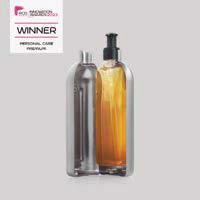

- Foil2Can - Tubex and Isimat GmbH
Siebdruckmaschinen
- Eco Dropper - Yonwoo


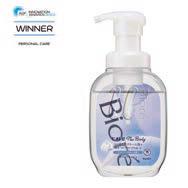
- CG-HP40 Multigun - Novatech and Altachem and Lindal Group
PLD Innovation Awards
- Degustation Kit Perrier-Jouët - Pernod Ricard
- Havana Club 7 Años x Burna Boy Limited VIP Edition - Havana Club, Pernod Ricard
- Découverte Perpétuelle, Distillerie Piron - Maison Linéa
- Single Malt Whisky Loyal Bandit, Draup SpiritsMaison Linéa
- Noblige - Martell, Pernod Ricard
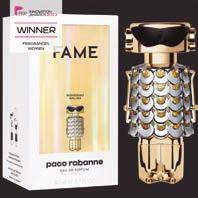
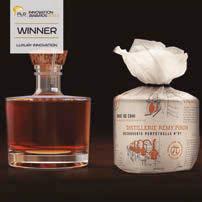
- Etui Crayères Dom Ruinart - Dom Ruinart, Pusterla 1880 and James Cropper
- Alfred & Joe - Edmond de Rothschild and SAS Bemad
- Veuve Clicquot Ice Jacket - Veuve Clicquot and ATS
- Dom Pérignon x Lady Gaga End of Year EditionDom Pérignon and Pusterla 1880
- XO End of Year 22-23 Edition - Rémy Martin, Groupe Rémy Cointreau and Hucais Packing Arts Europe
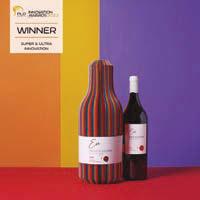
There were also two student innovation competitions, one conducted in partnership with ESEPAC and ESP and another with packaging students from ESIReims.
Visitors were also inspired by packaging design by visiting the Pentawards gallery, which brought together the best of design in this field, with a presentation of the creations of their 2023 winners.
The next Paris Packaging Week will take place on 17 and 18 January 2024 at Paris Expo Porte de Versailles.
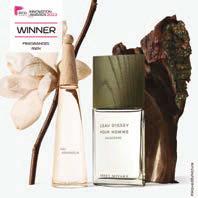
87 FERIAS I TRADE FAIRS & EVENTS
Del 25 al 27 de abril, se celebra la tercera edición de Pick&Pack, el evento boutique de innovación para todos los profesionales de industrias como la alimentación y bebidas, automoción, textil, retail, farmacéutica, cosmética y belleza, o electrónica, que buscan las últimas soluciones en packaging, intralogística y logística. El evento reunirá a más de 6.000 profesionales de todo el país que convertirán Madrid en el mayor punto de encuentro para los actores que forman parte de la cadena de valor del envasado, el picking y la distribución. Marina Uceda, directora de Pick&Pack, y Ana Fernández, directora de publicidad área gran consumo en Publicaciones Alimarket, compartieron las novedades de Pick&Pack 2023, que tendrá lugar en IFEMA Madrid. Por primera vez, el foro contará con el Summit de Sostenibilidad y Circularidad, que tiene por objetivo explicar detalladamente los cambios que se están implementando en las industrias del packaging, la intralogística y la logística para cumplir con las nuevas regulaciones europeas y contribuir a la descarbonización. El Congreso Nacional de Packaging 4.0, además de analizar un envasado más sostenible, pondrá el foco en la innovación a partir del Smart packaging, de ejemplos de metaverso en la industria o de conceptos de negocio que han triunfado y que surgieron del talento emprendedor, como Glovo, Food for Joe o Re-pot market. Igualmente, el Congreso ahondará en la ley sobre etiquetado inclusivo que está trabajando el Gobierno, de la mano del caso de éxito de Kellog y NaviLens, y reflexionará sobre lo que está por venir en packaging este 2023 junto a representantes de Aimplas, Tetra Pak, SP Group, Vichy Catalan Corporation y Antalis Iberia.
Además, Pick&Pack acogerá el VII Encuentro Alimarket Soluciones de Envasado para Gran Consumo y el X Encuentro Alimarket Logística Gran Consumo.
También se celebrará el European Logistics Summit y, por primera vez, la jornada técnica de UNO. Asimismo, AERCE organizará una jornada profesional.
Junto a la zona congresual, Pick&Pack 2023 congregará a más de 180 firmas expositoras, que mostrarán las últimas soluciones en robótica logística, rastreabilidad, supply chain, etiquetaje y codificación, y embalajes y materiales para packaging. Pick&Pack contará también con diferentes actividades de networking, como el Leadership Summit, los Smart Logistics & Packaging Awards 2023, o Startup Forum.
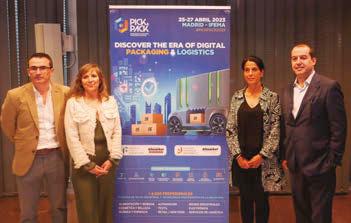
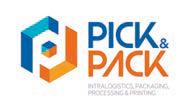
From April 25 to 27, the third edition of Pick&Pack is held, the innovation boutique event for all professionals in industries such as food and beverages, automotive, textiles, retail, pharmaceuticals, cosmetics and beauty, or electronics, who are looking for the latest solutions in packaging, intralogistics and logistics. The event will bring together more than 6,000 professionals from all over the country who will turn Madrid into the largest meeting point for the actors that are part of the packaging, picking and distribution value chain. Marina Uceda, director of Pick&Pack, and Ana Fernández, director of mass consumption area advertising at Alimarket Publications, shared the news of Pick&Pack 2023, which will take place at IFEMA Madrid. For the first time, the forum will feature the Sustainability and Circularity Summit, which aims to explain in detail the changes that are being implemented in the packaging, intralogistics and logistics industries to comply with the new European regulations and contribute to decarbonisation. .
The National Congress of Packaging 4.0, in
addition to analyzing more sustainable packaging, will focus on innovation based on Smart packaging, examples of metaverse in the industry or successful business concepts that arose from entrepreneurial talent , such as Glovo, Food for Joe or Re-pot market. Likewise, Congress will delve into the law on inclusive labeling that the Government is working on, hand in hand with the success story of Kellog and NaviLens, and will reflect on what is to come in packaging this 2023 together with representatives of Aimplas, Tetra Pak, SP Group, Vichy Catalan Corporation and Antalis Iberia.
Pick&Pack will host the VII Alimarket Meeting of Packaging Solutions for Mass Consumption and the X Alimarket Logistics Mass Consumption Meeting. In addition, Pick&Pack 2023 will host the European Logistics Summit and, for the first time, the UNO technical conference. AERCE will also organize a professional day. Along with the congress area, Pick&Pack 2023 will bring together more than 180 exhibiting firms, which will show the latest solutions in logistics robotics, traceability, supply chain, labeling and coding, and packaging and packaging materials. Pick&Pack will also have different networking activities, such as the Leadership Summit, the Smart Logistics & Packaging Awards 2023, or the Startup Forum.
88 FERIAS I TRADE FAIRS & EVENTS
Más de 6.000 profesionales se reunirán en More than 6,000 professionals will meet at Pick&Pack













April
Salón Gourmets
Madrid, Spain
17-20 April 2023
www.ifema.es/salon-gourmets
Empack Porto//Logistics & Automation
Porto, Portugal
19-20 April 2023
www.empacklogisticsautomationporto.com-
Pick&Pack
Madrid, Spain
25-27 April 2023
www.pickpackexpo.com
May
Met Pack
Essen, Germany
2-6 May 2023
www.metpack.de/market-leader
Interpack
Düsseldorf, Germany
4-10 May 2023
www.interpack.com
Luxe Pack New York
New York, USA
10-11 May 2023
www.luxepacknewyork.com
Packaging Première & PCD
Milano, Italy
16-18 May 2023
www.packagingpremiere.it
Food4Future - Expo Foodtech
Bilbao, Spain
16-18 May 2023
www.expofoodtech.com
Free From Food & Health Ingredients
Barcelona, Spain
30-31 May 2023
https://barcelona.freefromfoodexpo.com
Equiplast
Barcelona, Spain
30 May-2 June 2023
www.equiplast.com
June
Organic Food Iberia
Madrid, Spain
7-8 June 2023
www.ifema.es/organic-food-iberia
Édition Spéciale Luxe Pack
Paris, France
7-8 June 2023
www.editionspeciale-luxepack.com
Expo Pack
Guadalajara, Mexico
13-15 June 2023
www.expopack.com.mx
September
33 IFSCC Congress
Barcelona, Spain
4-7 September 2023
www.ifscc2023.com
Labelexpo Europe

Brussels, Belgium
11-14 September 2023
www.labelexpo-europe.com
Alimentaria Foodtech
Barcelona, Spain
26-29 September 2023
www.alimentariafoodtech.com
October
Luxe Pack Monaco
Monaco
2-4 October 2023
www.luxepackmonaco.com
Sustainability in Packaging Europe
Barcelona, Spain
16-18 October 2023
www.sustainability-in-packaging.com
Cosmetorium
Barcelona, Spain
18-19 October 2023
www.cosmetorium.es
CPhI
Barcelona, Spain
24-26 October 2023
¡www.cphi.com/europe/
November
BrauBeviale
Nürnberg, Germany
14-16 November 2023
www.braubeviale.de
Empack Madrid/Logistics & Automation
Madrid, Spain
29-30 November 2023
www.empackmadrid.com
2024
Drupa
Düsseldorf, Germany
28 May-7June 2024
www.drupa.com
All4Pack
Paris, France
4-7 November 2024
www.all4pack.com
90 AGENDA I EVENTS

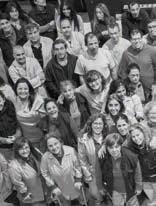
















Paper world
Paper is one of the most recycled products in the world
































































 Gabriel Morales
Gabriel Morales















































































































